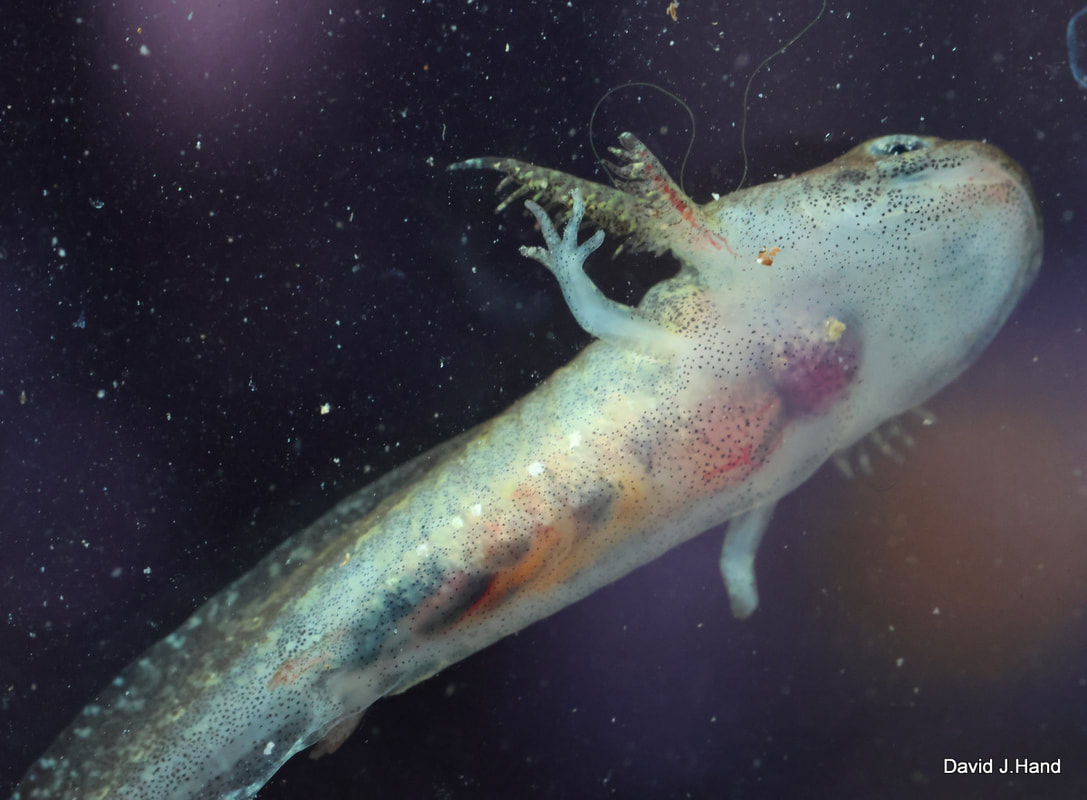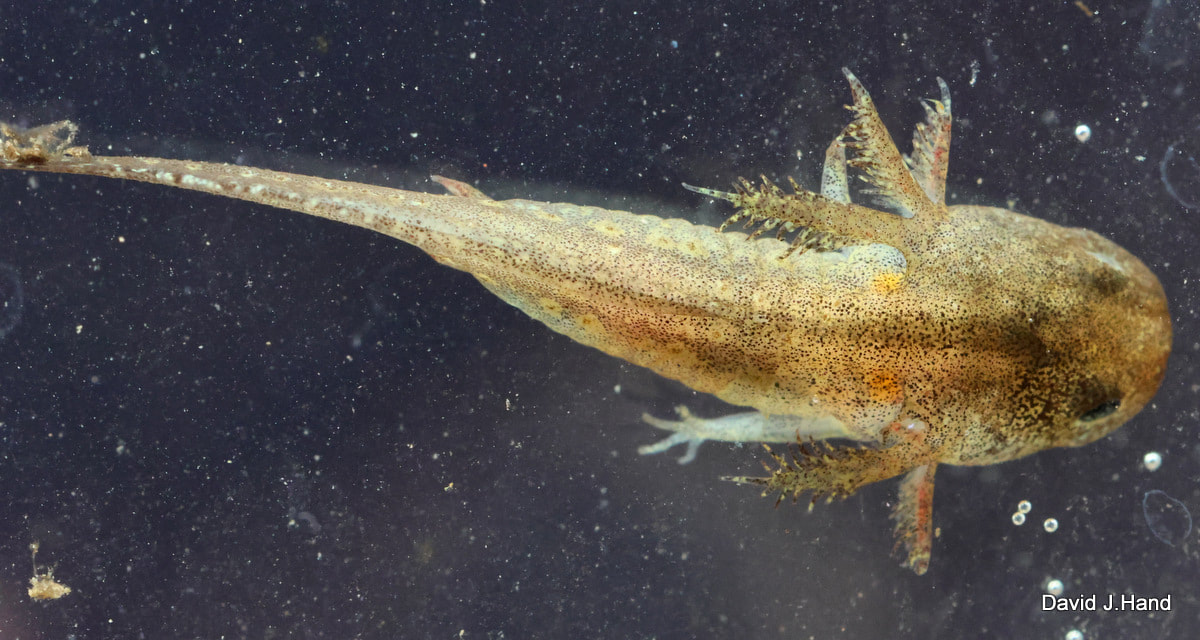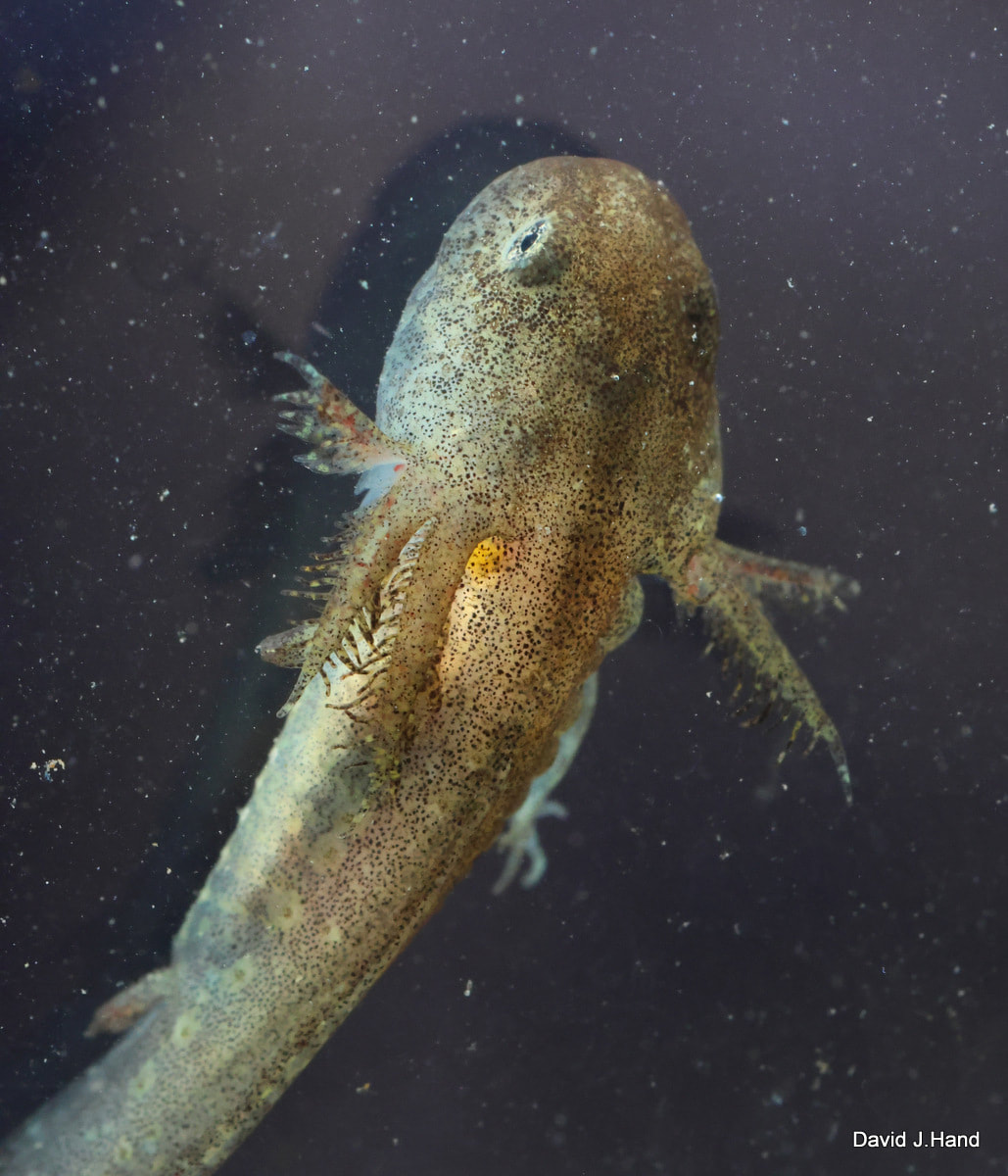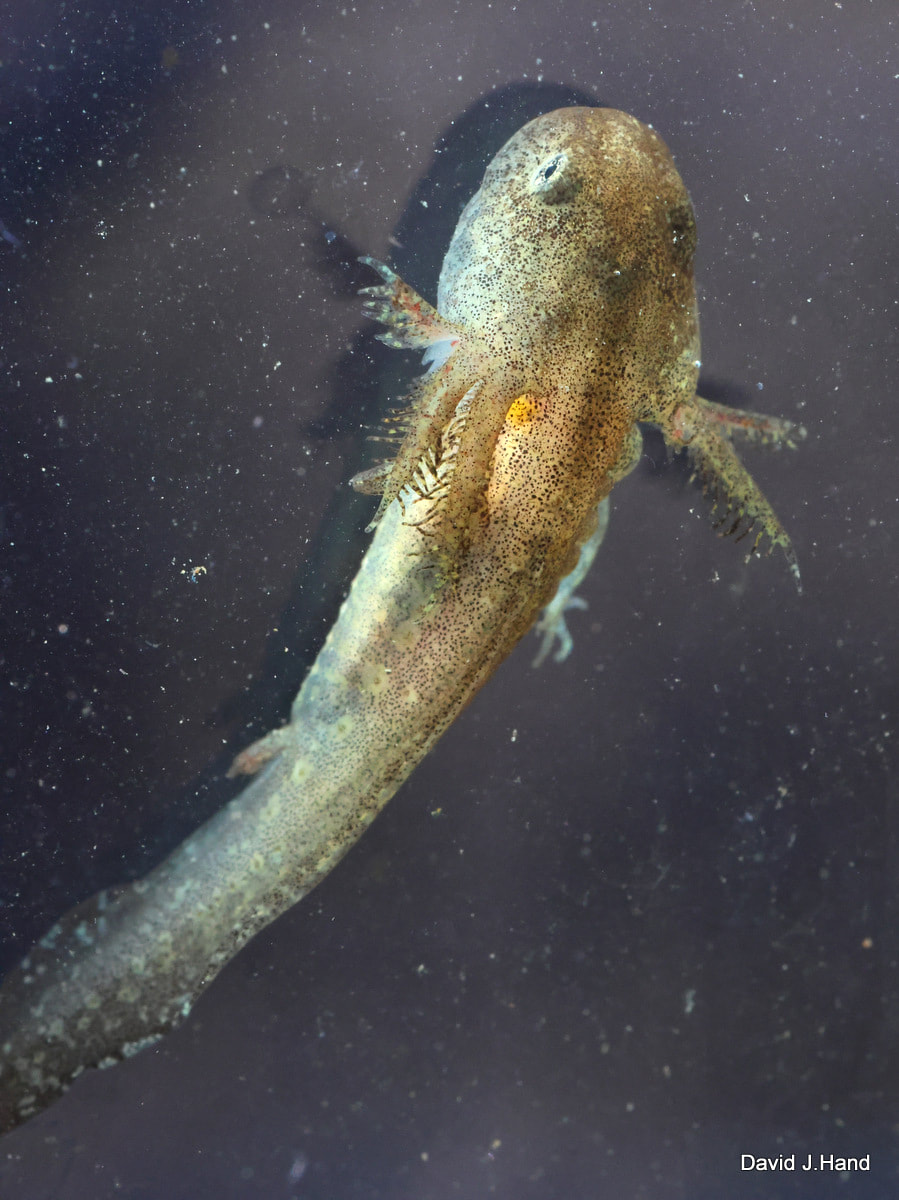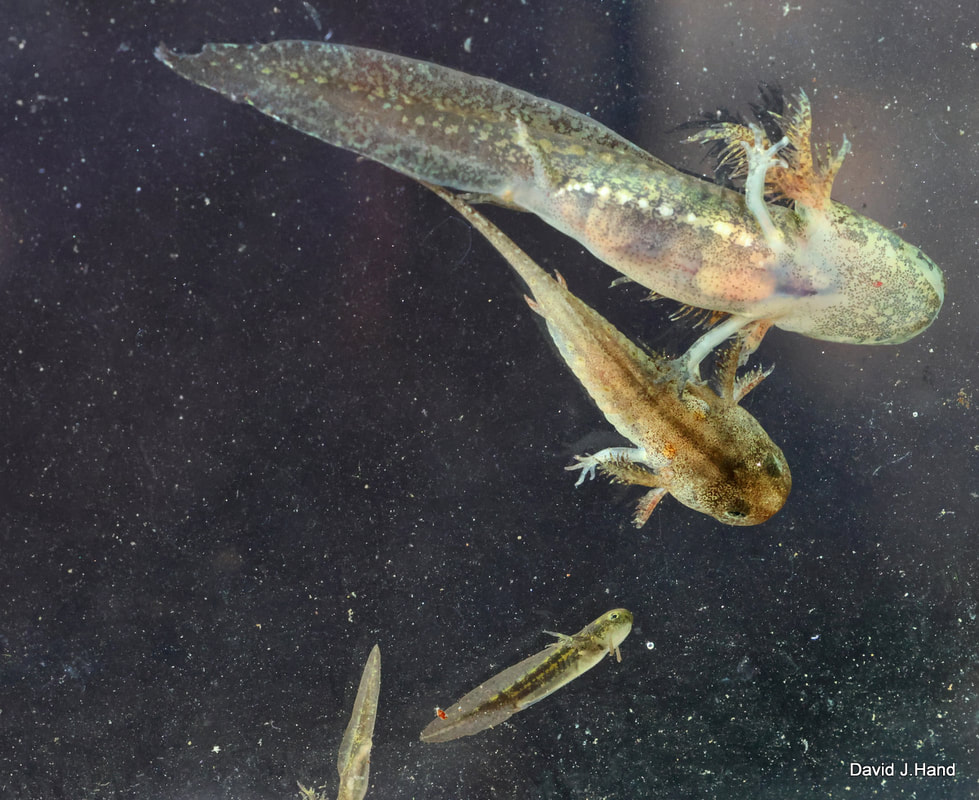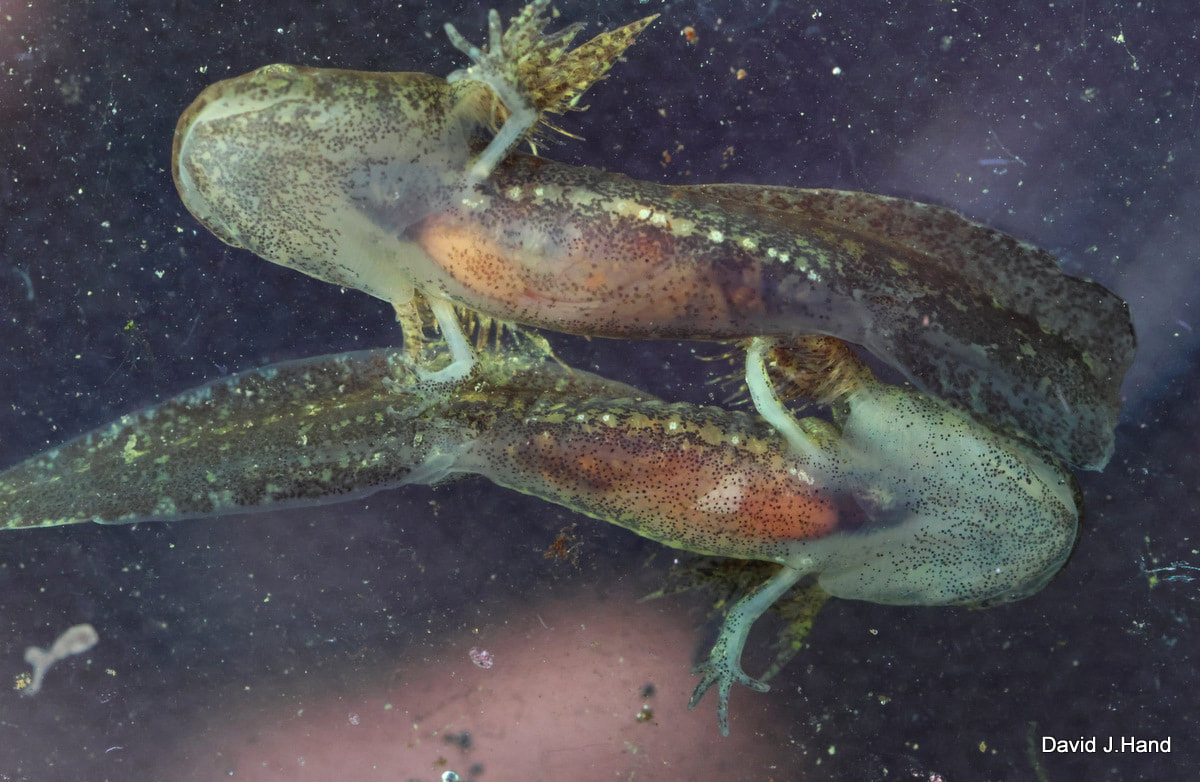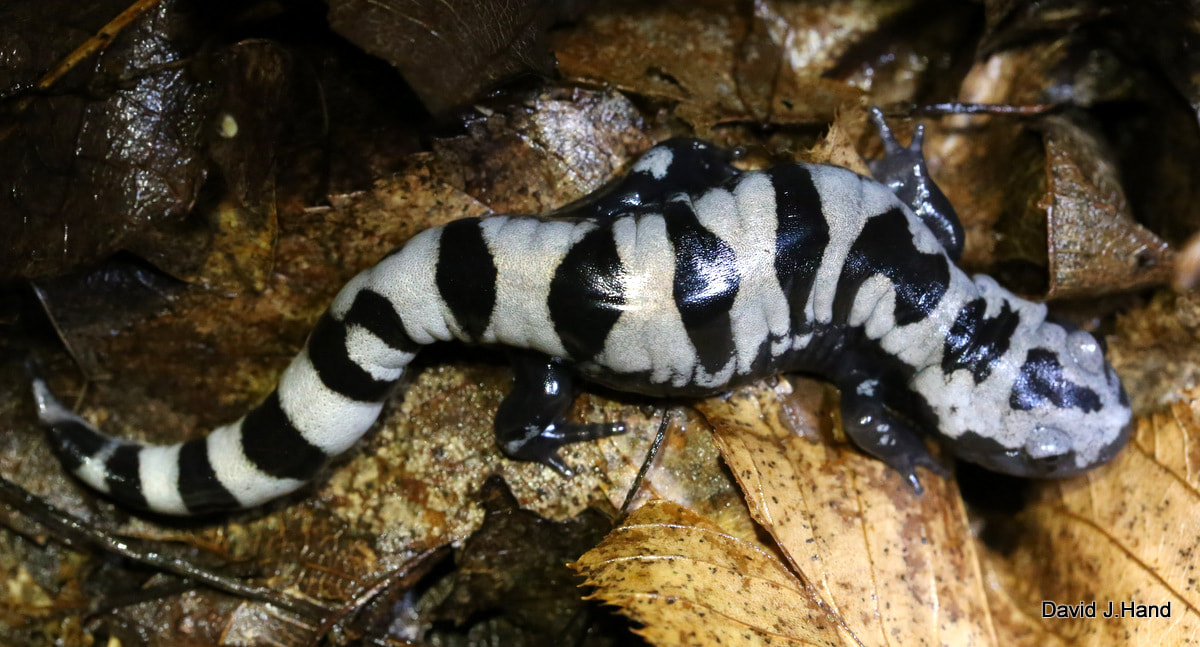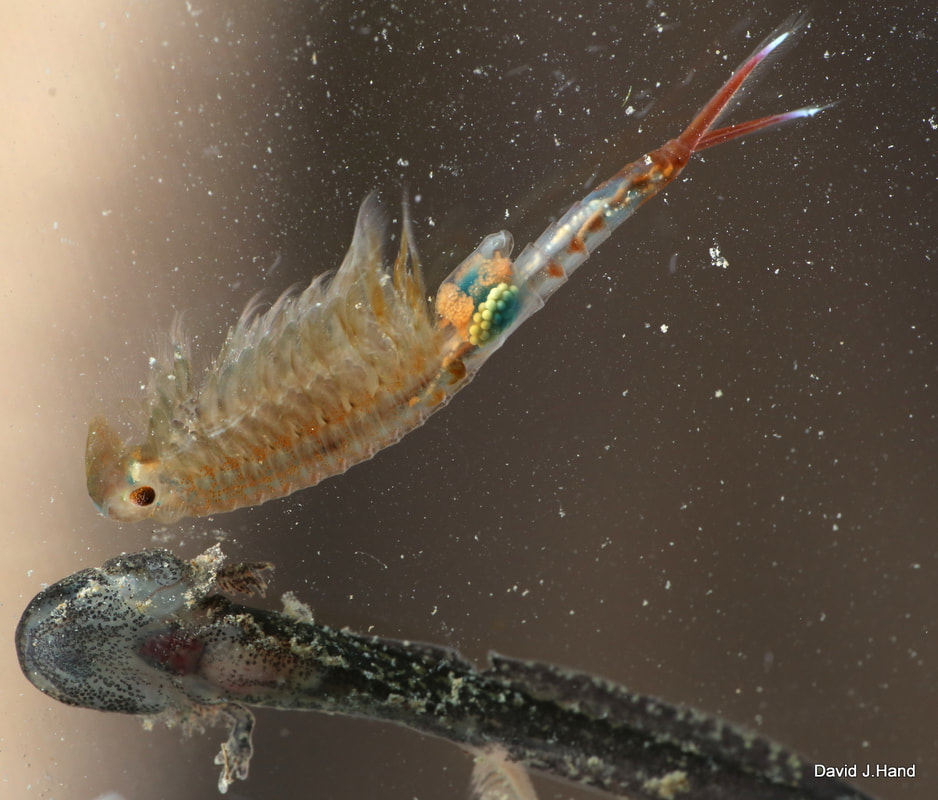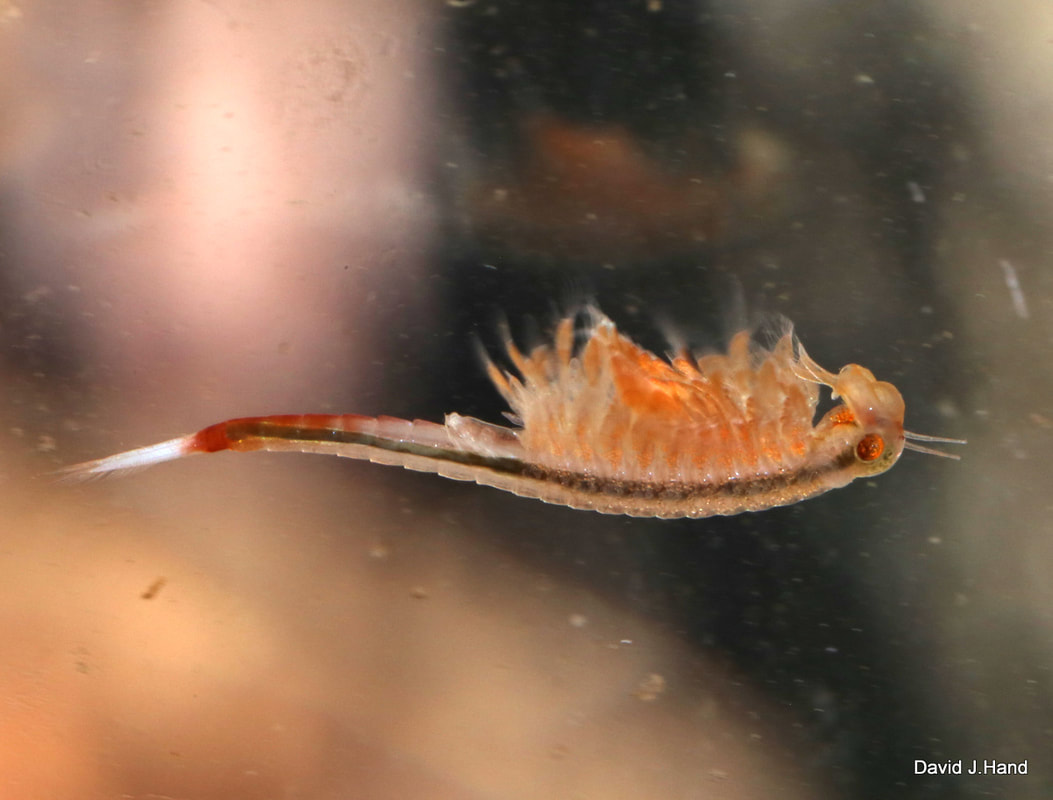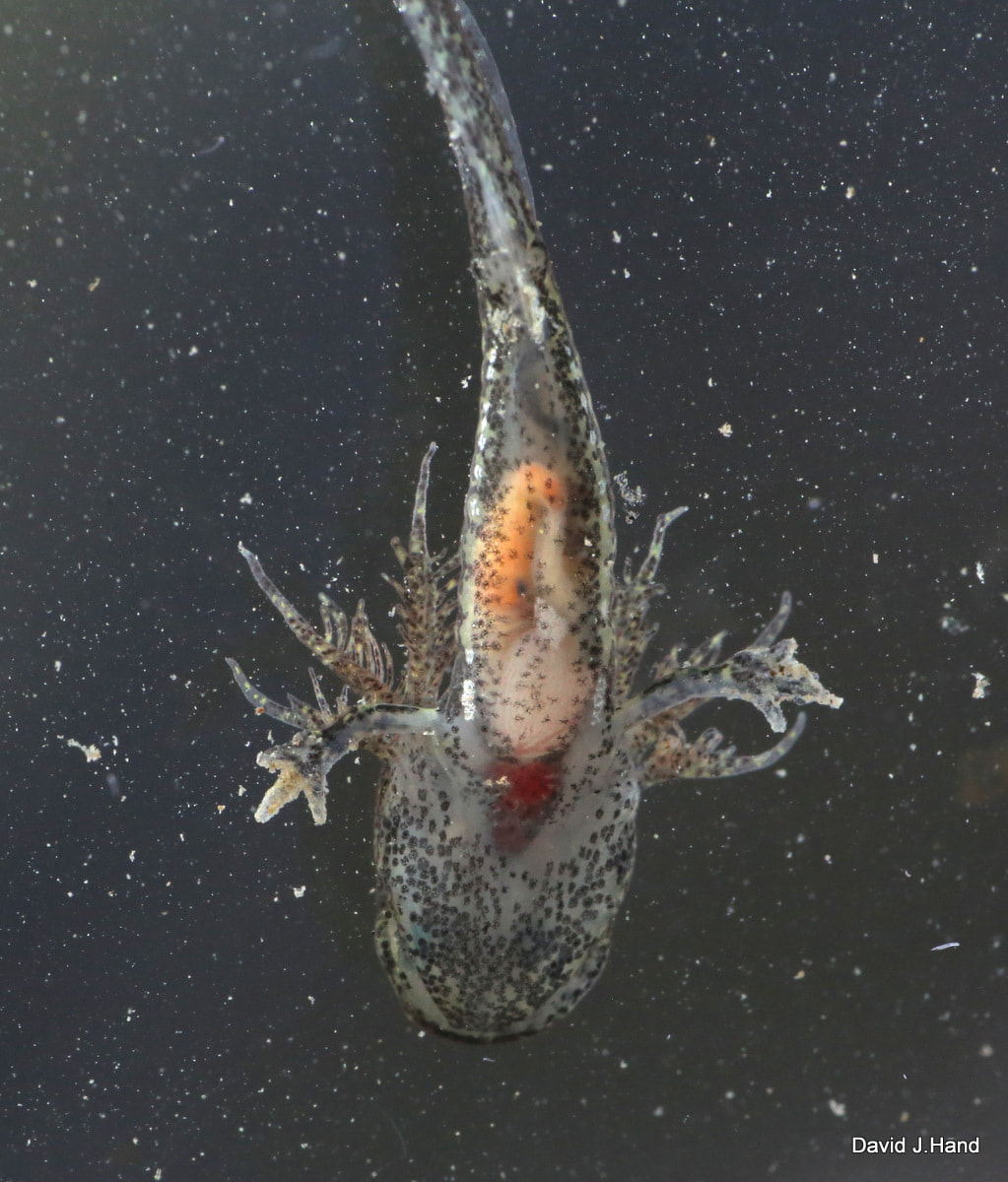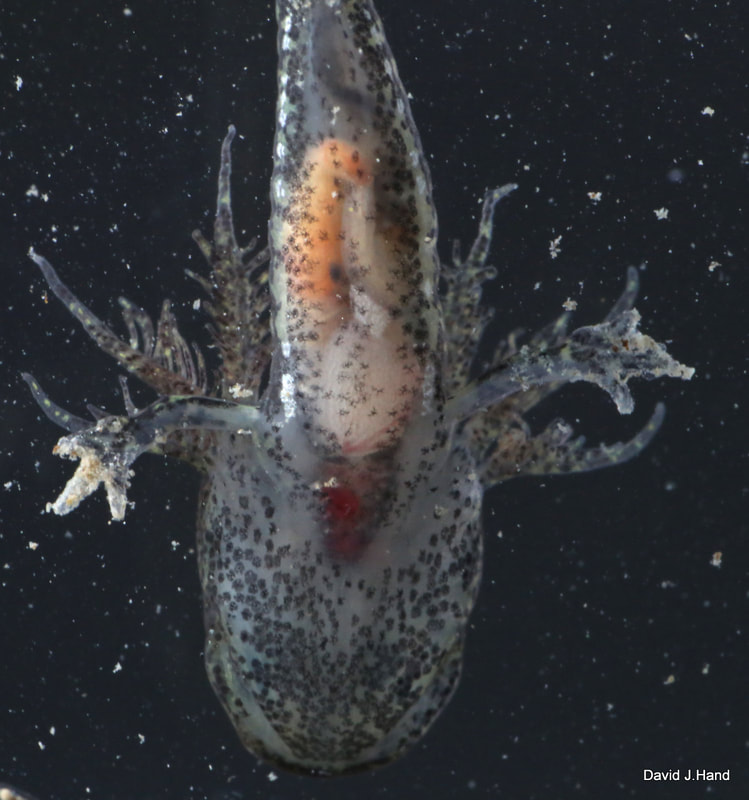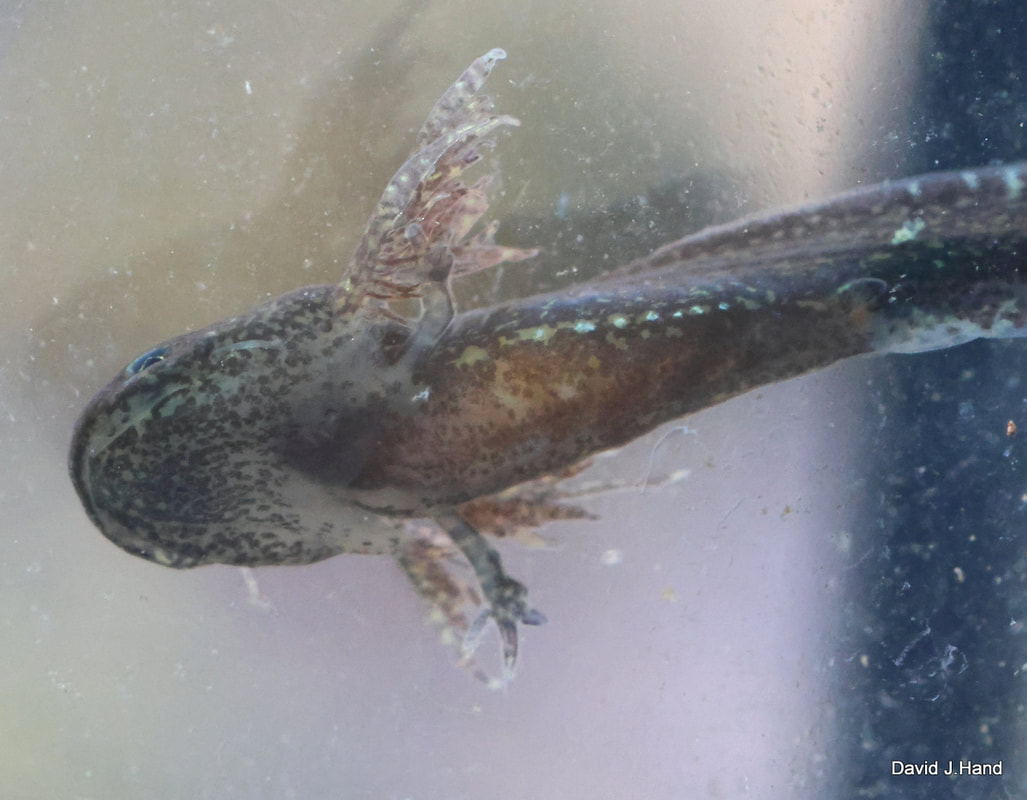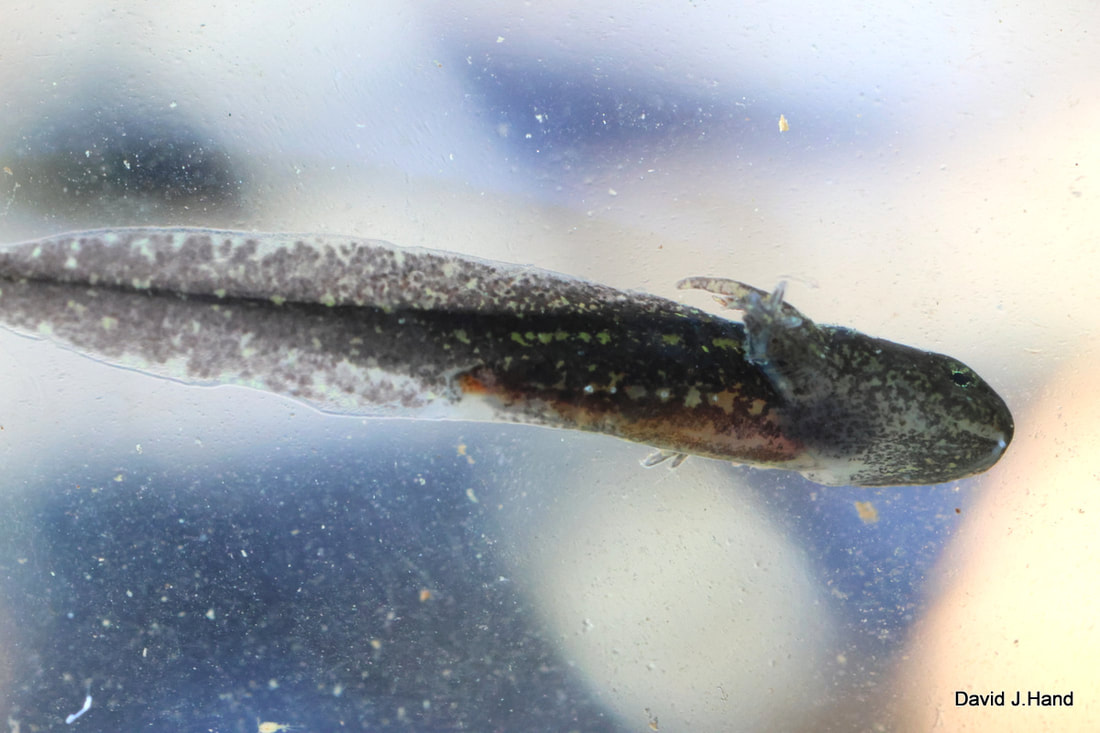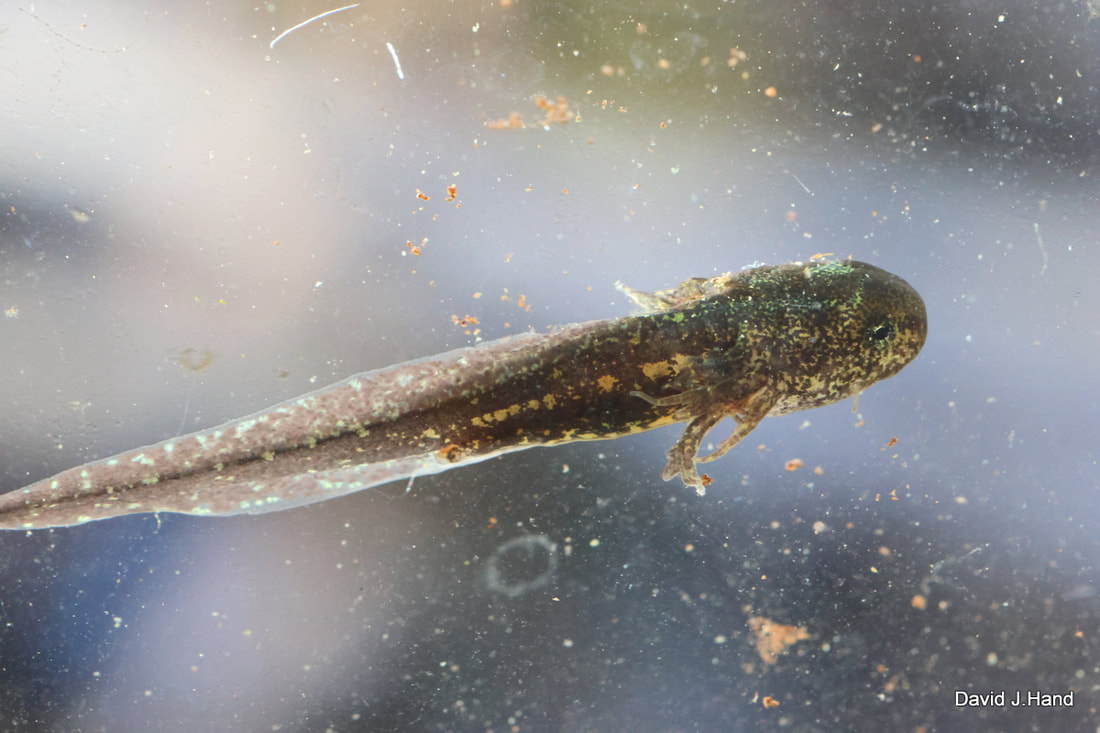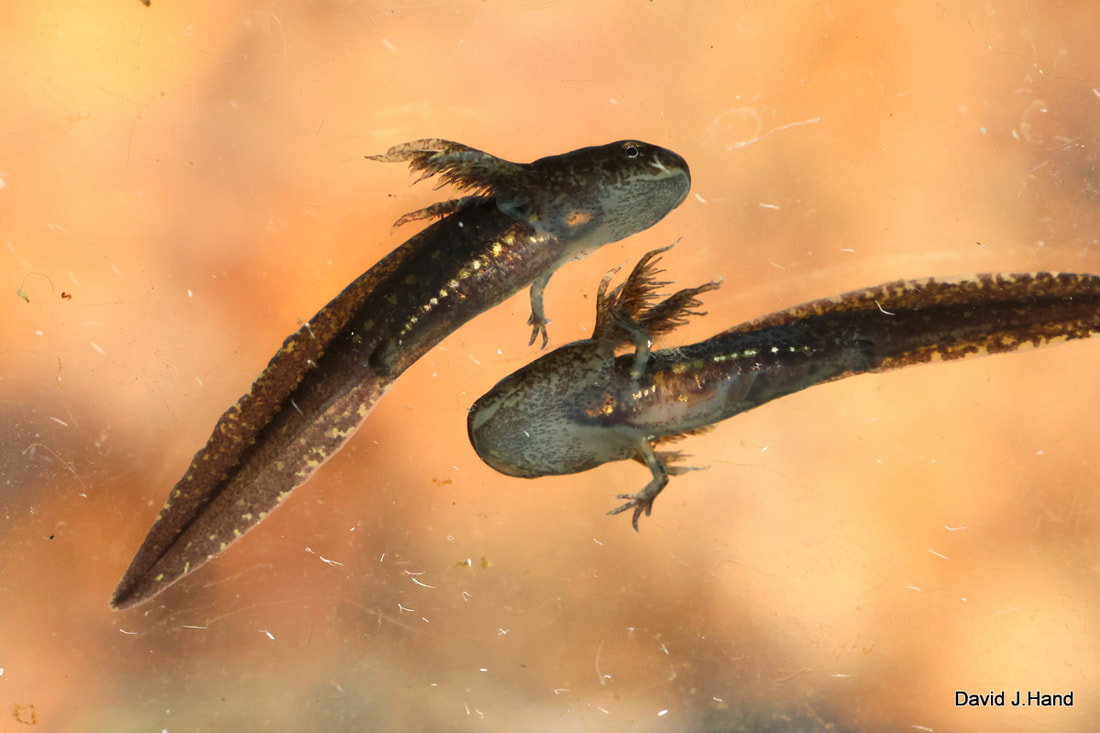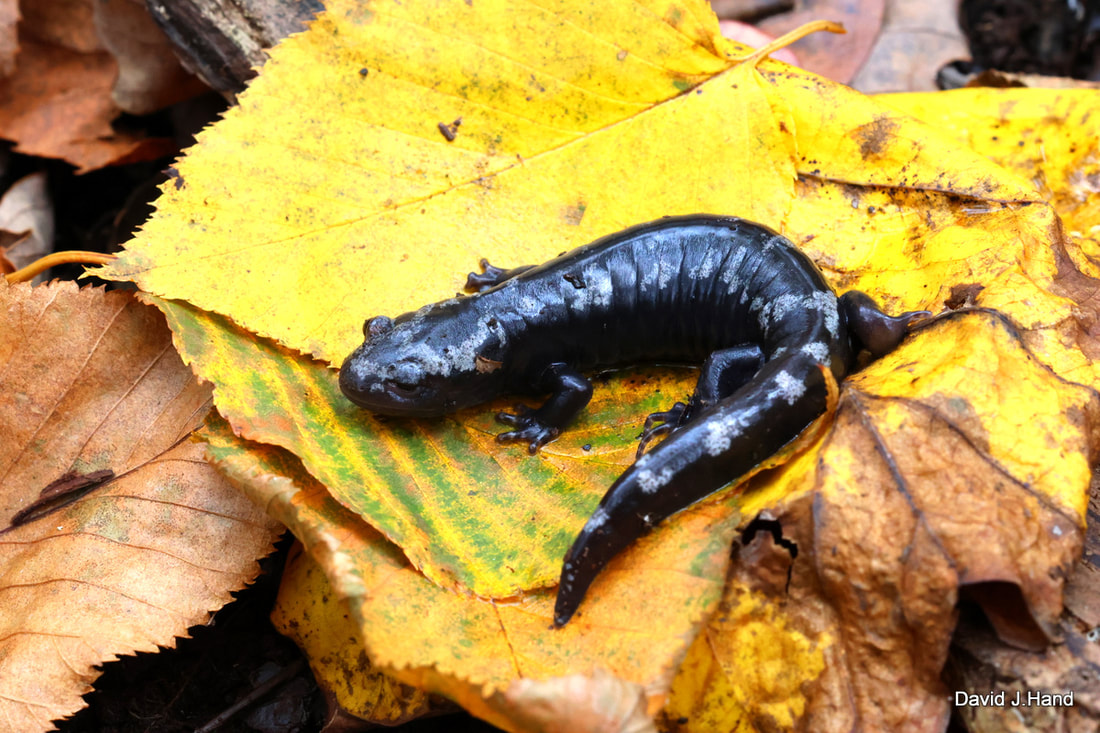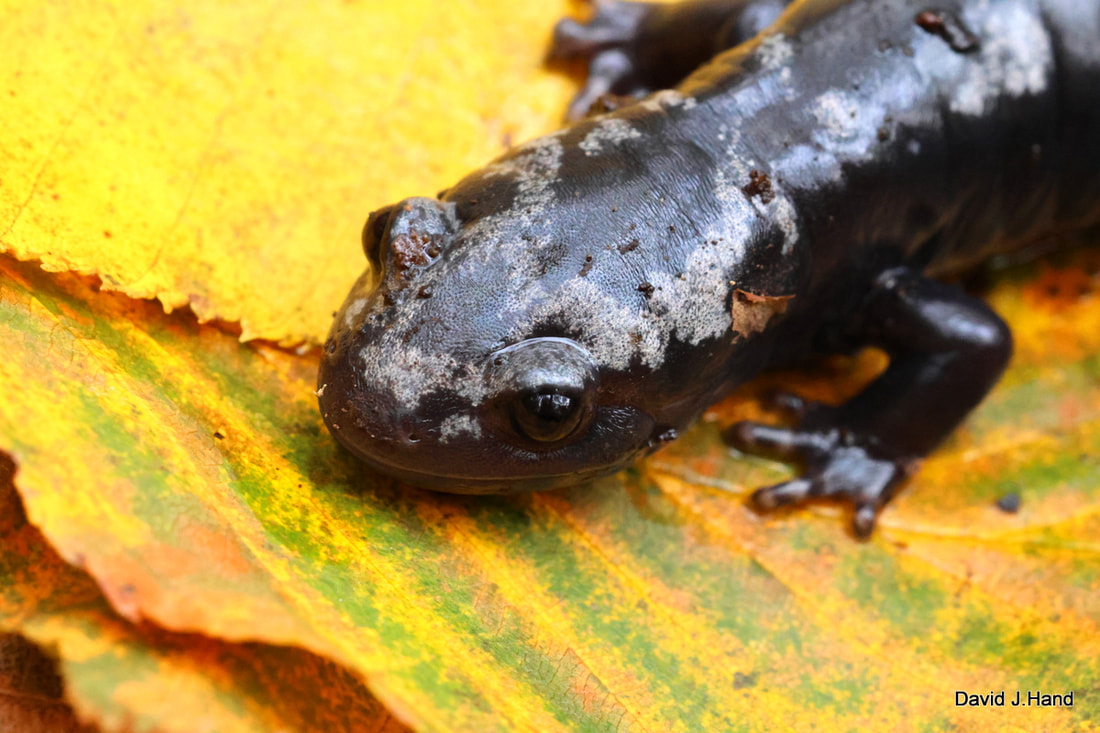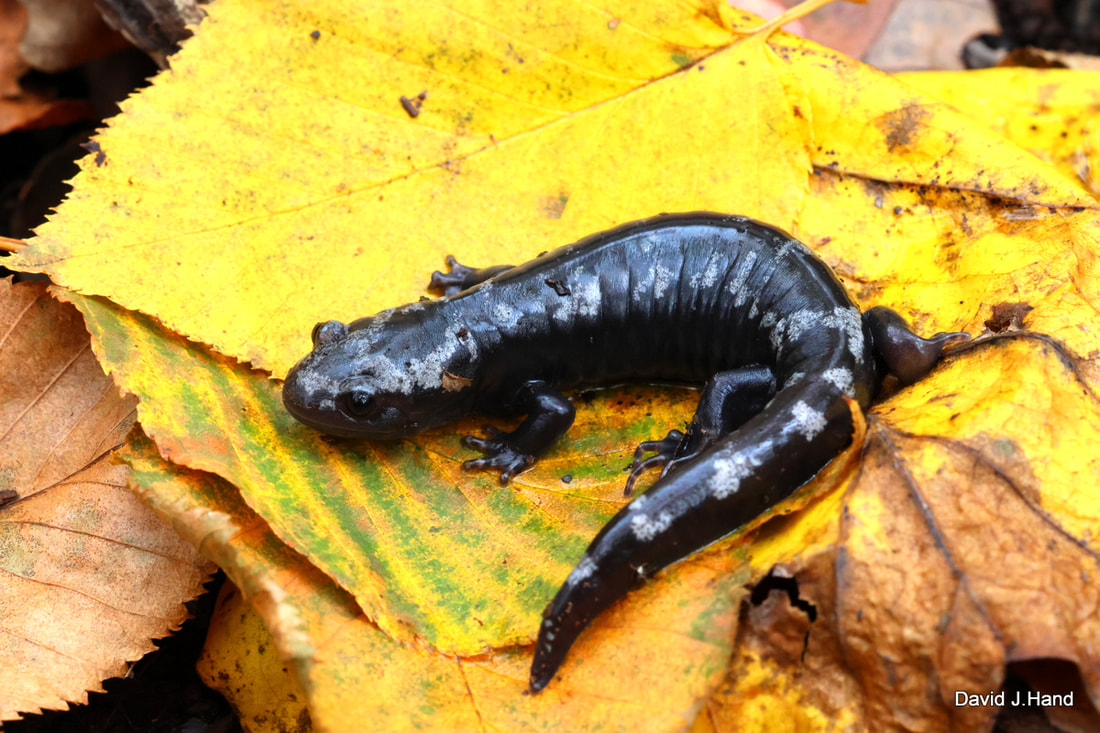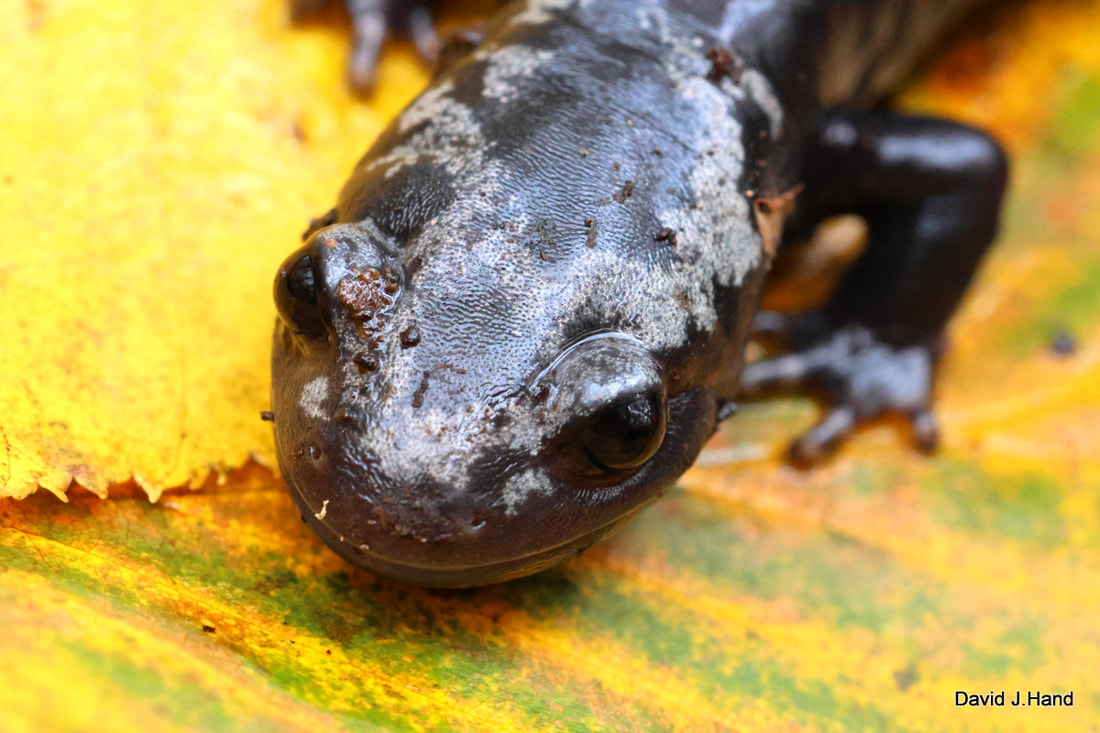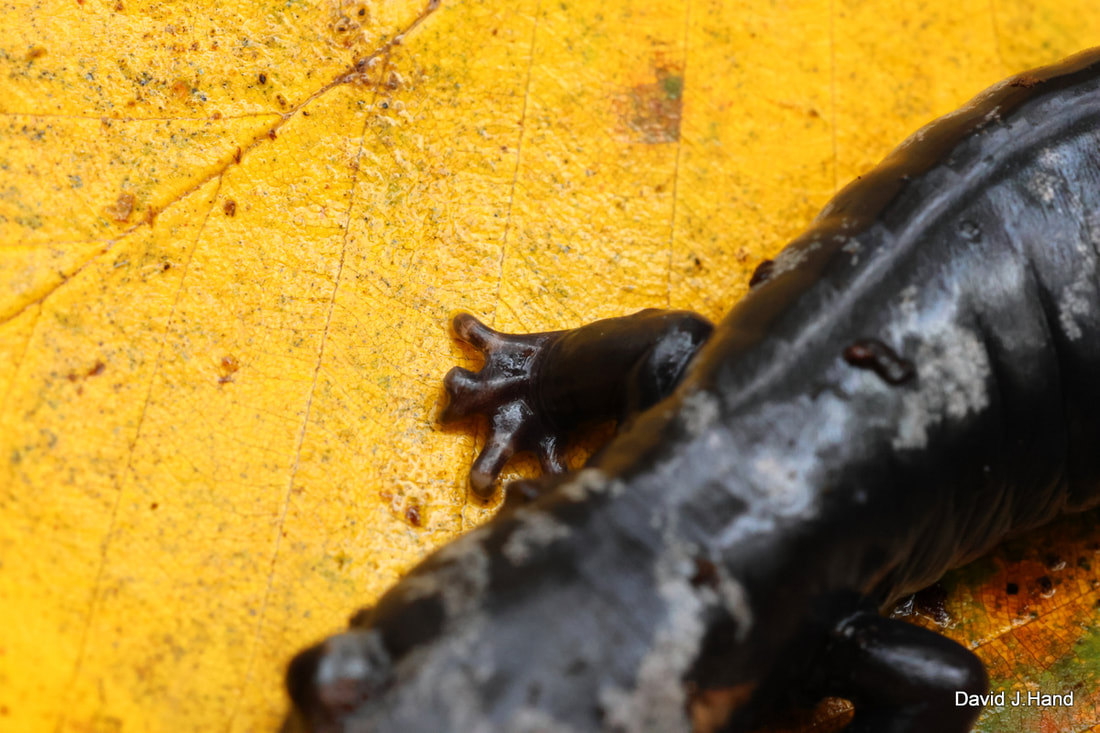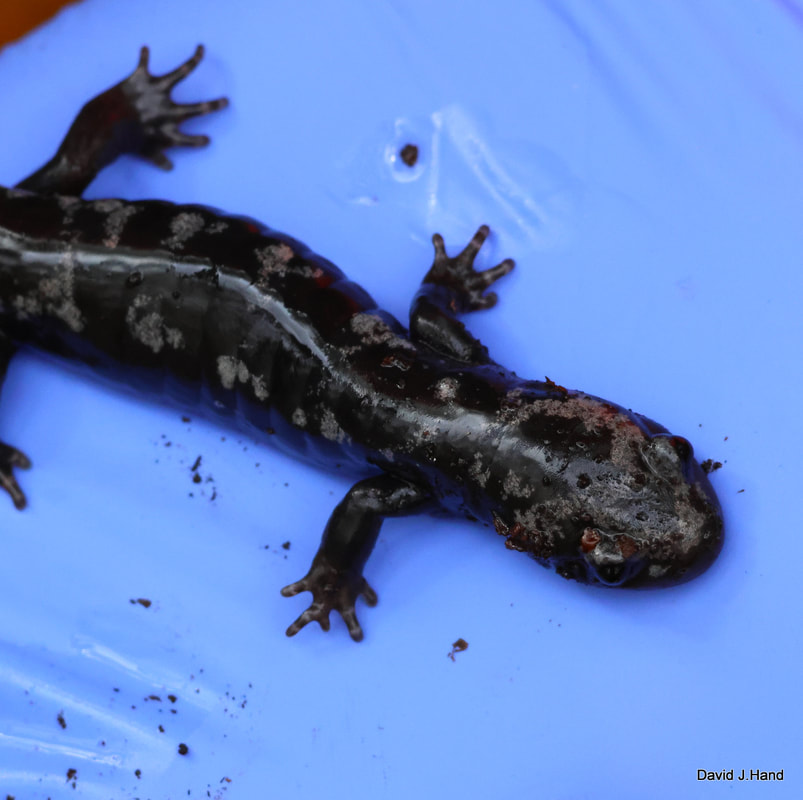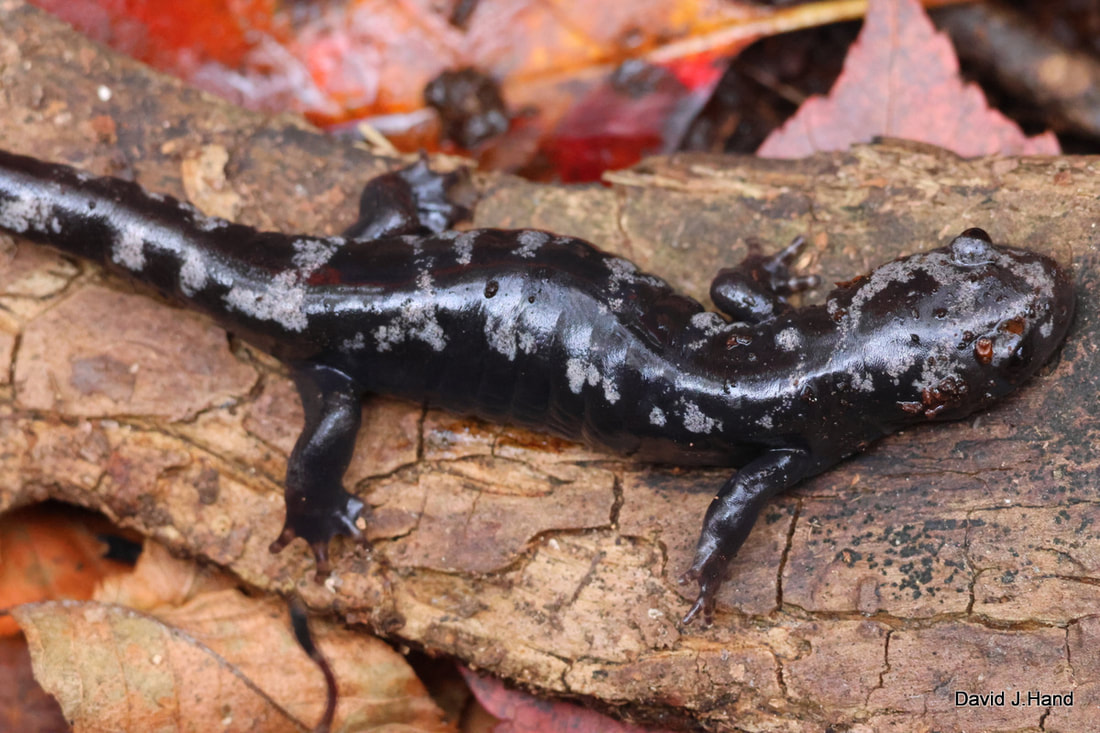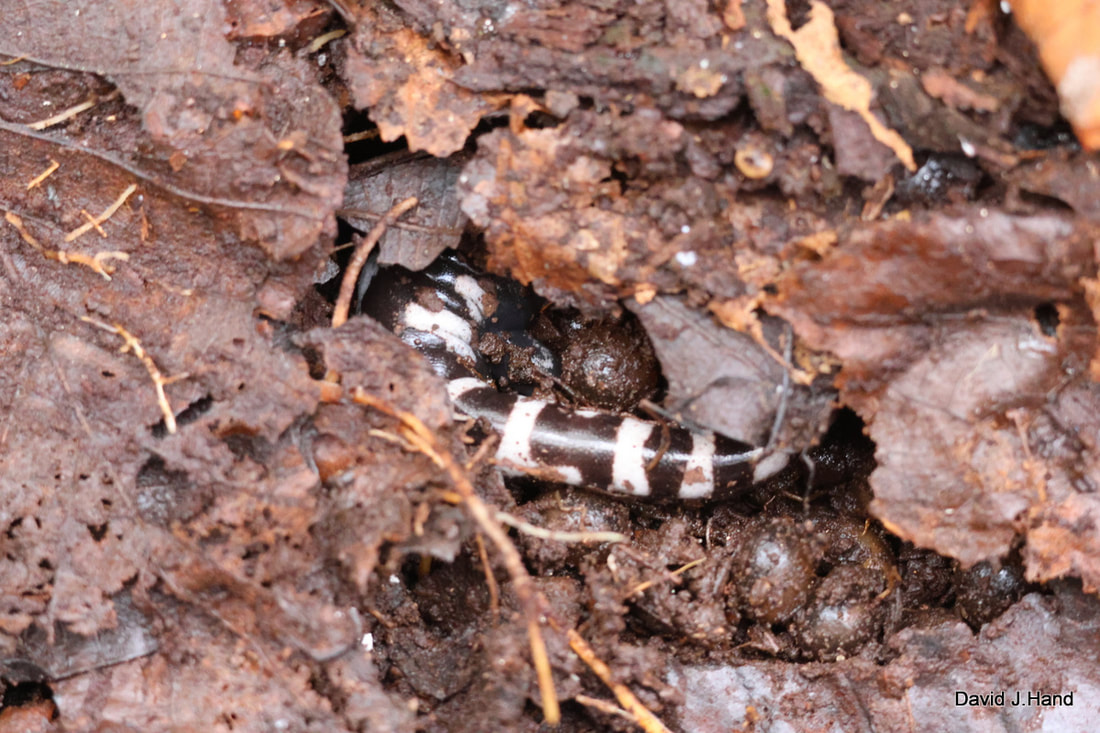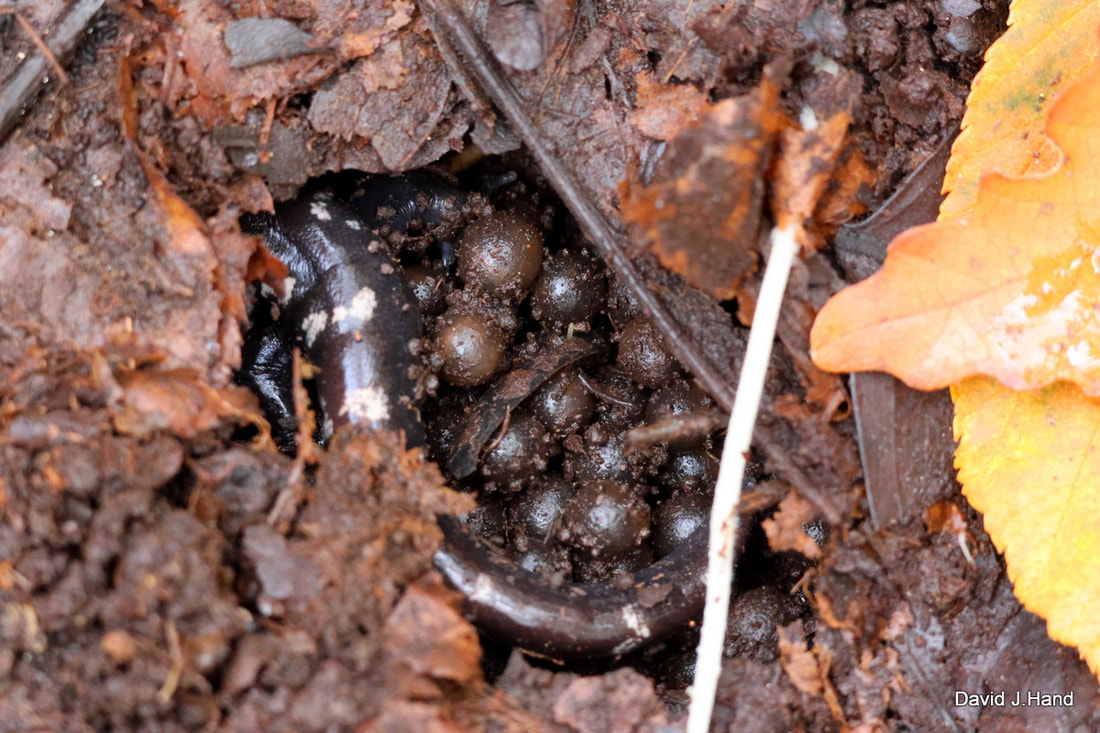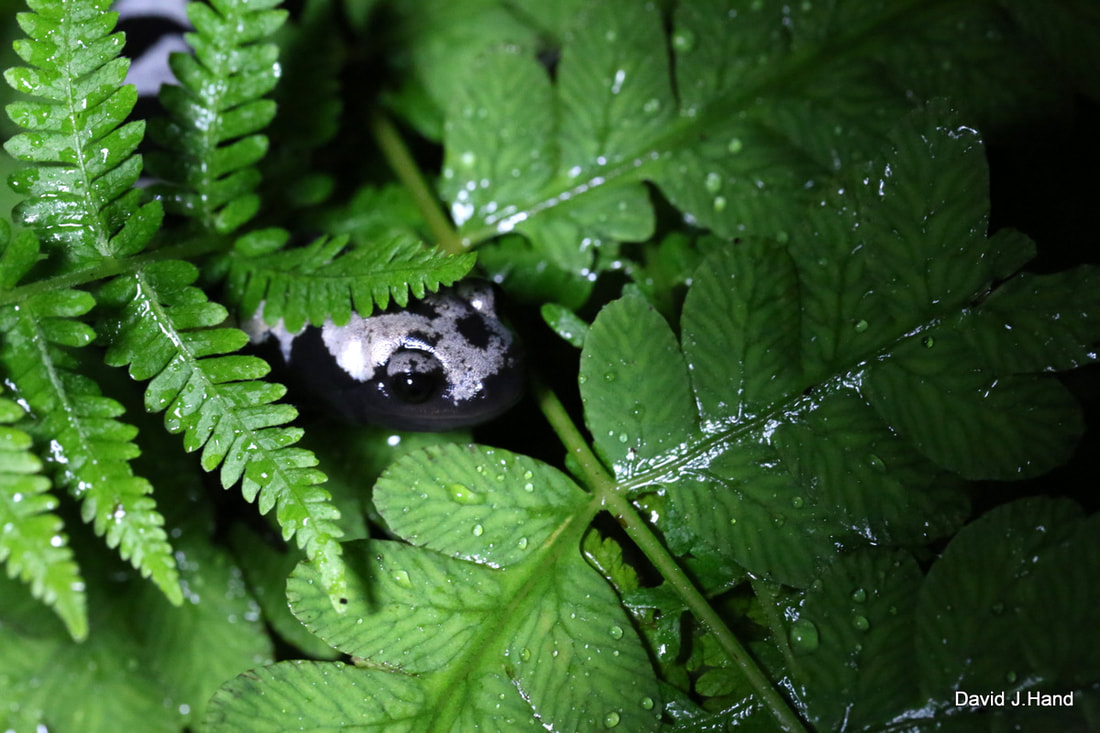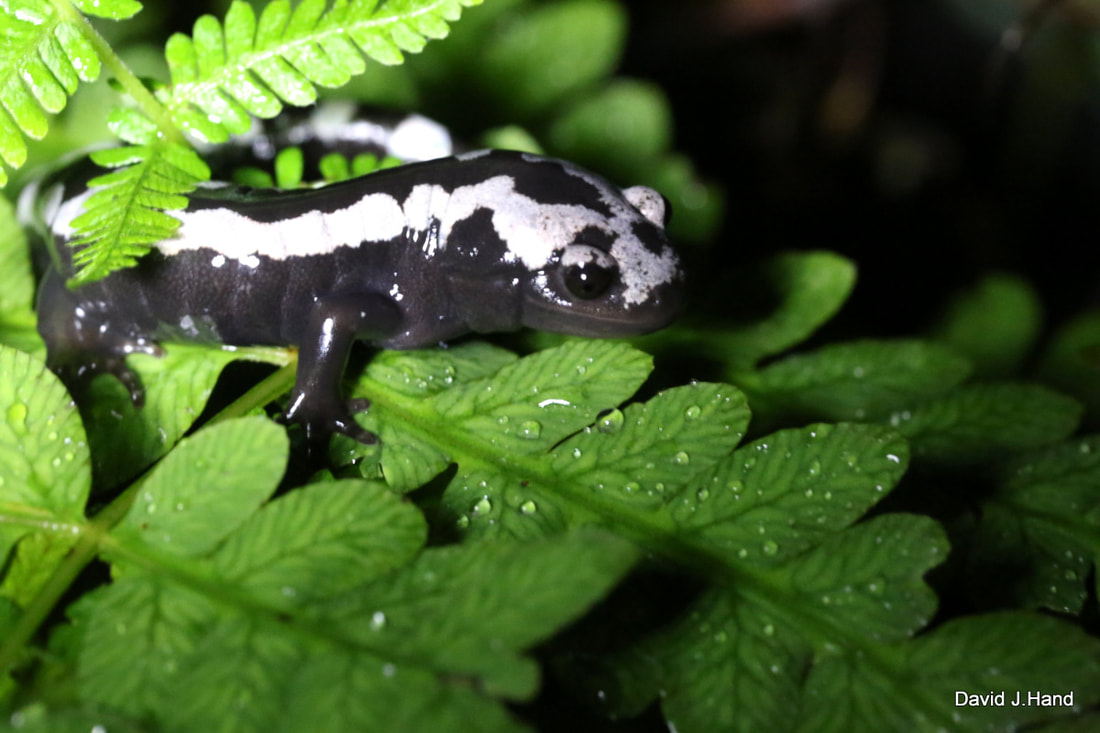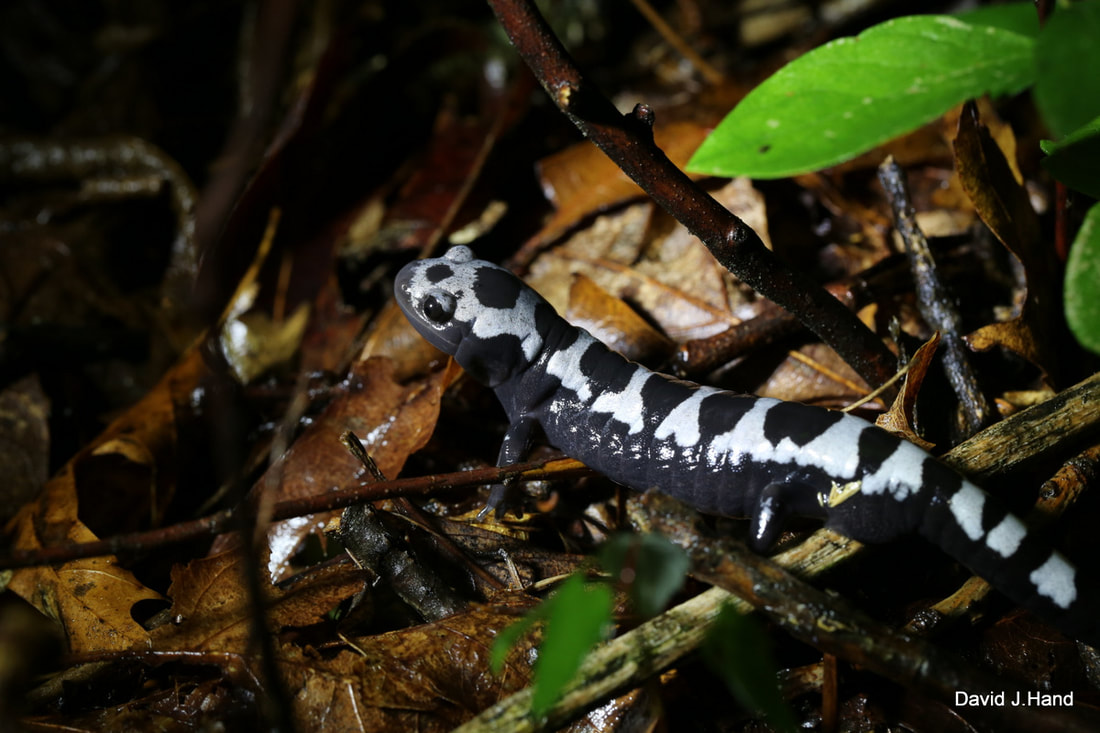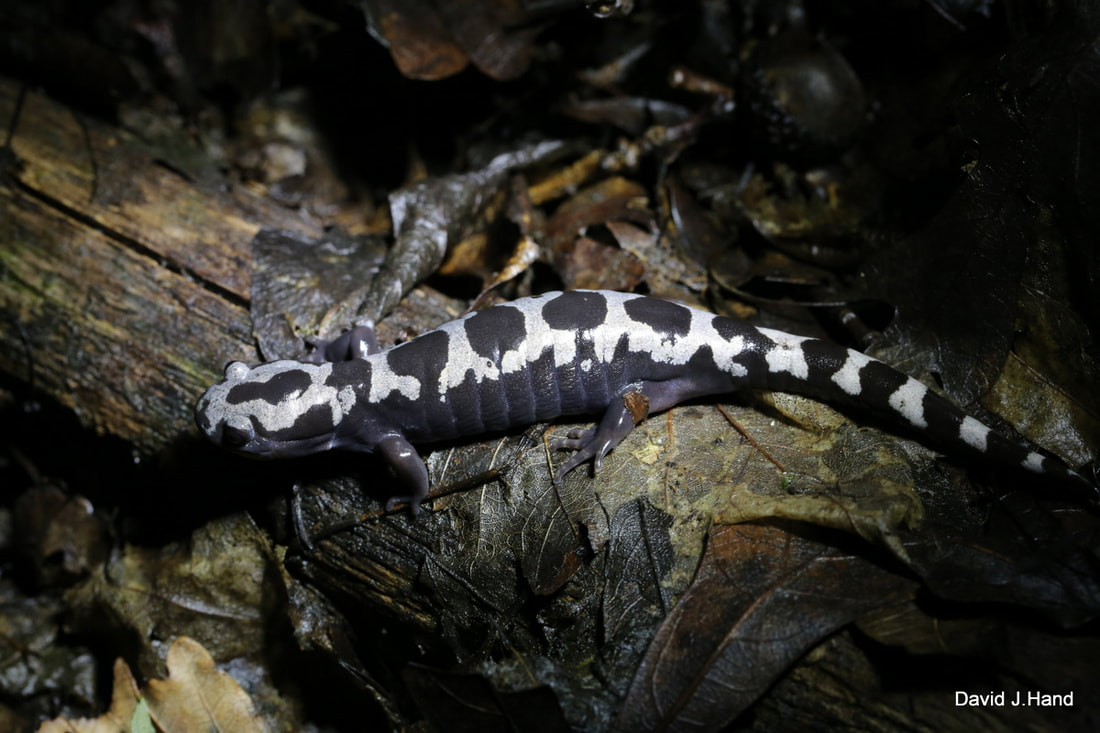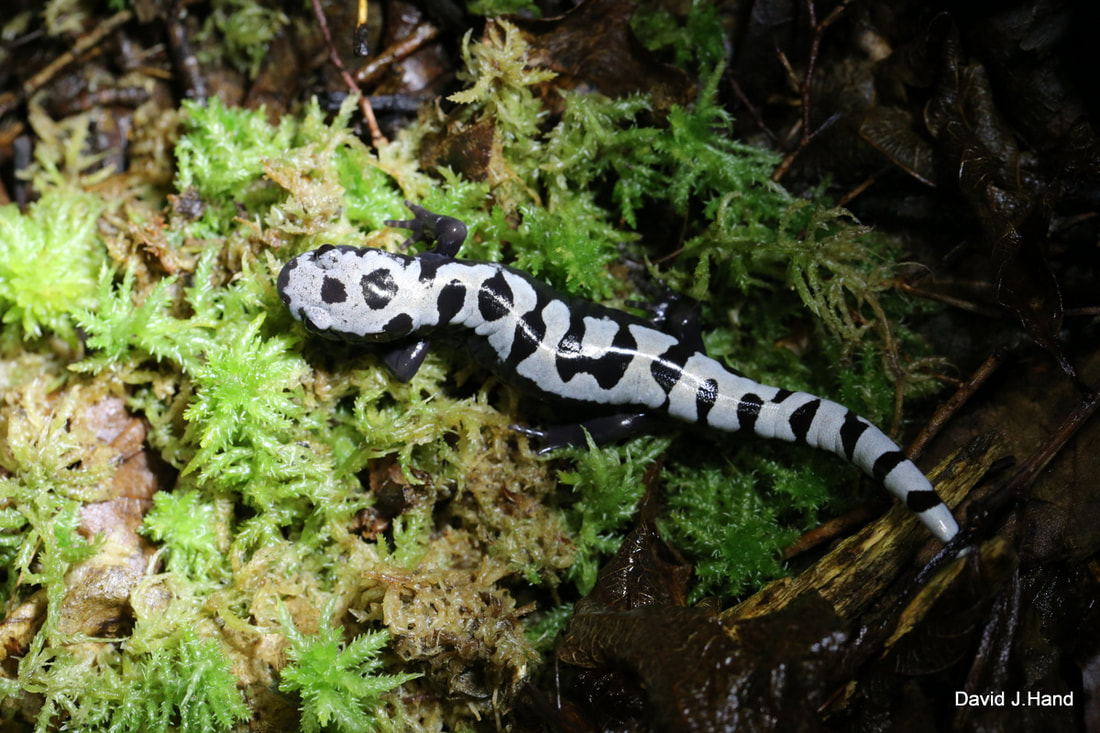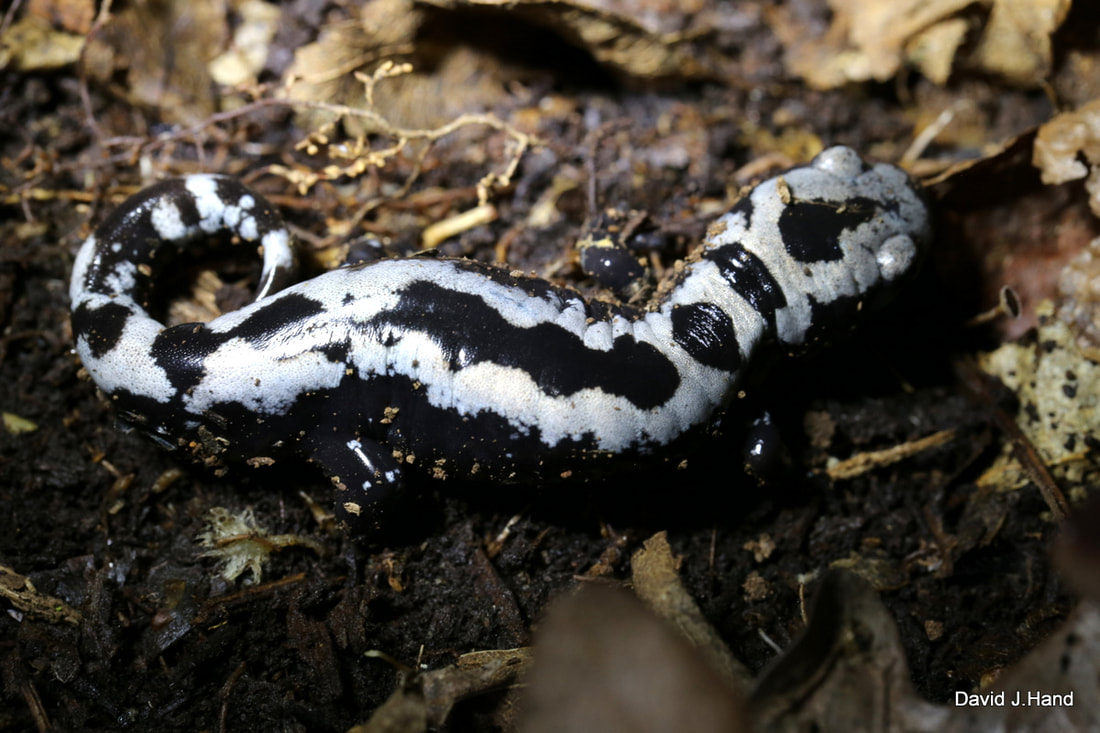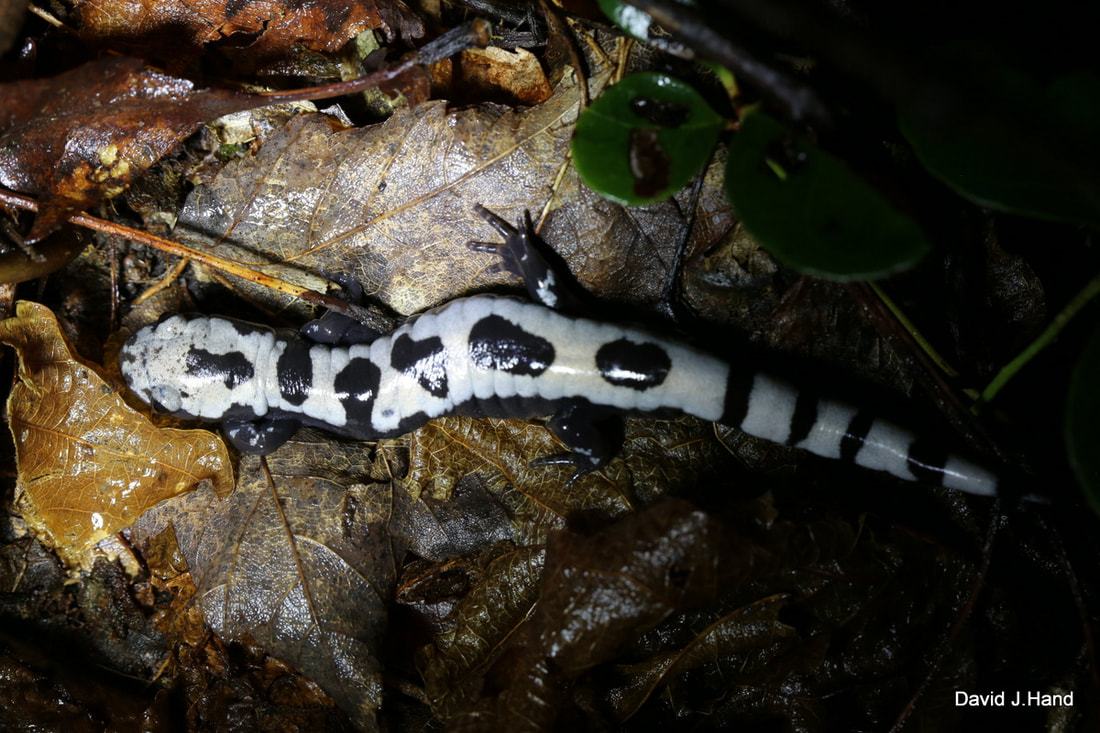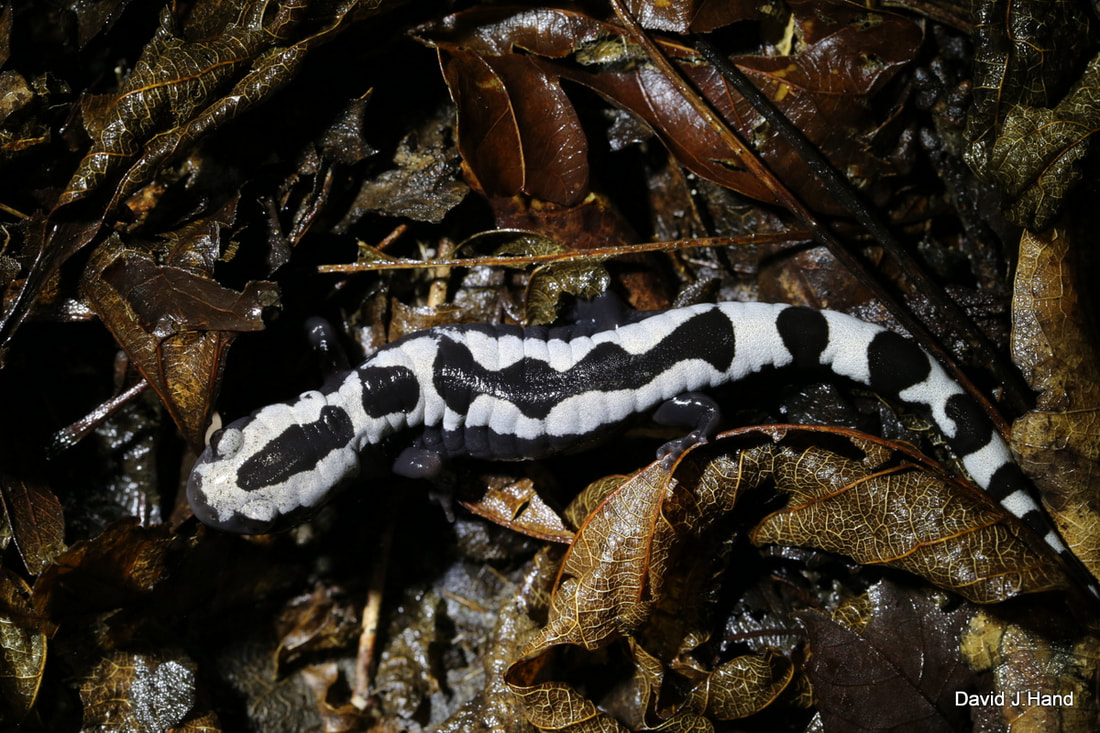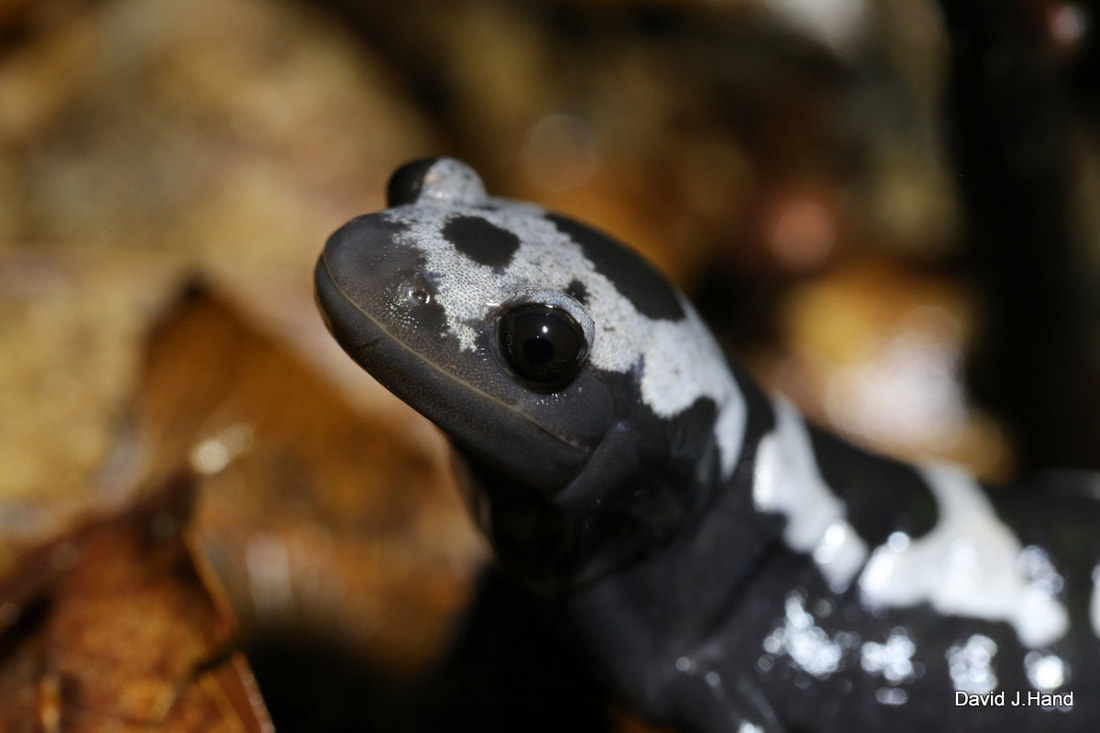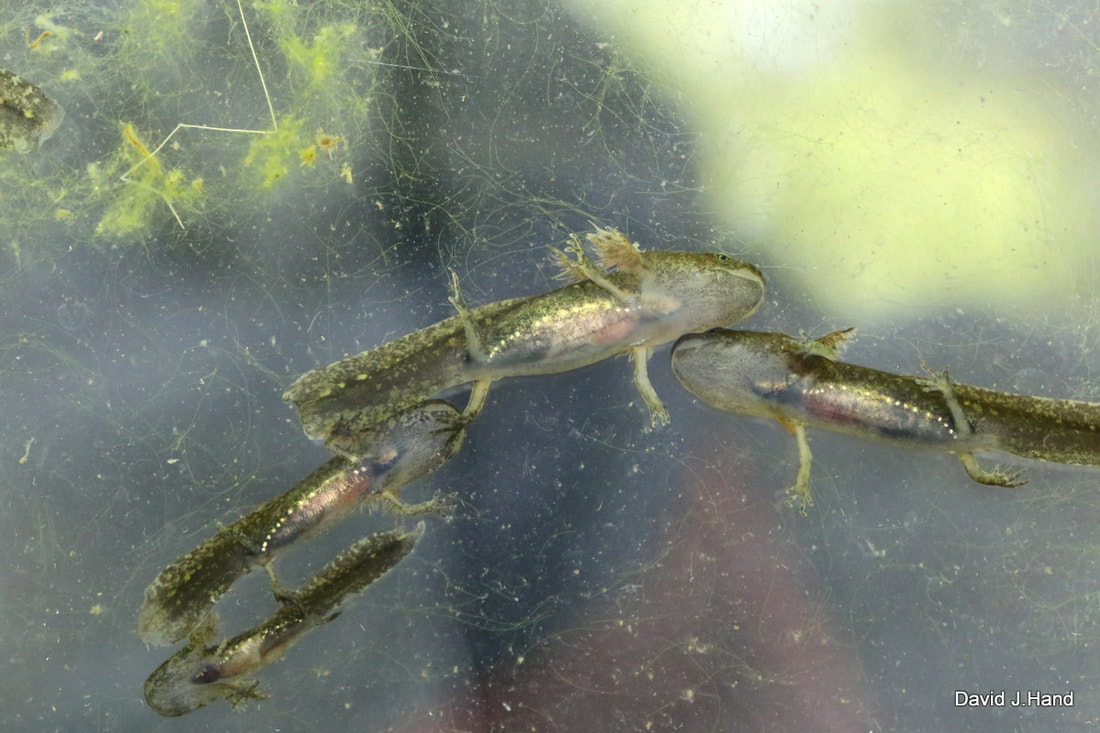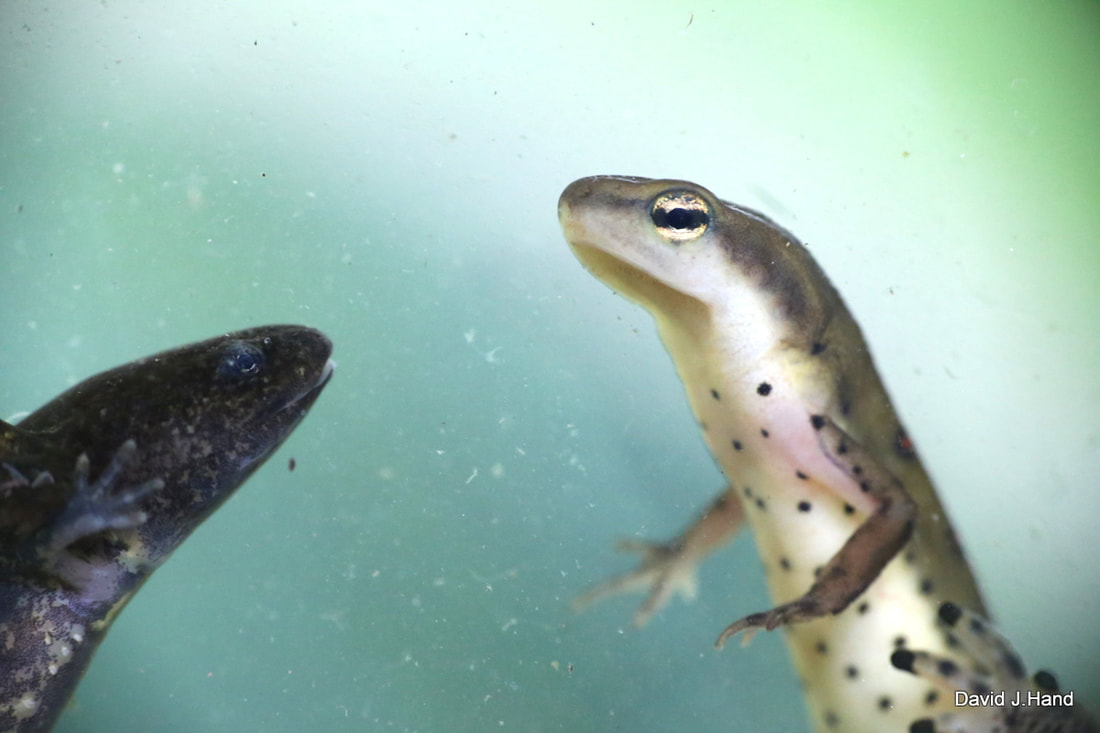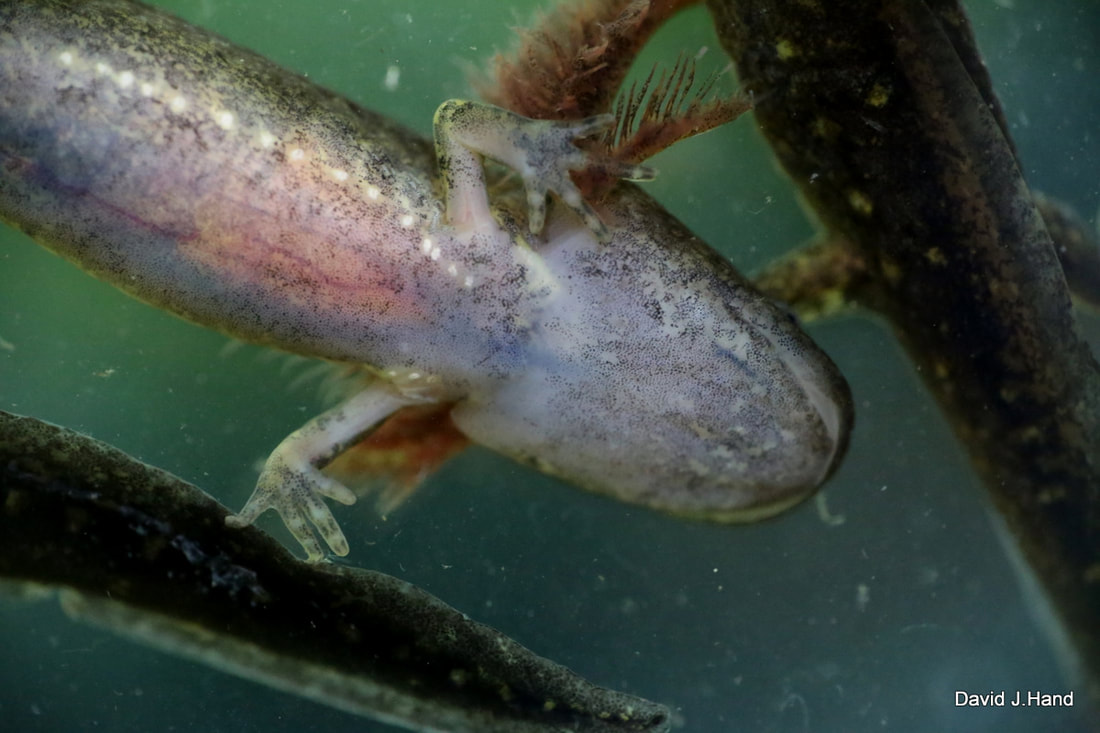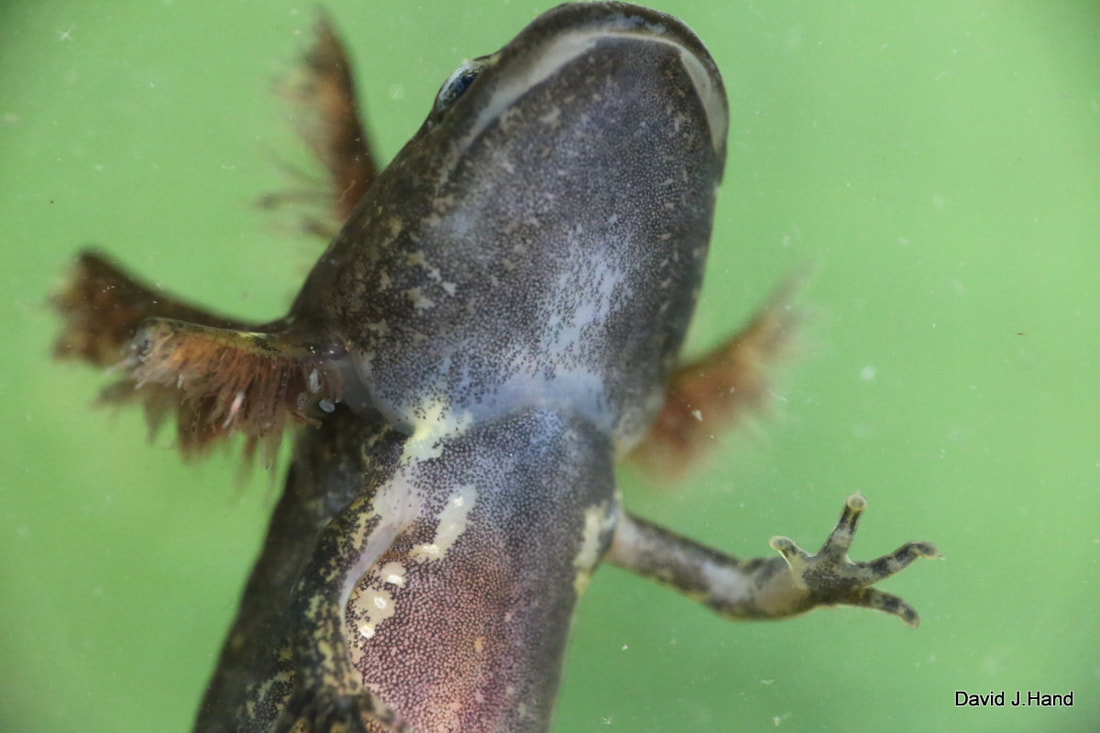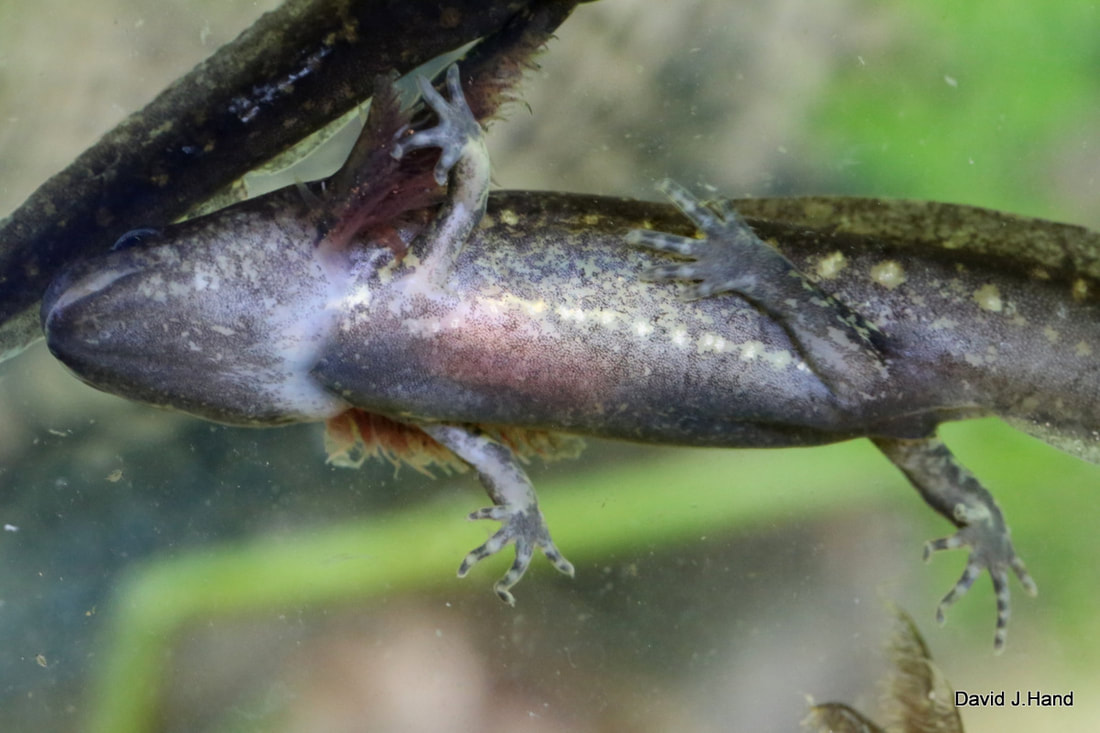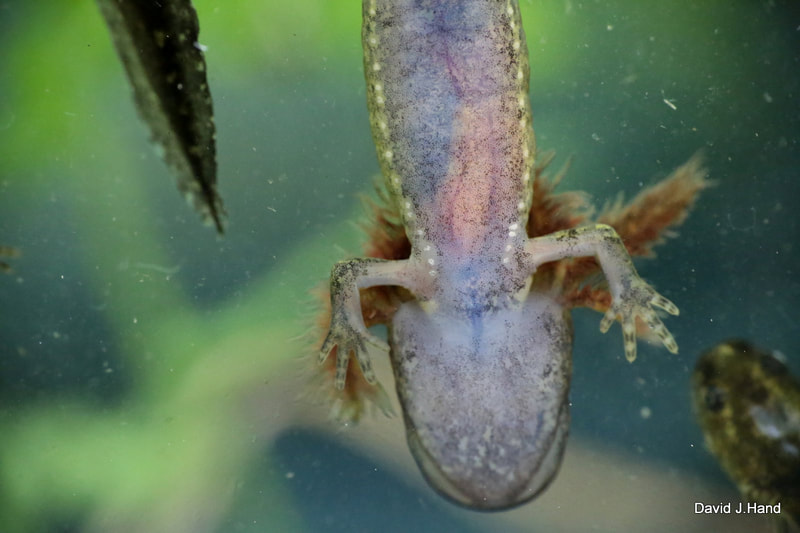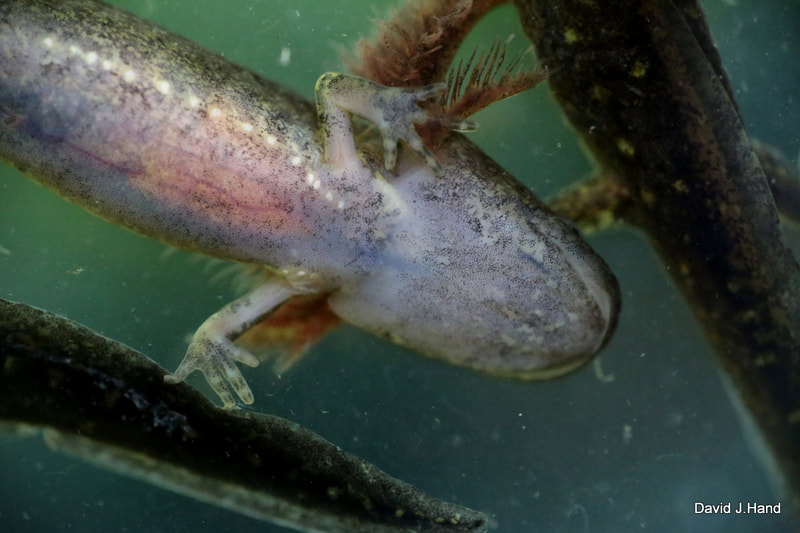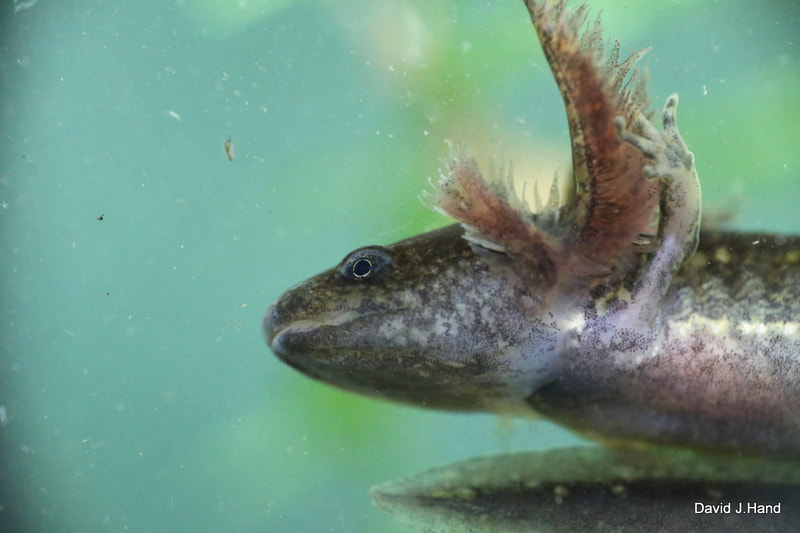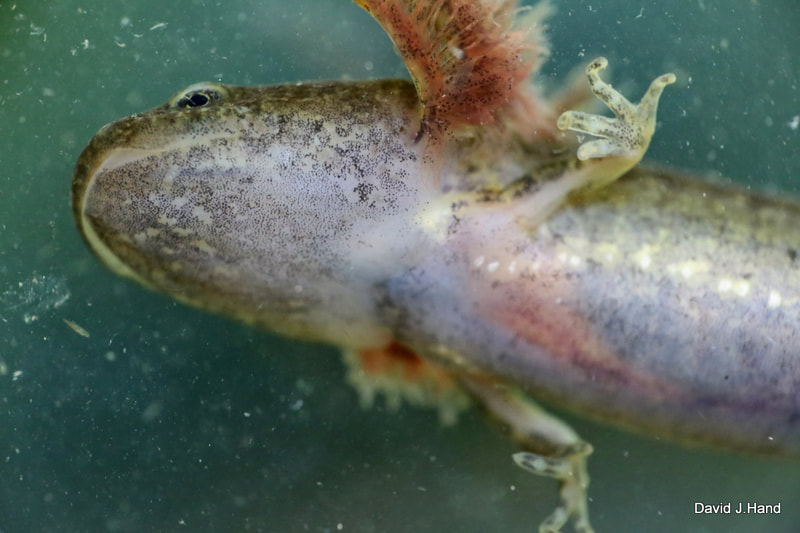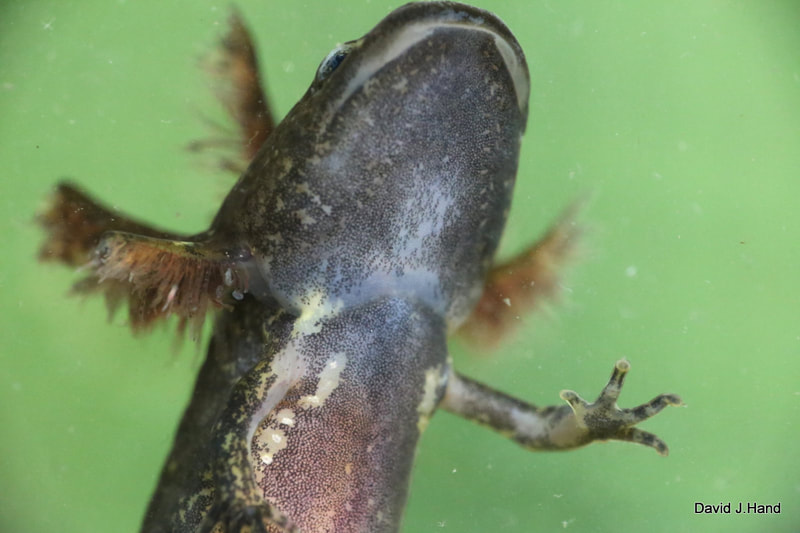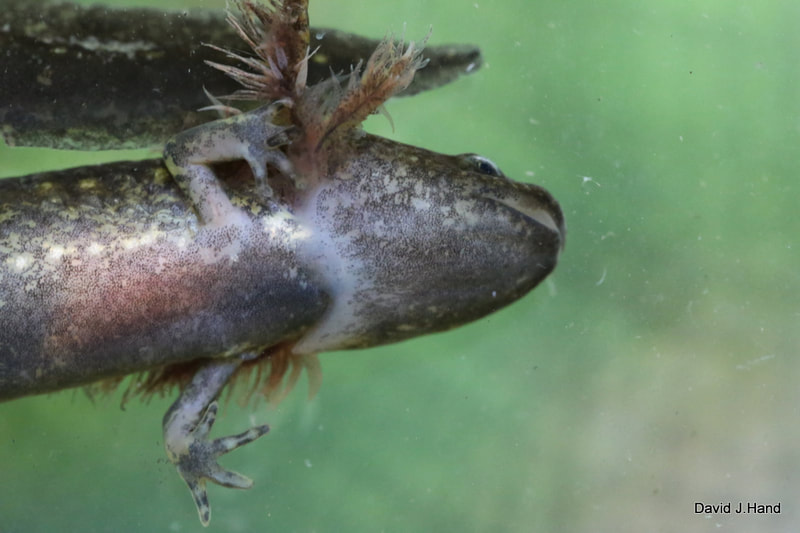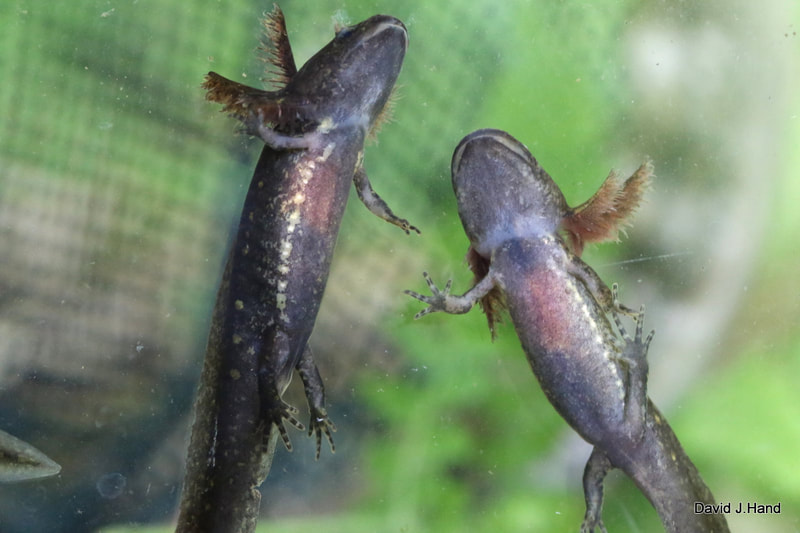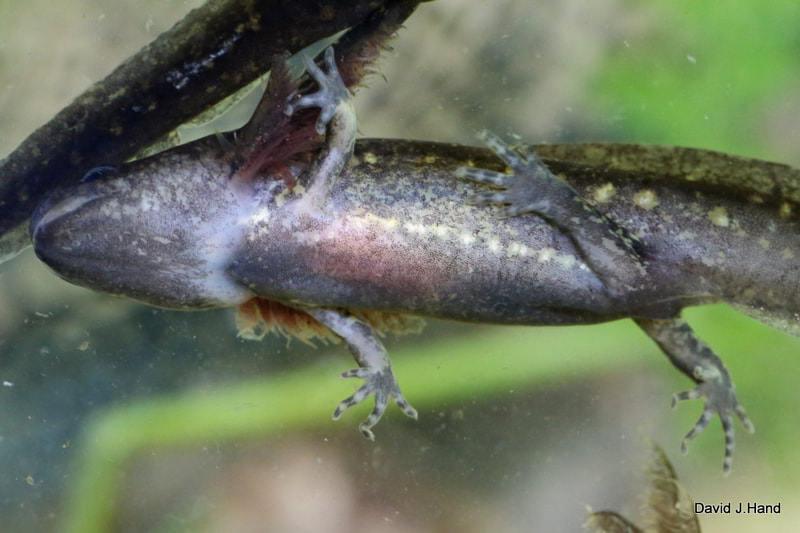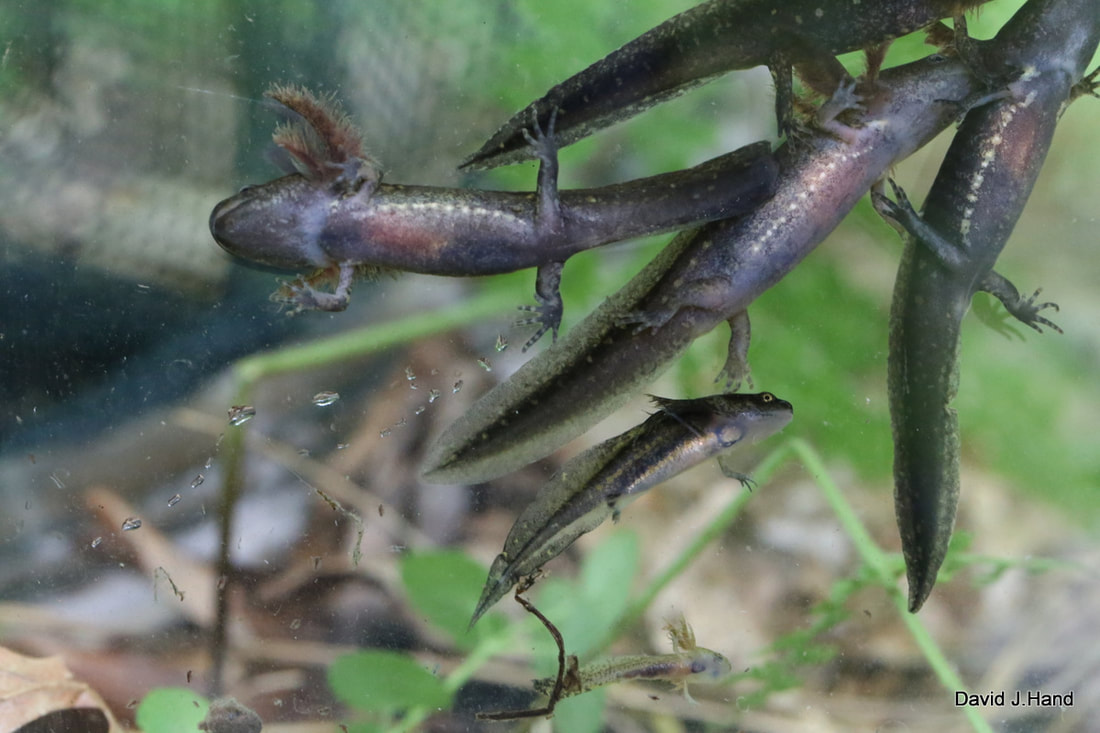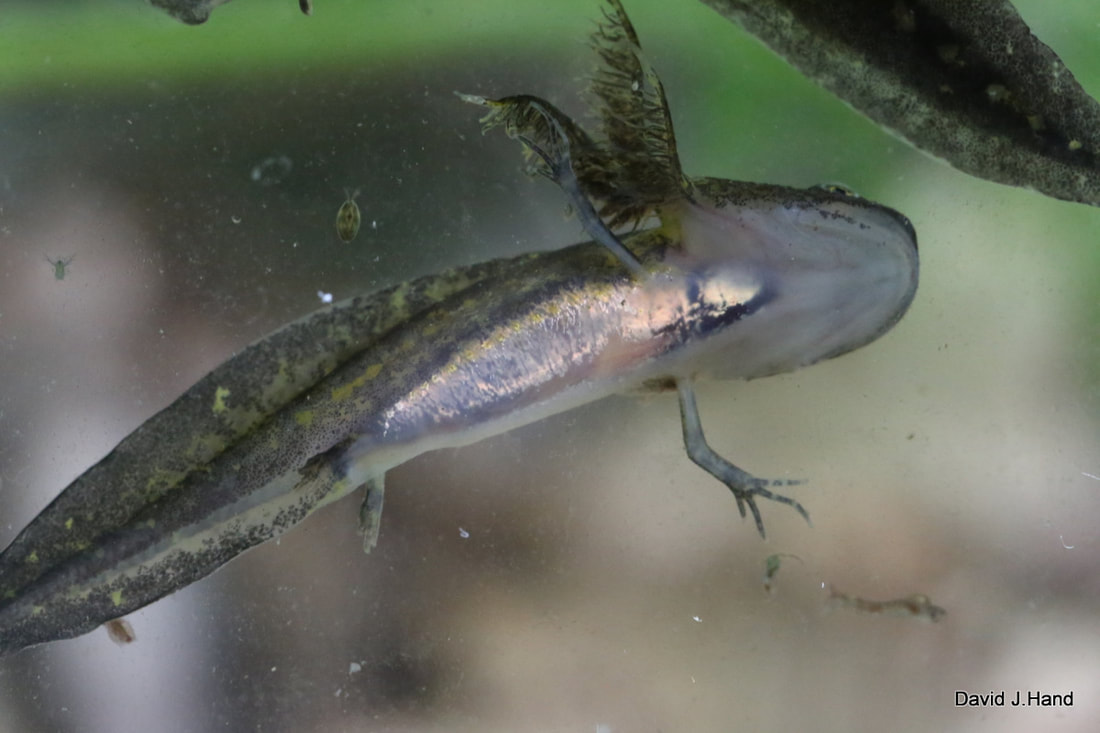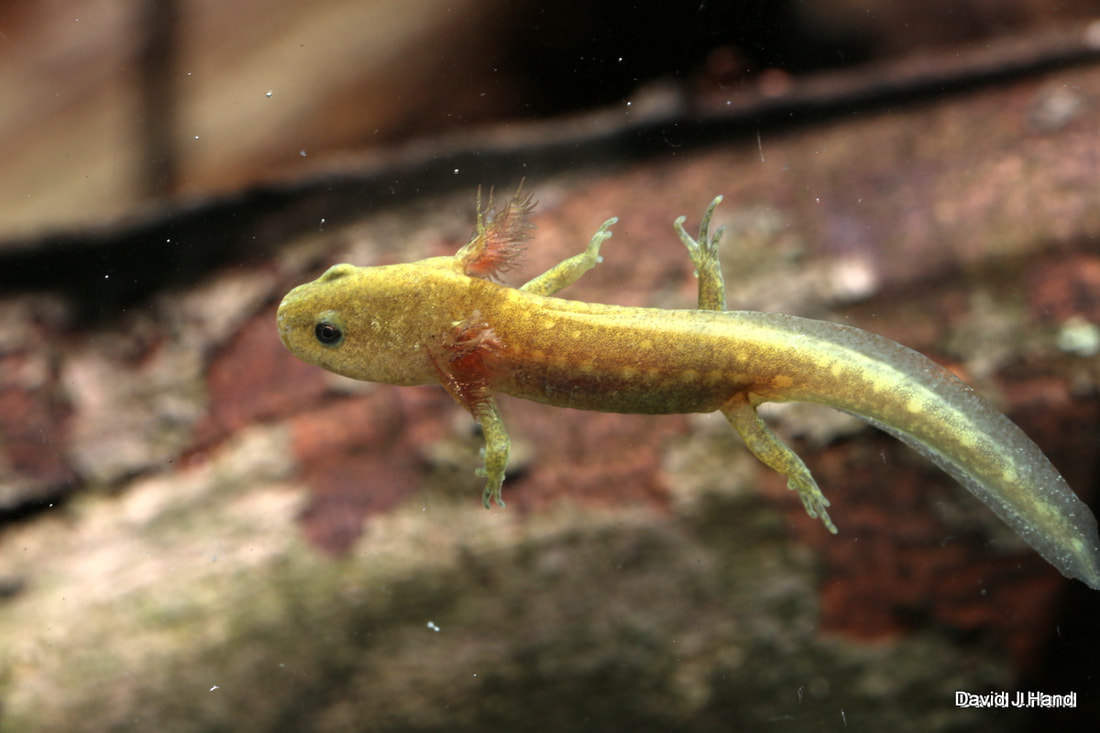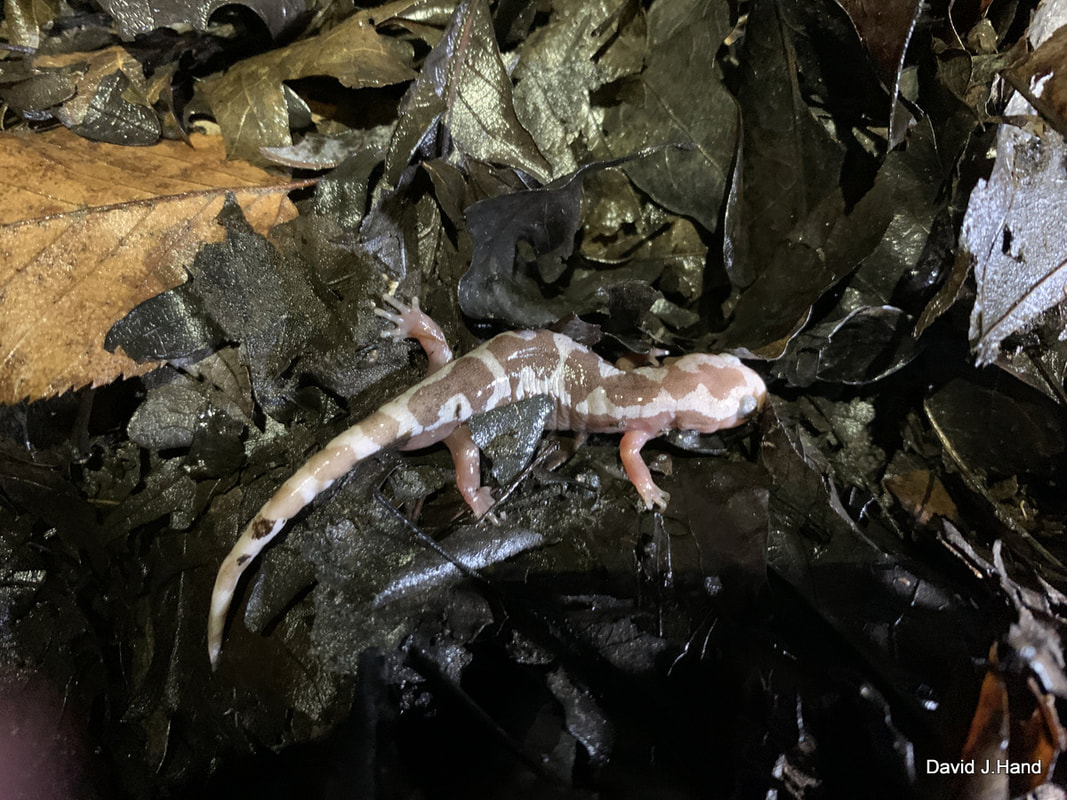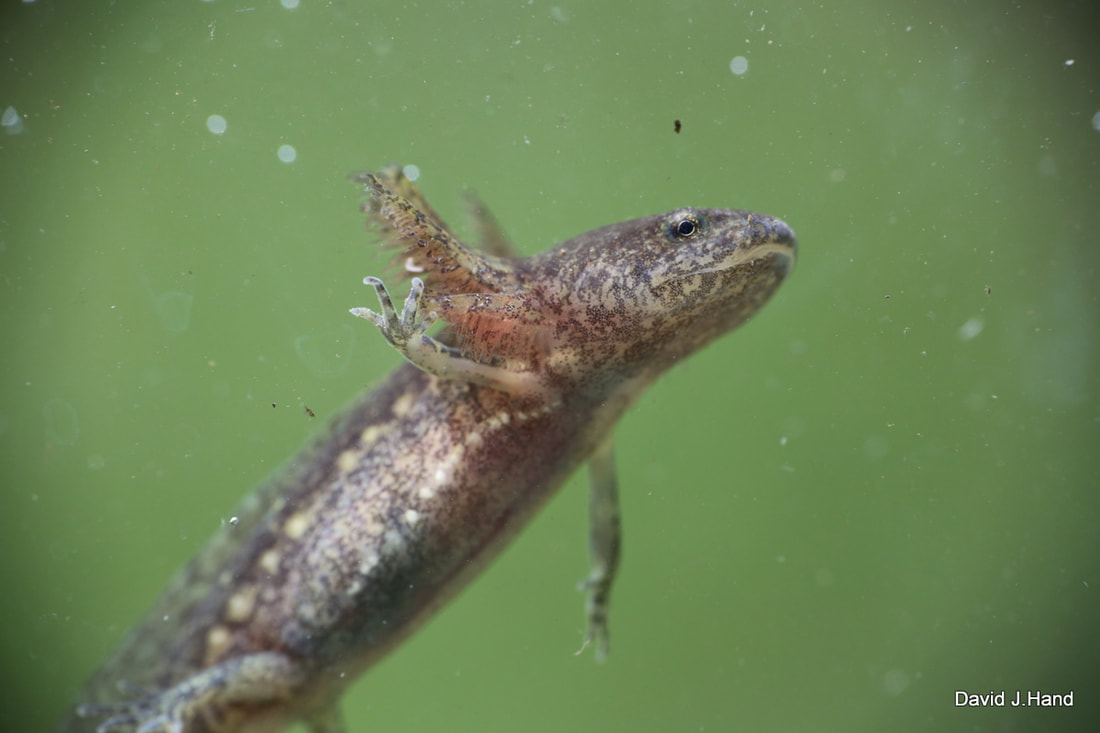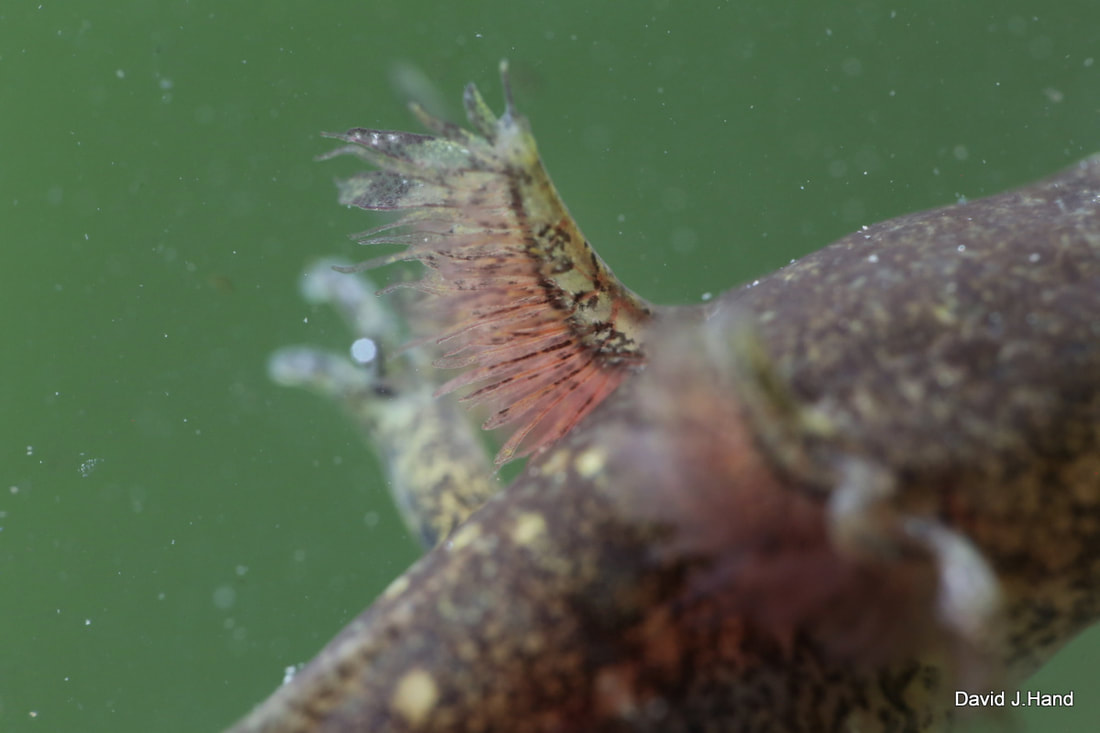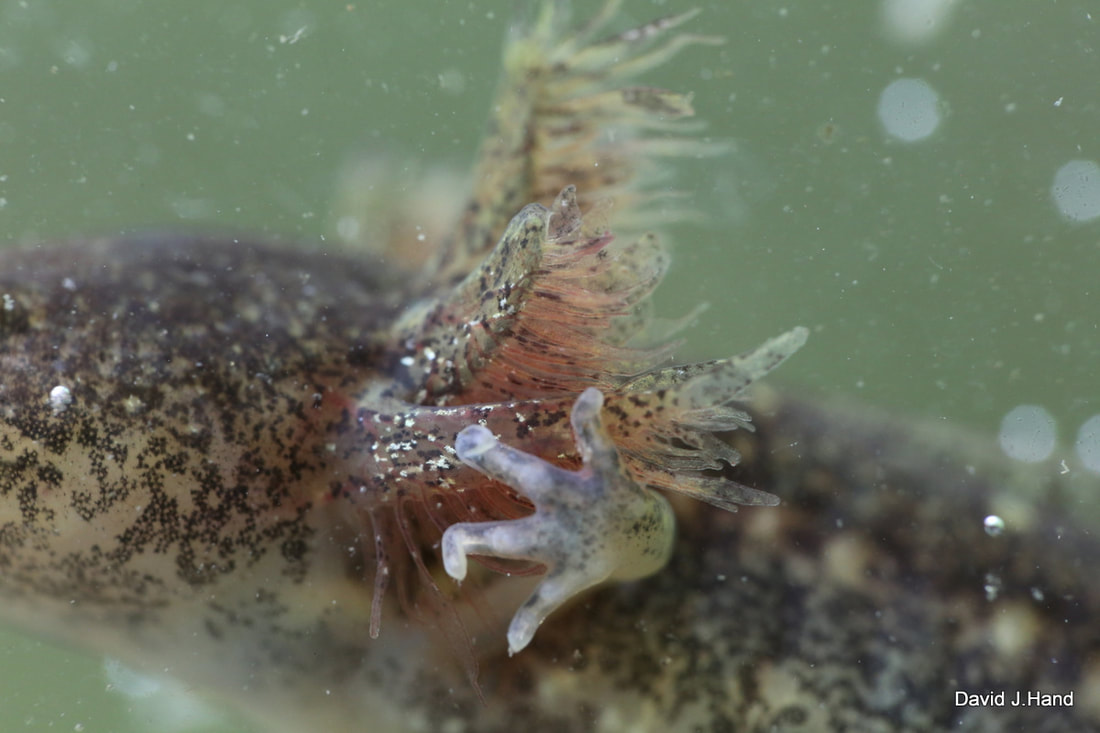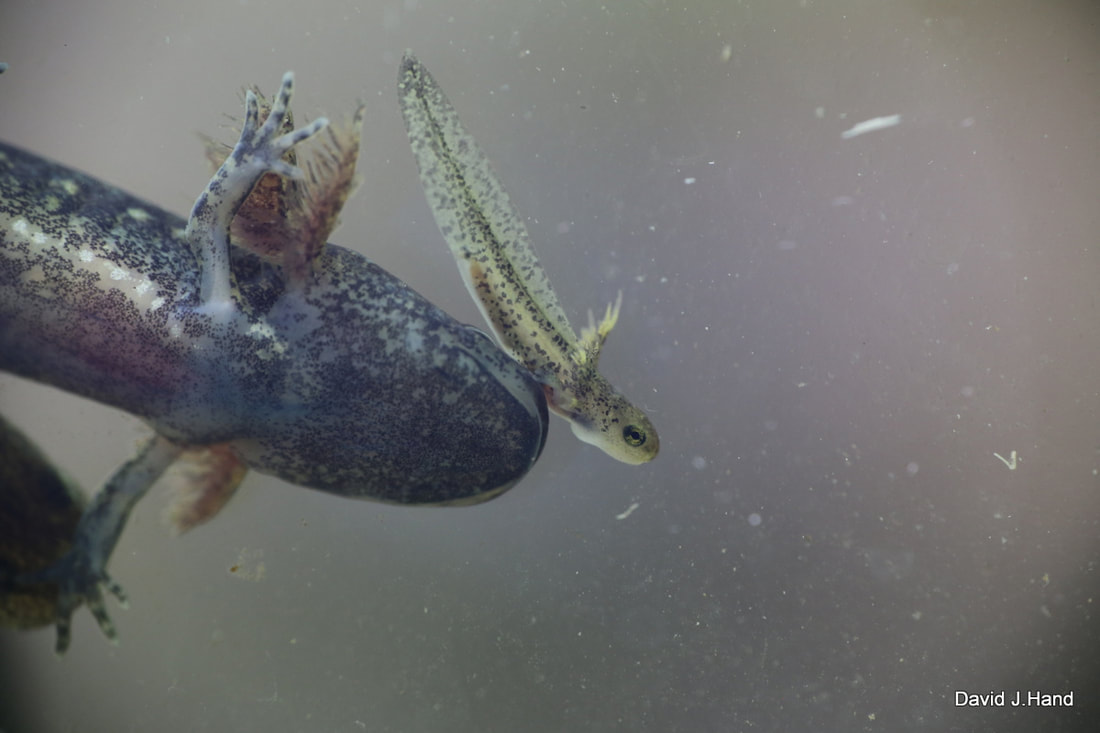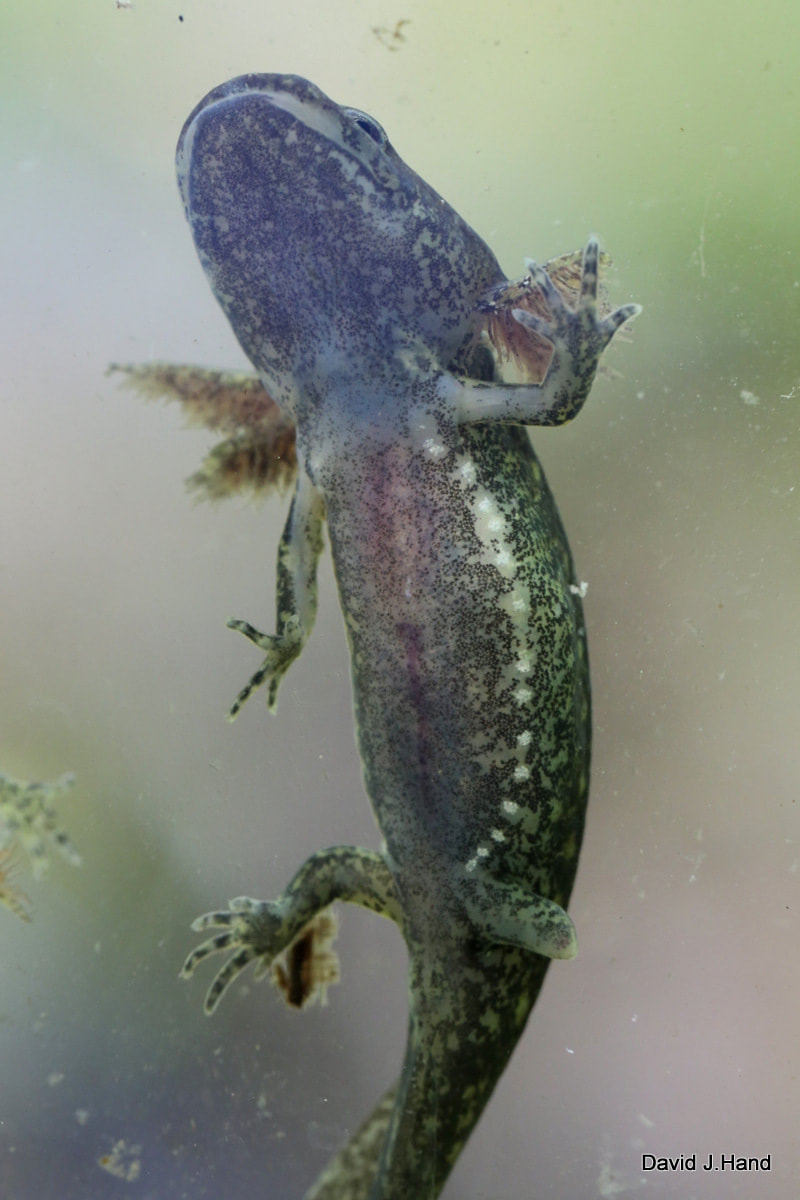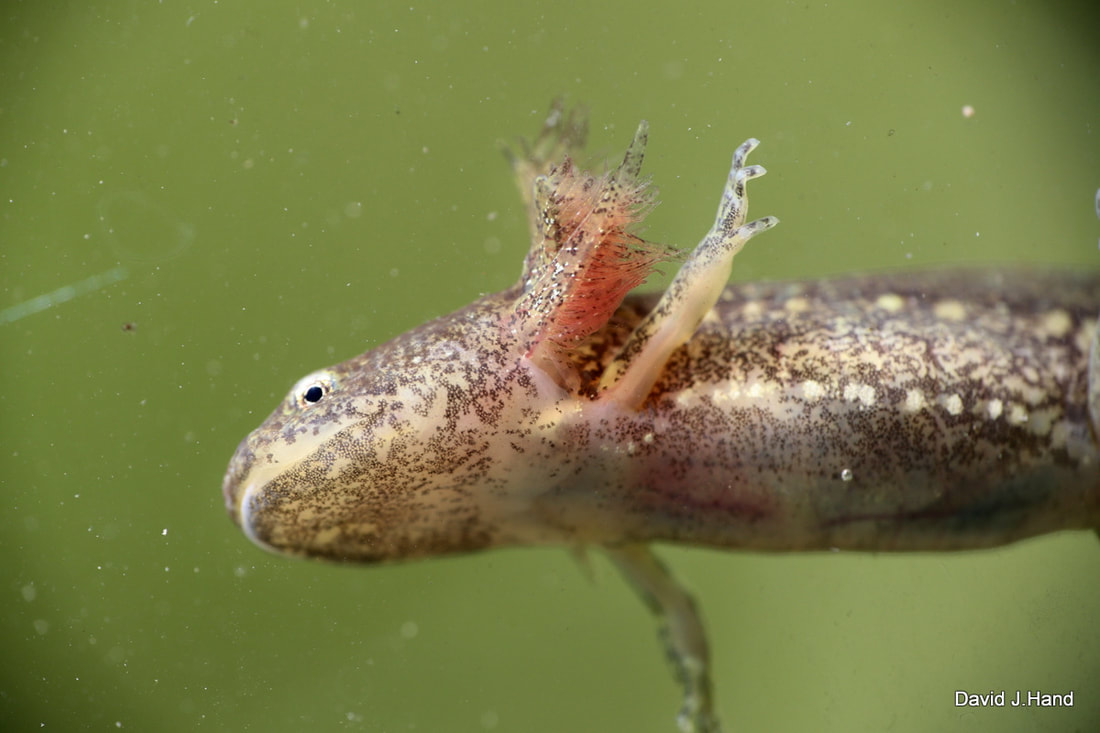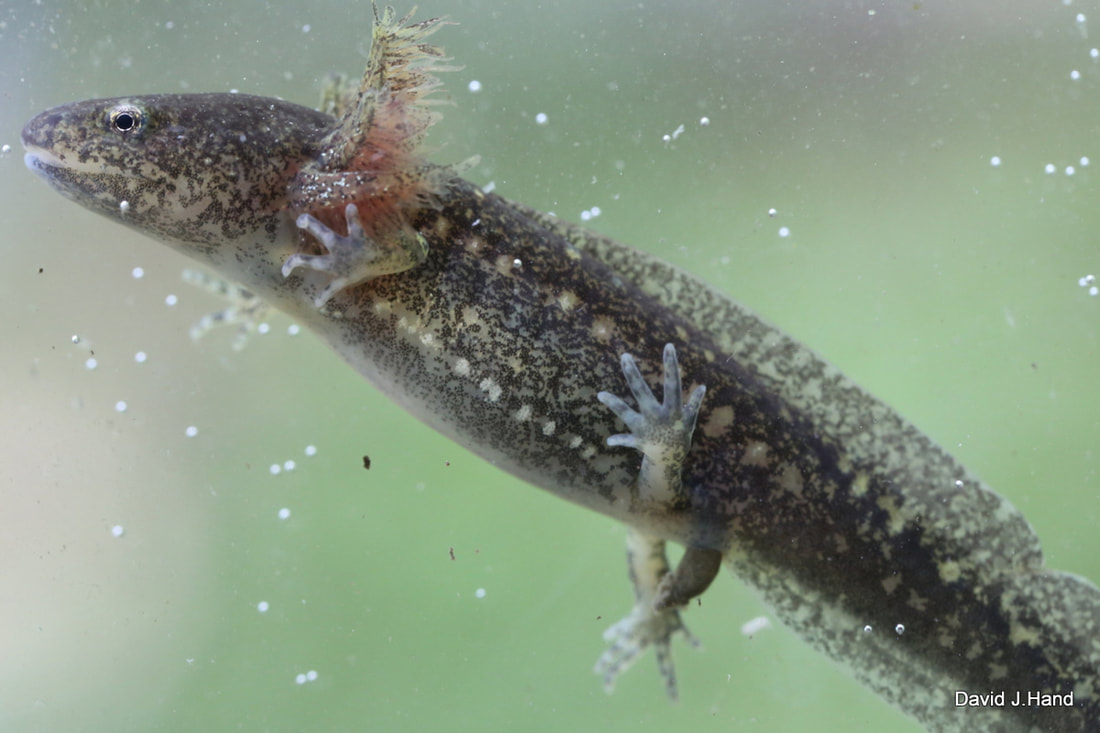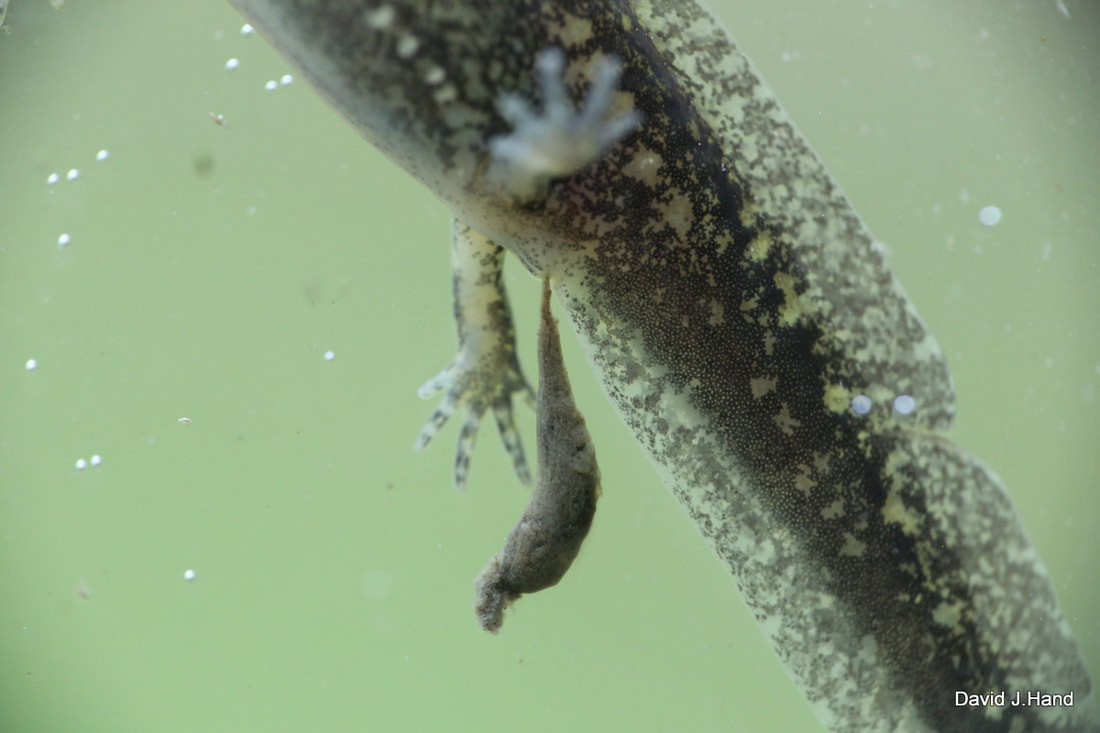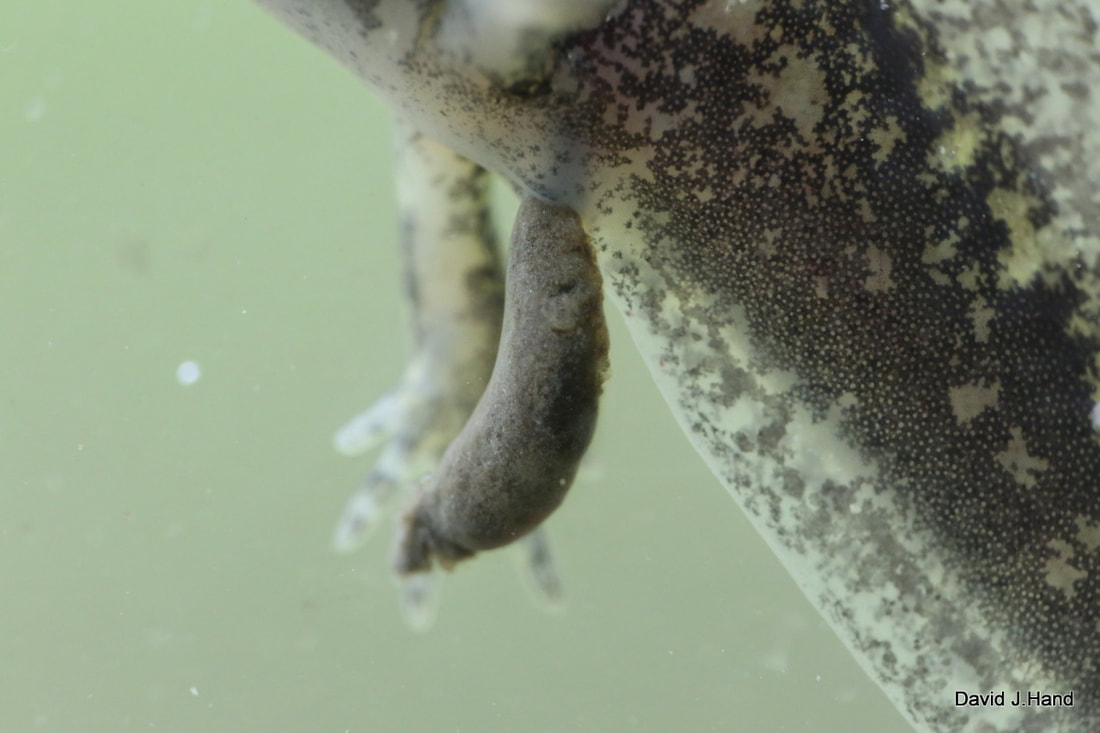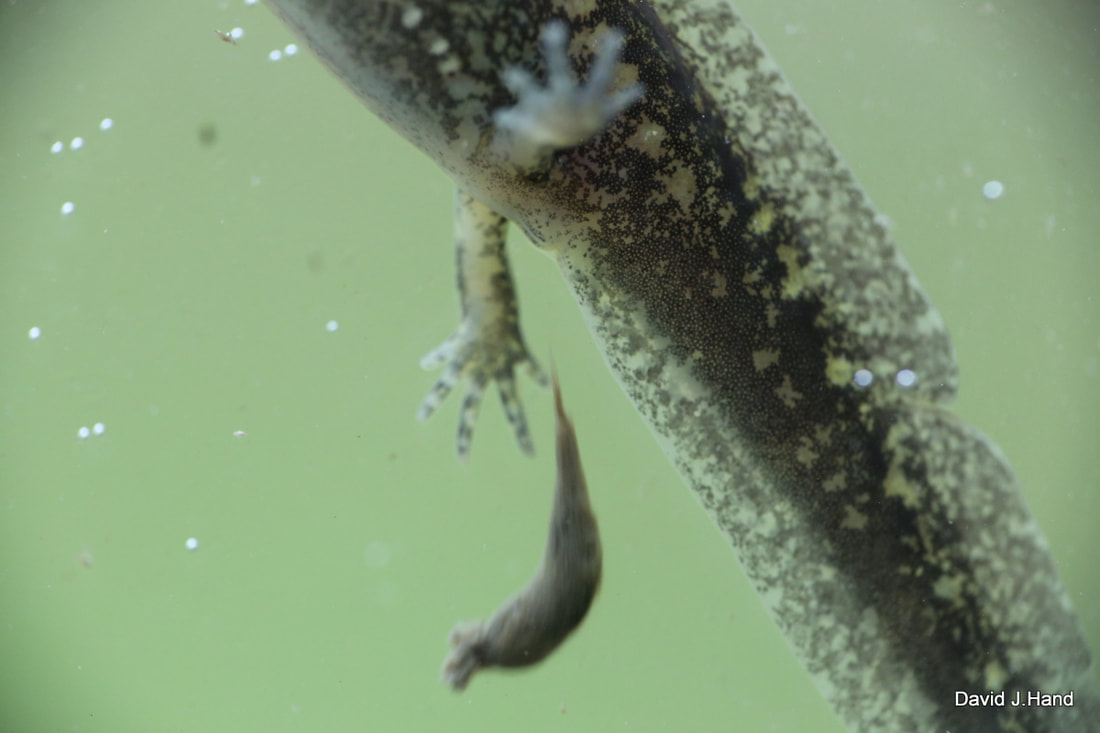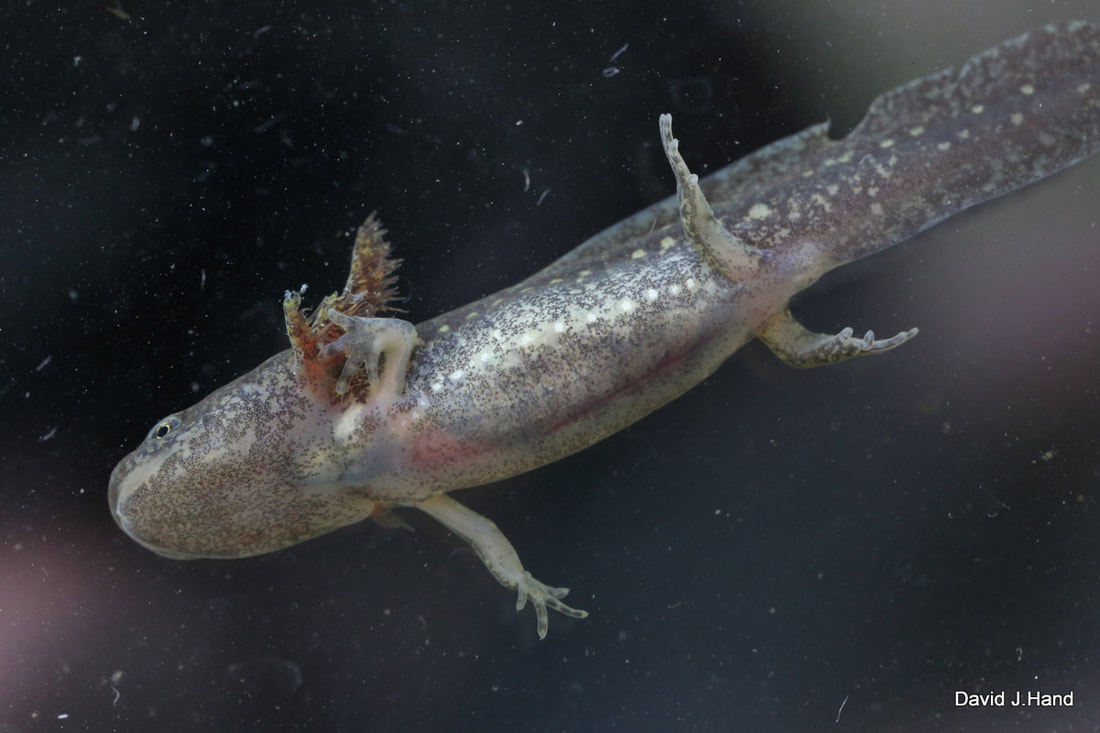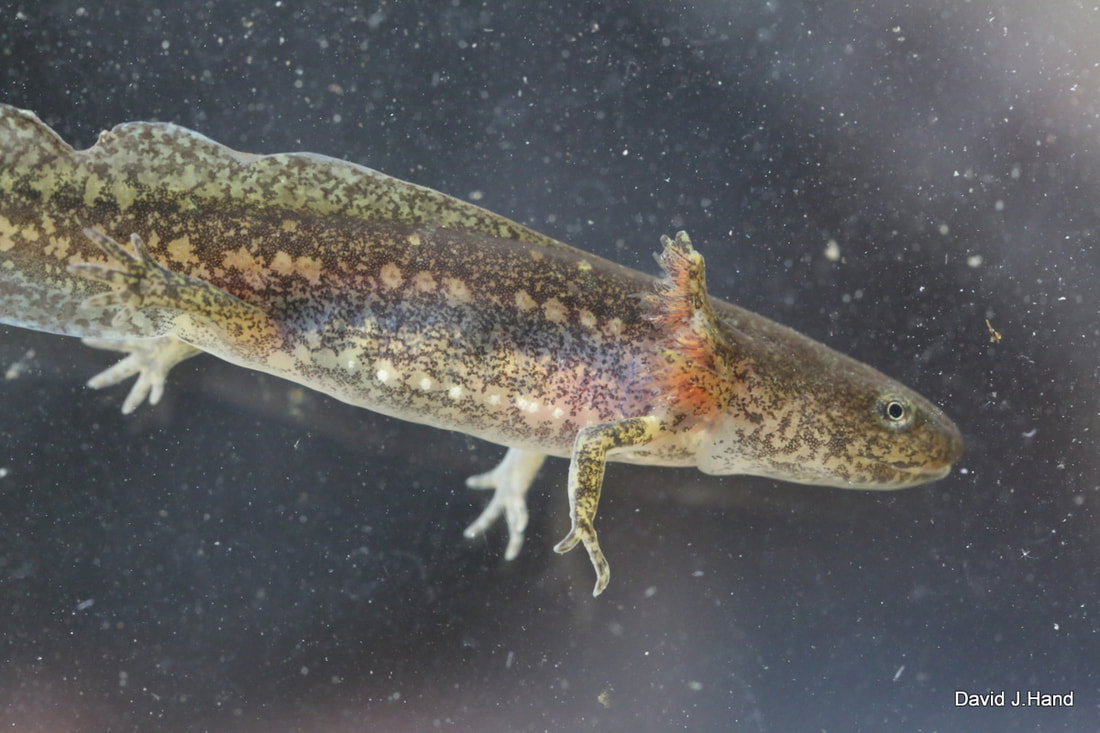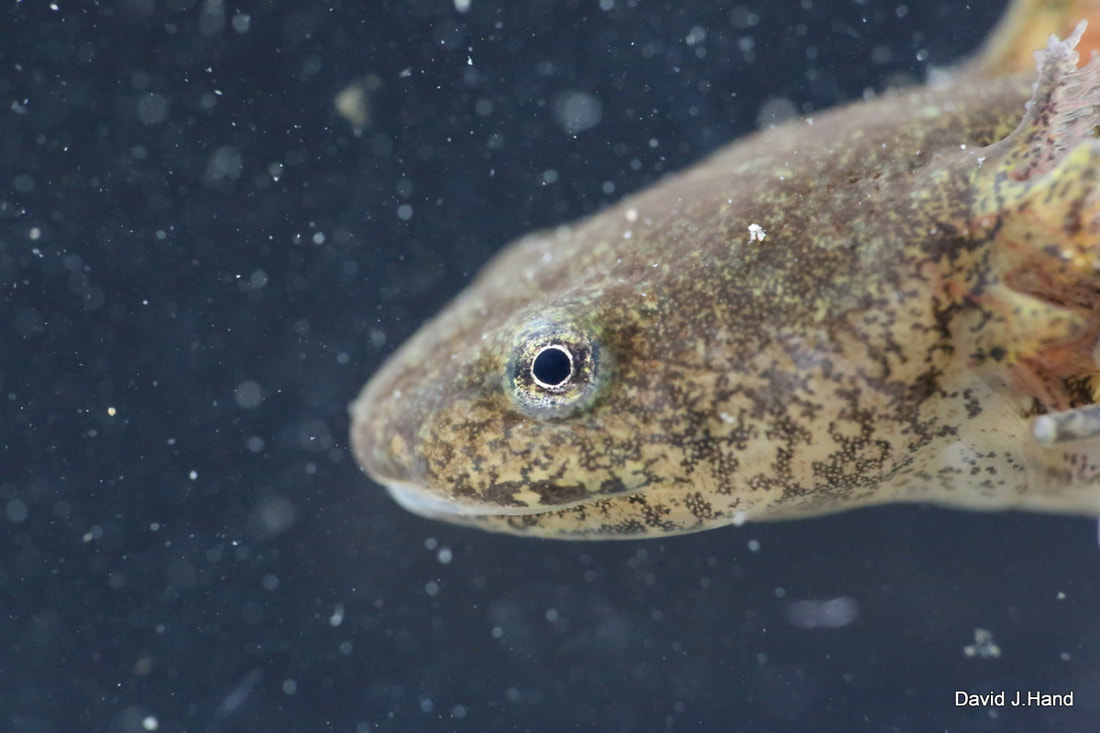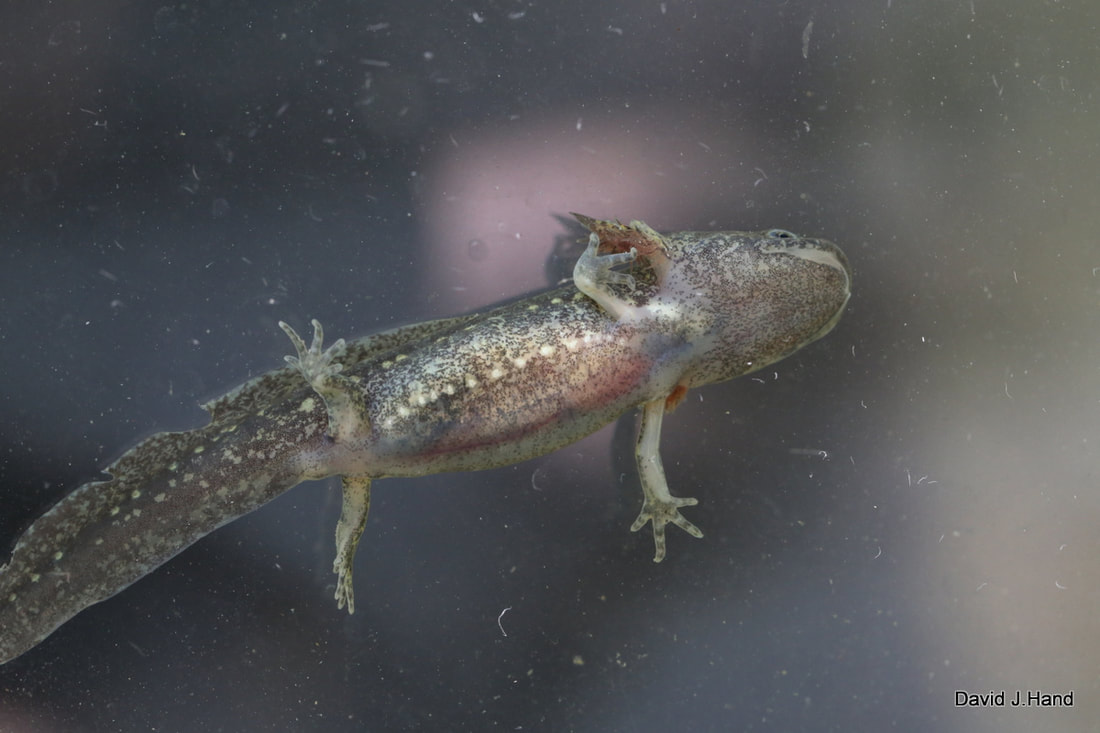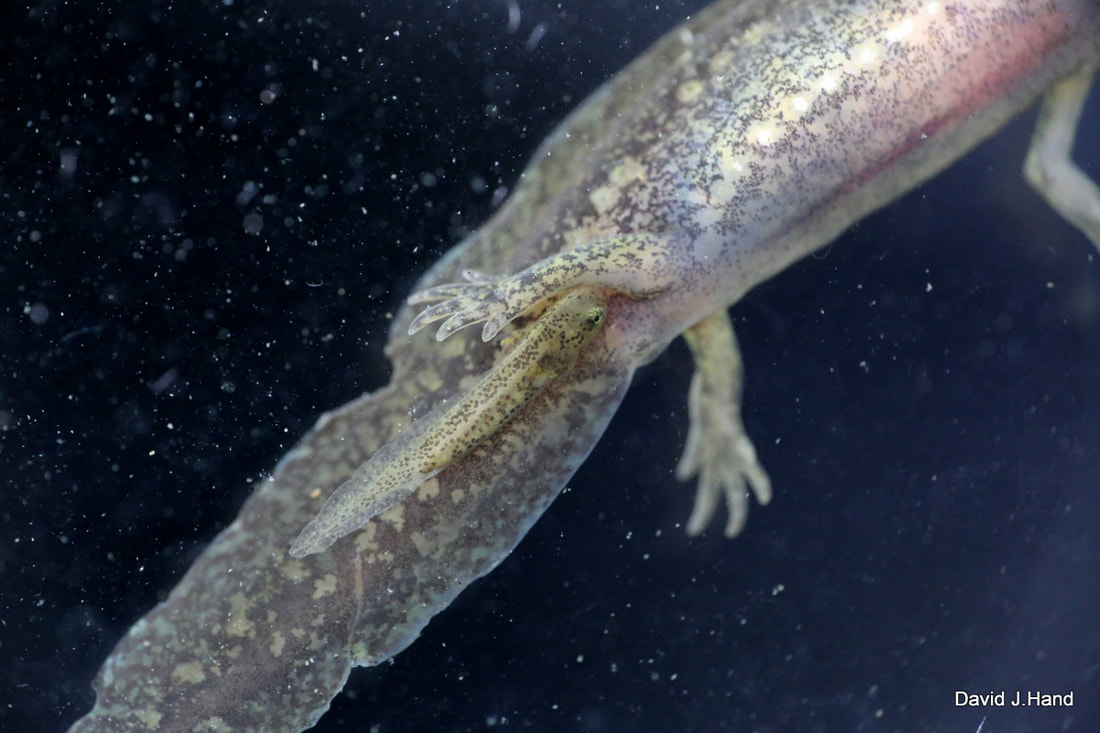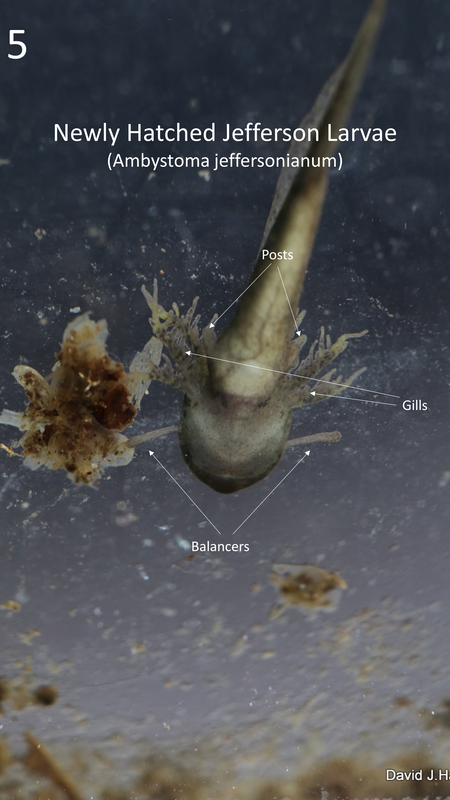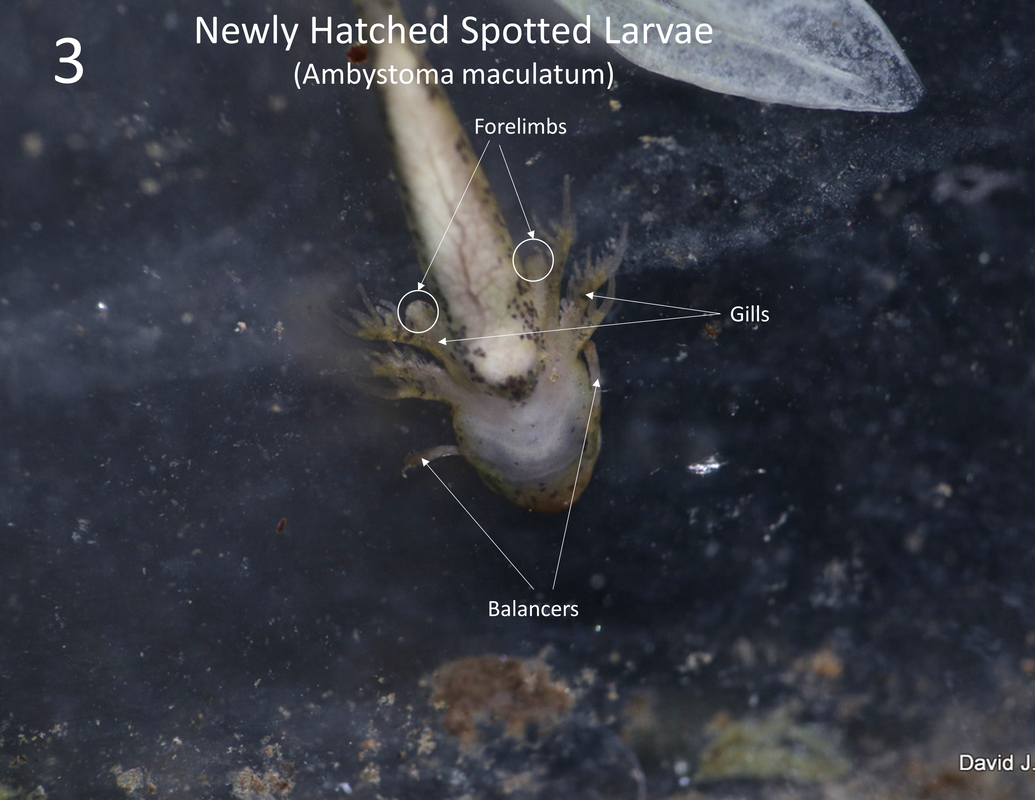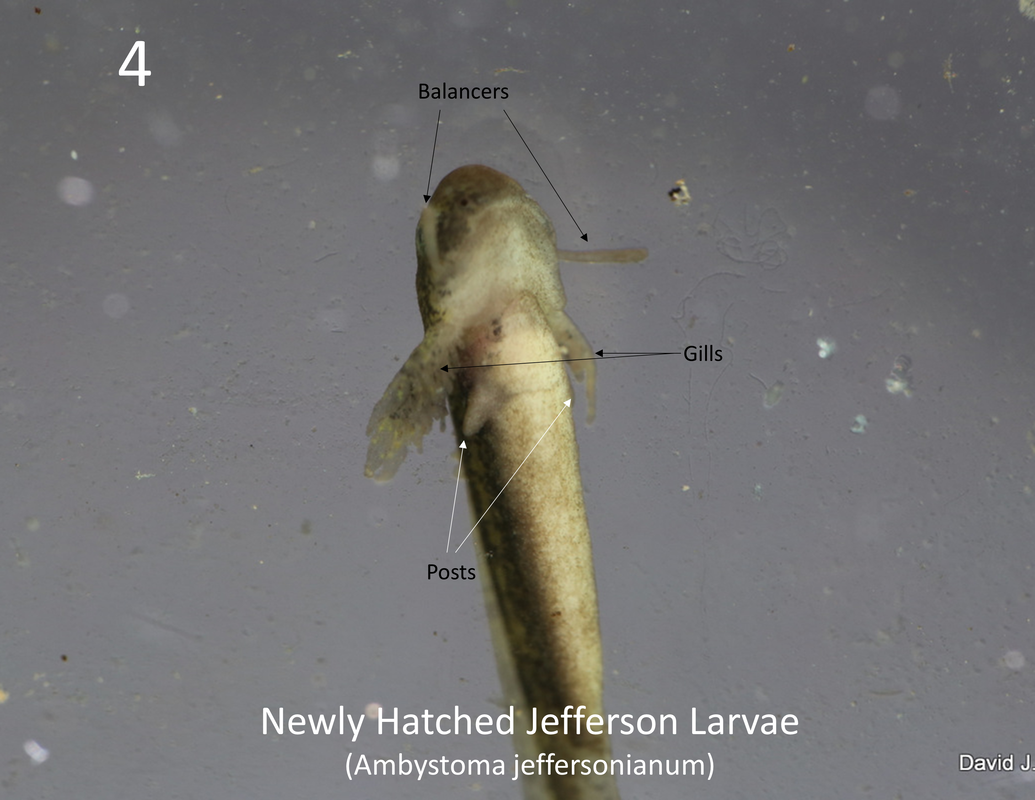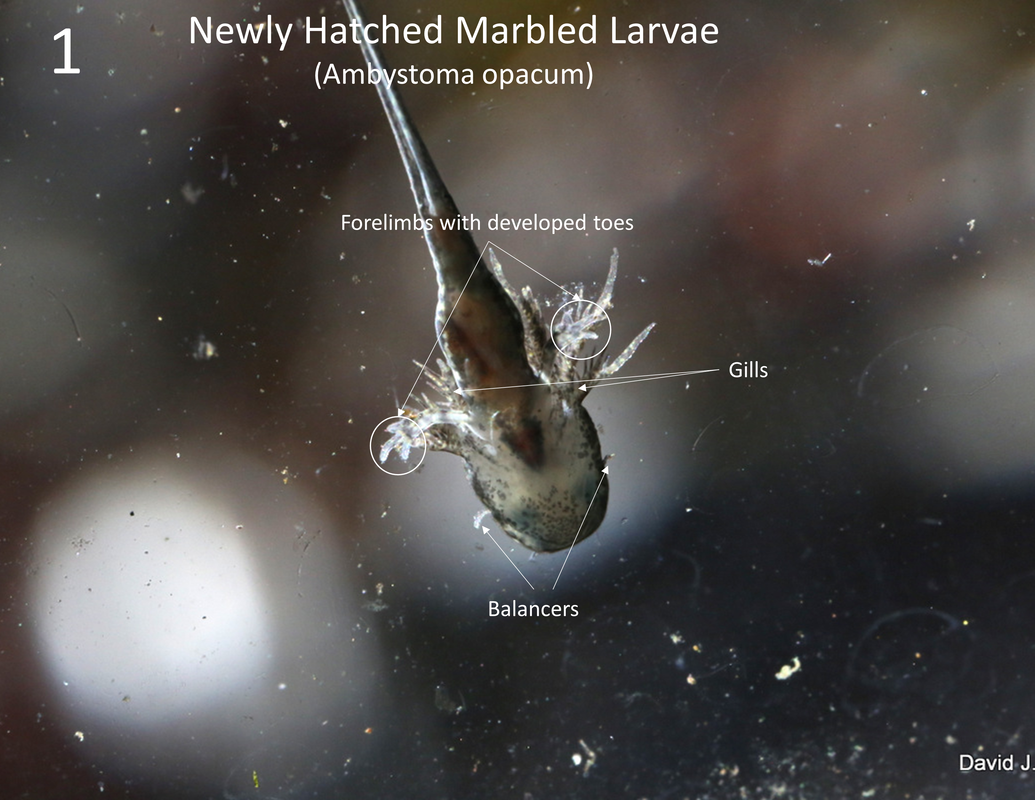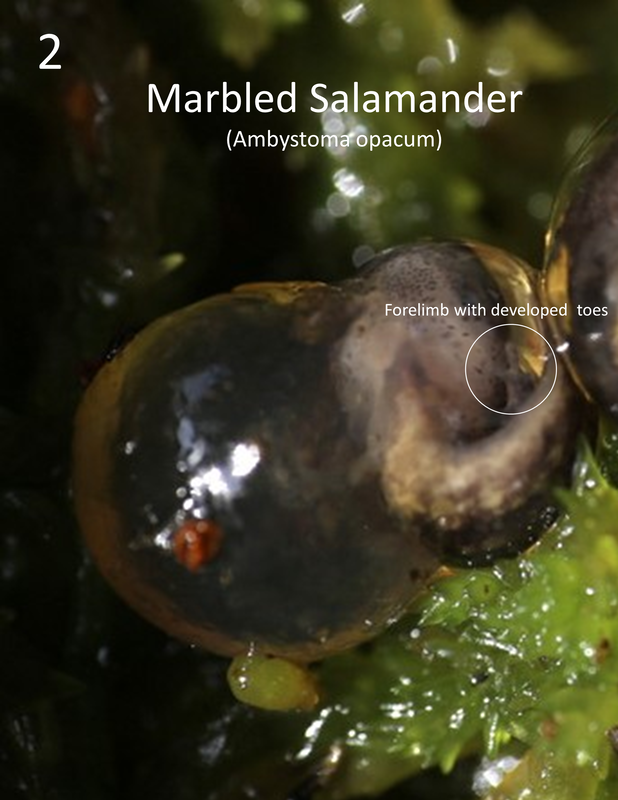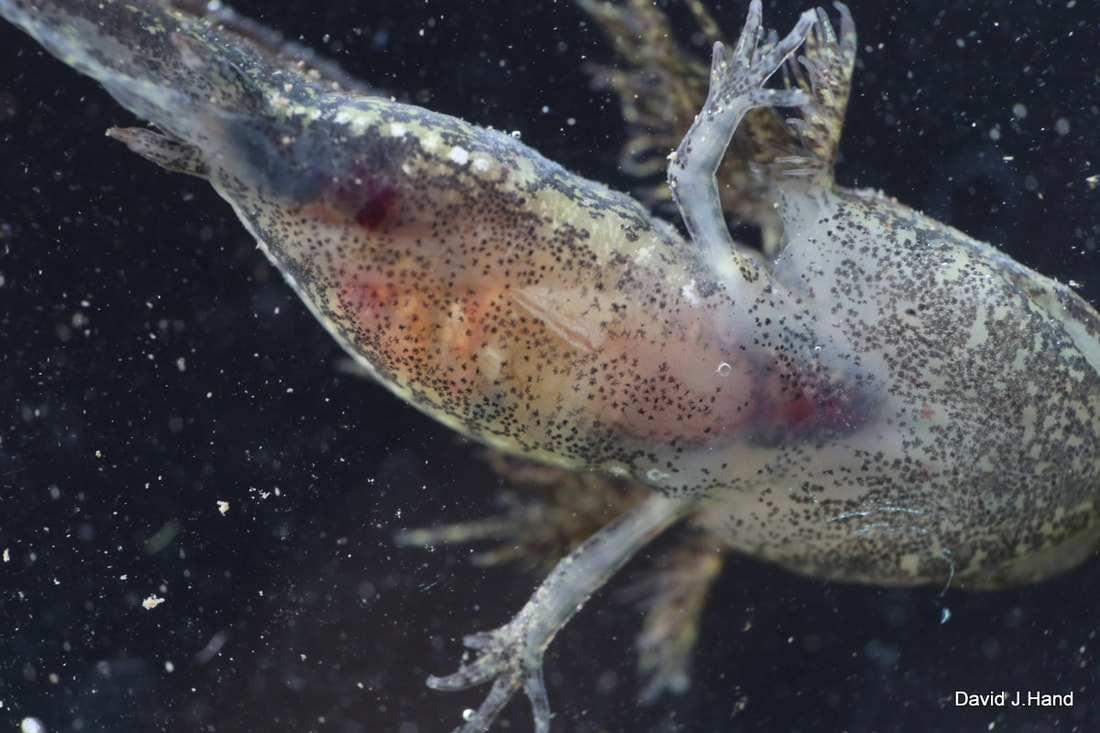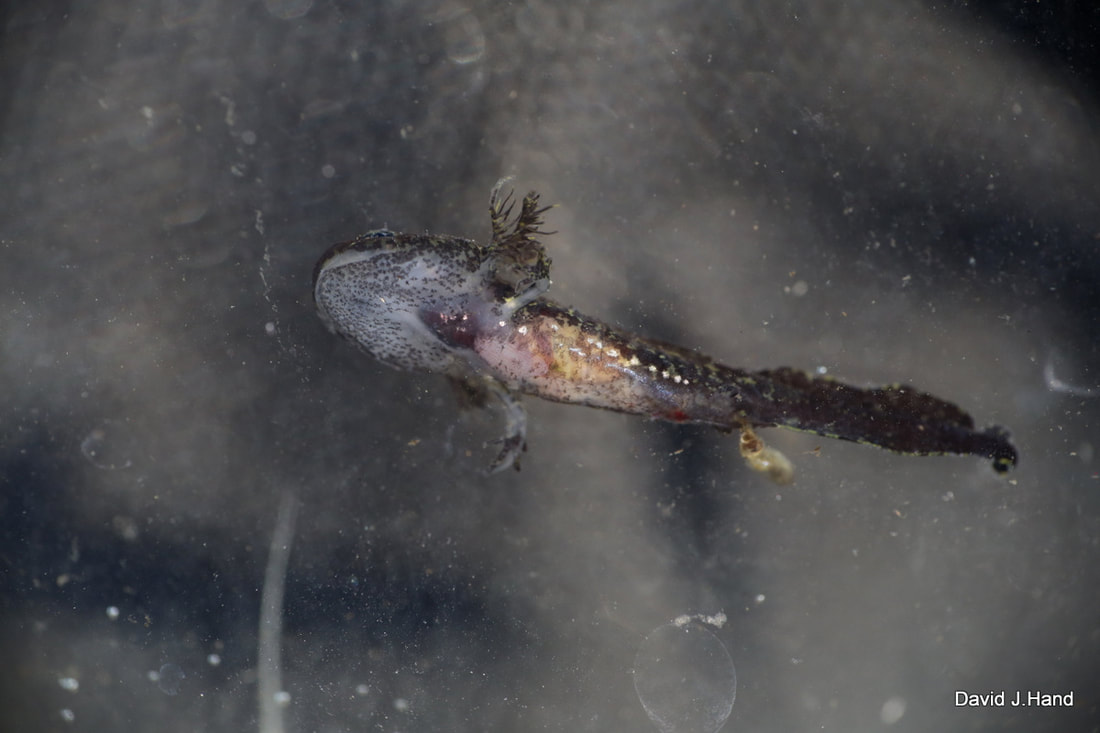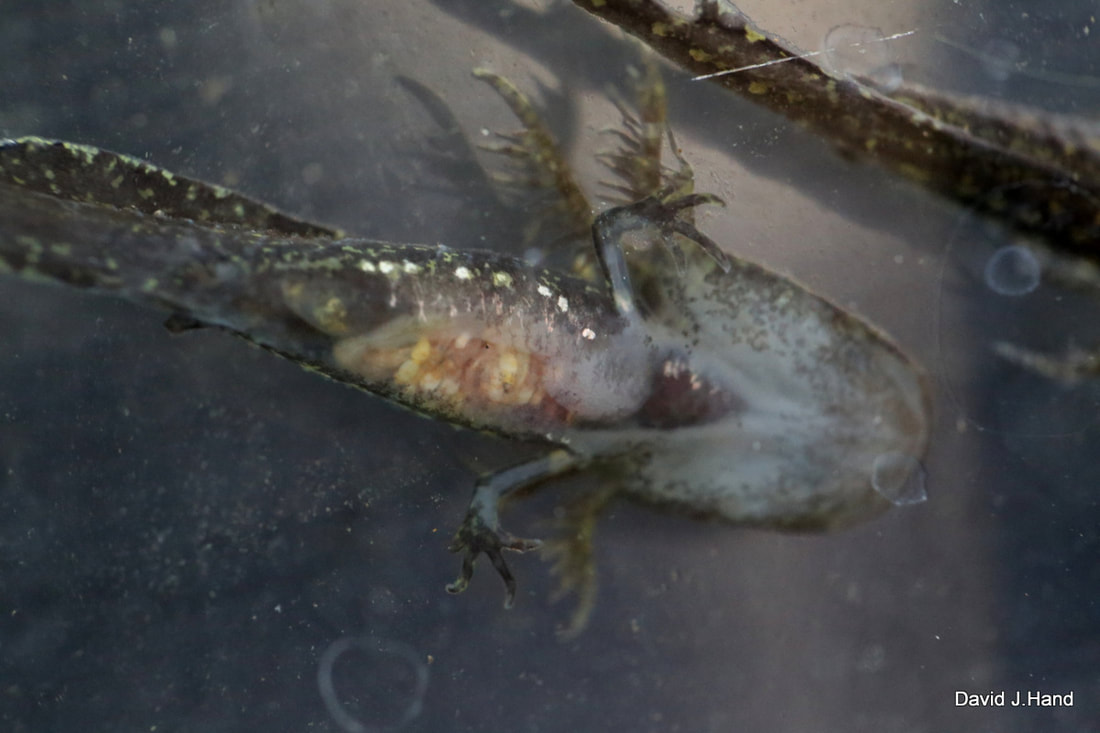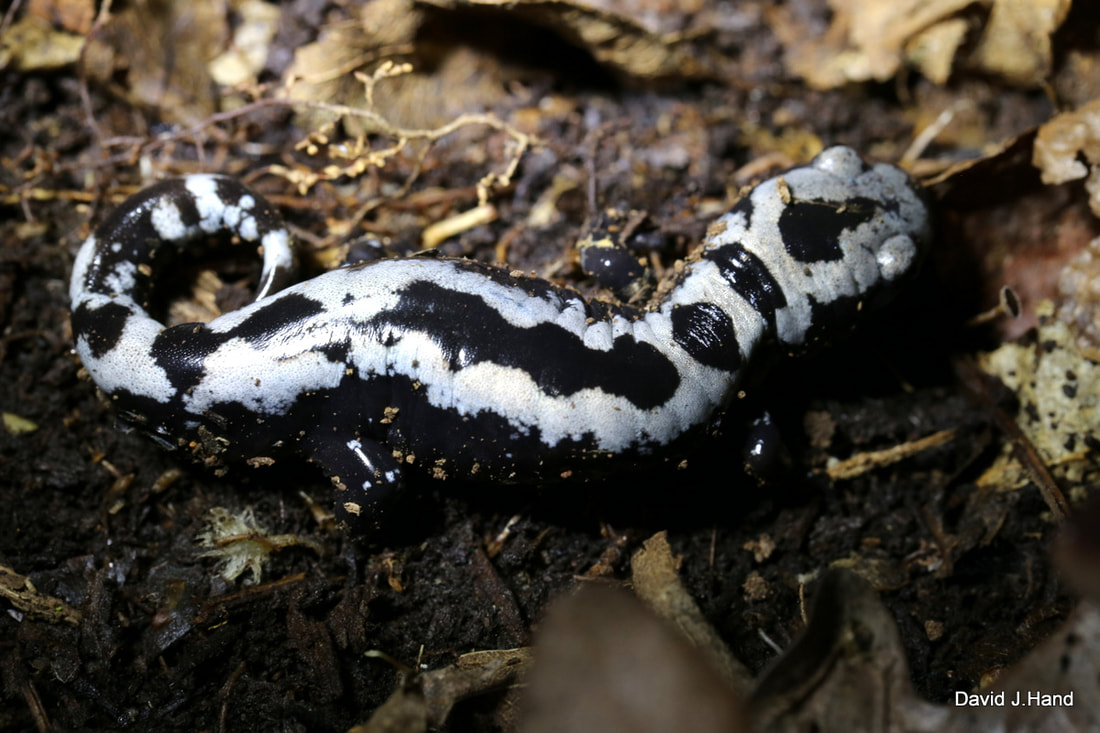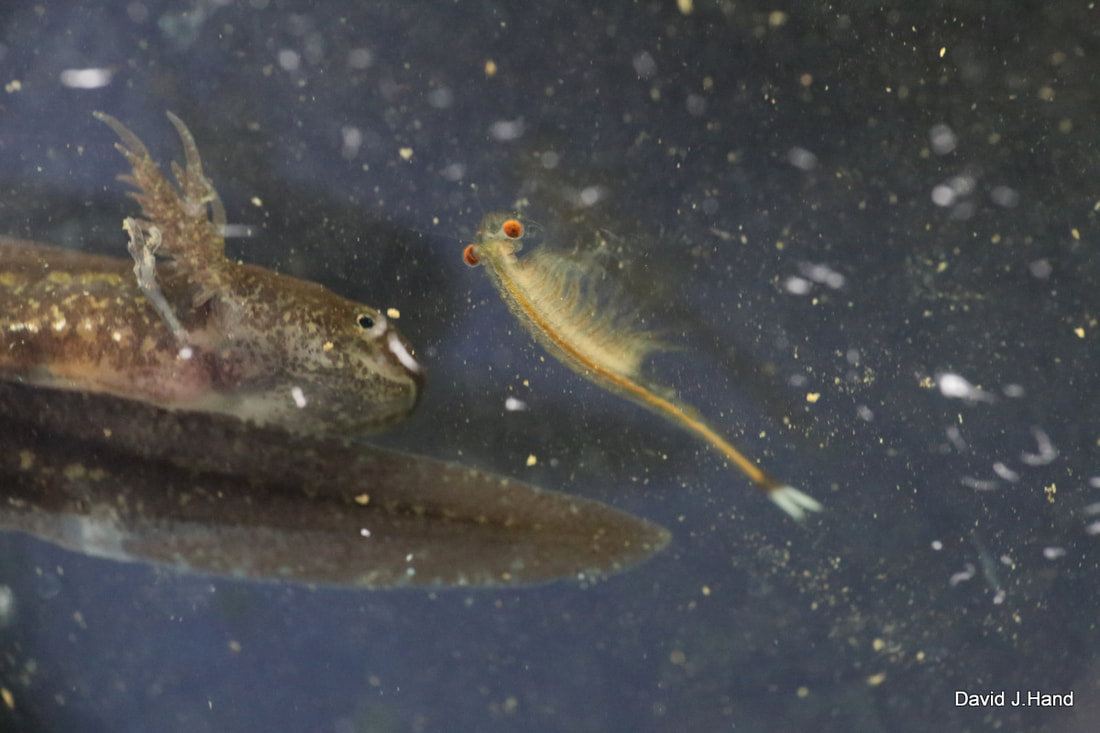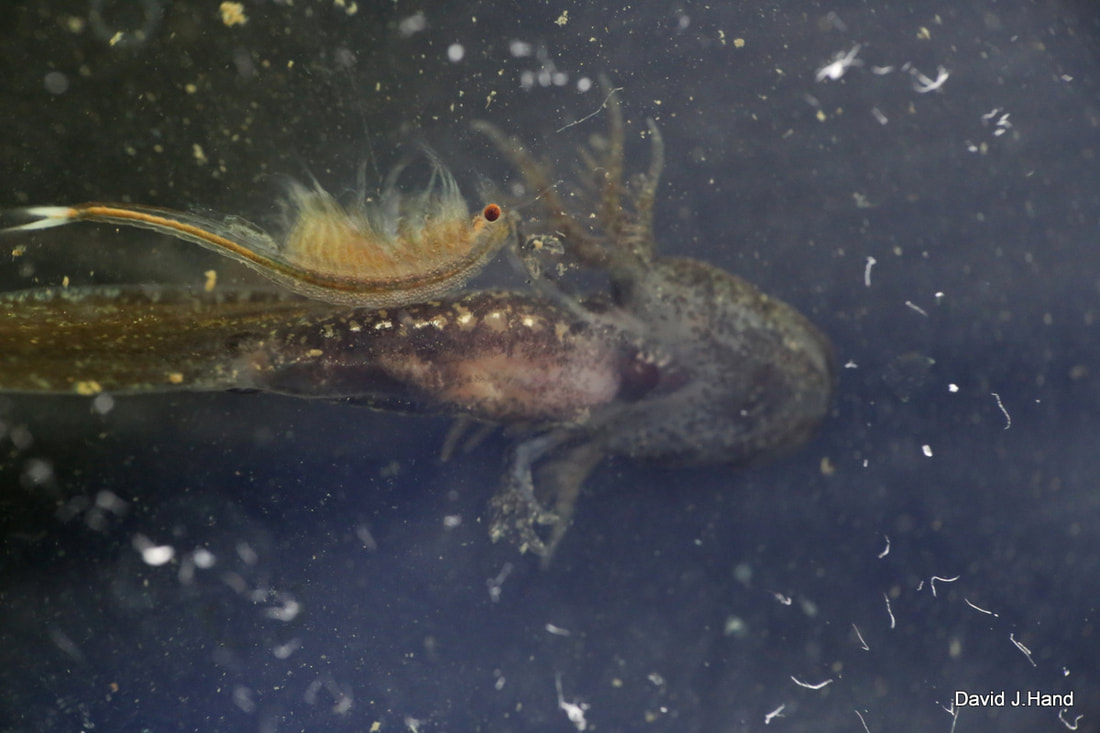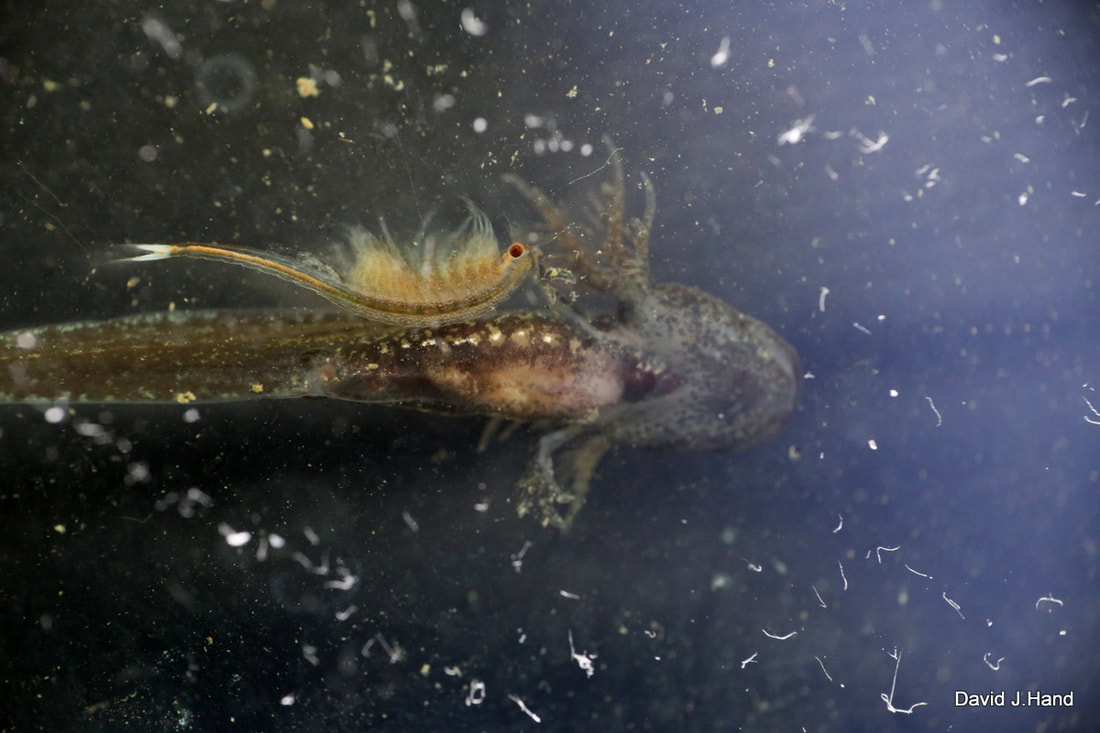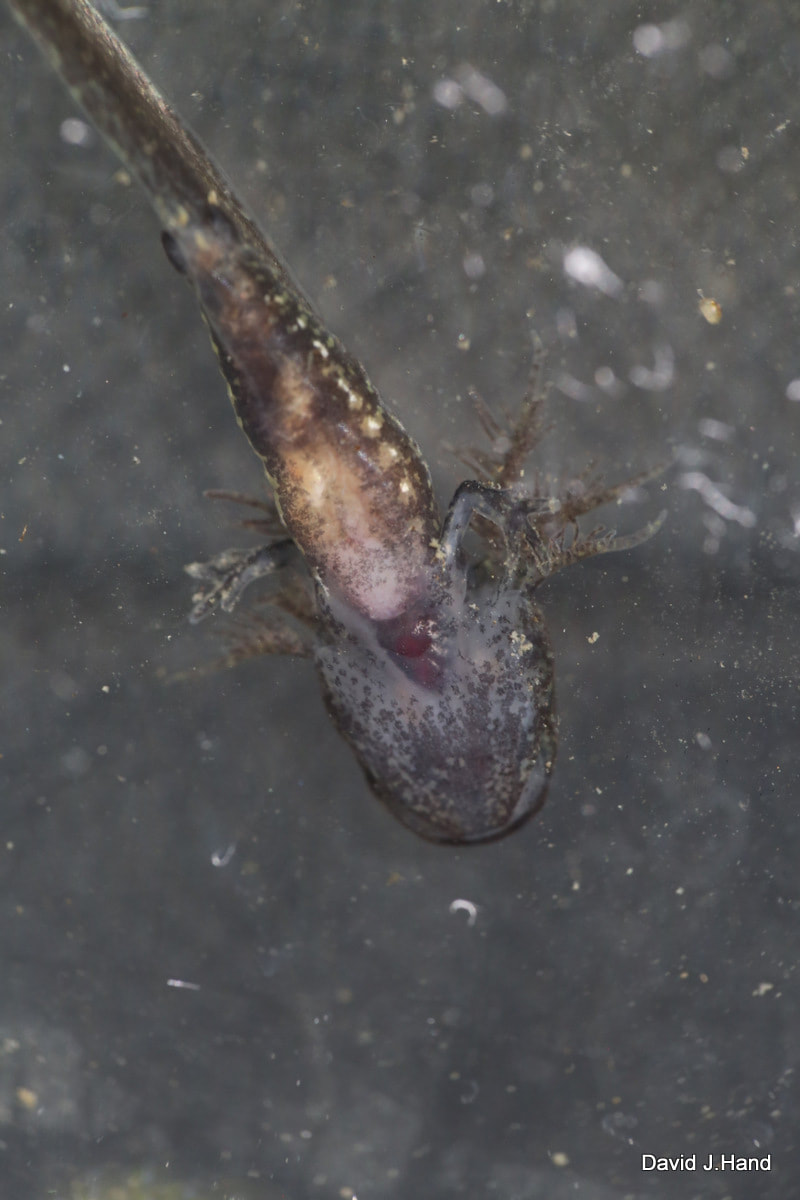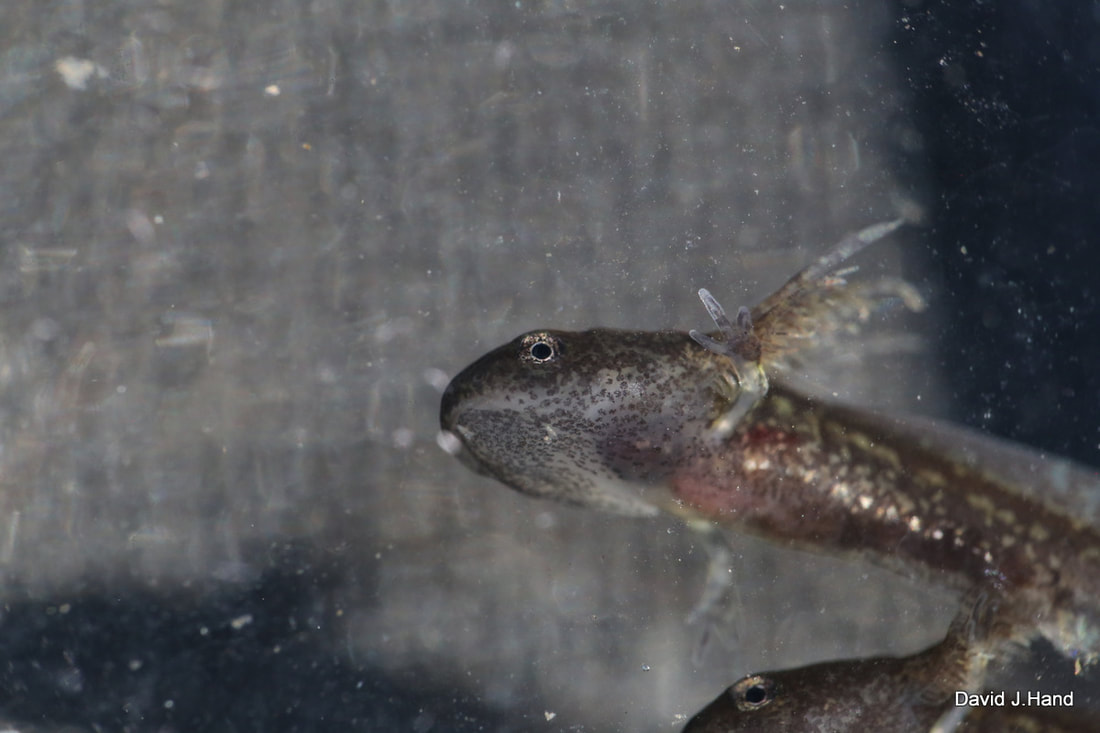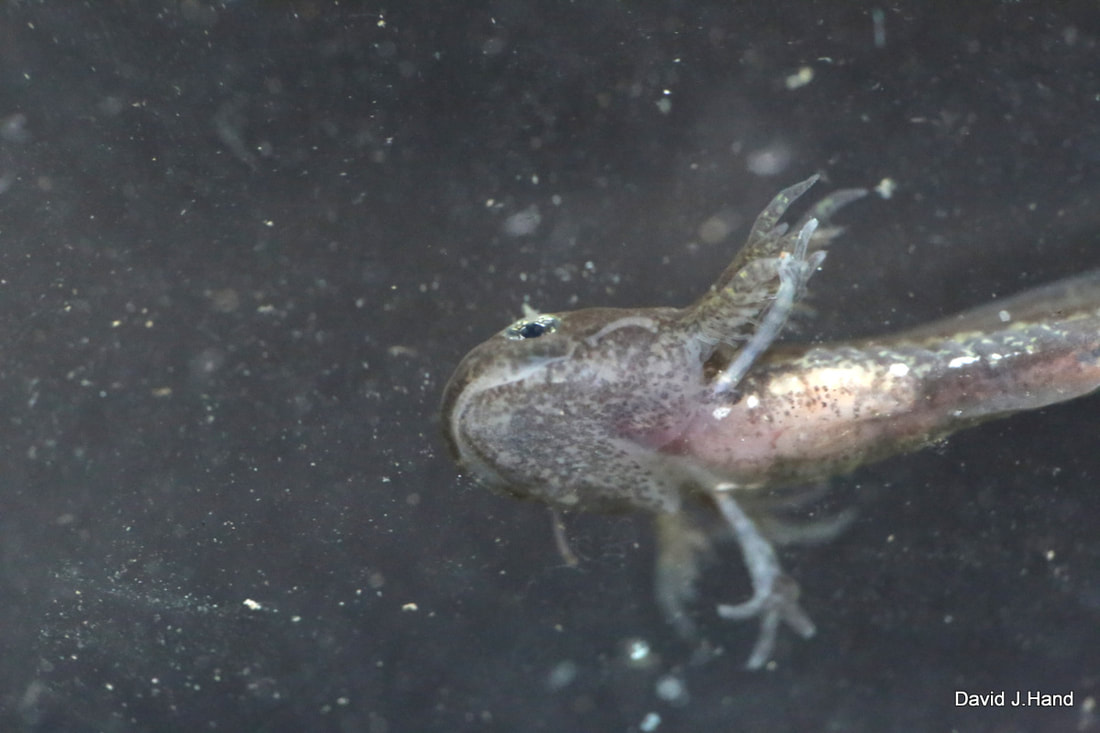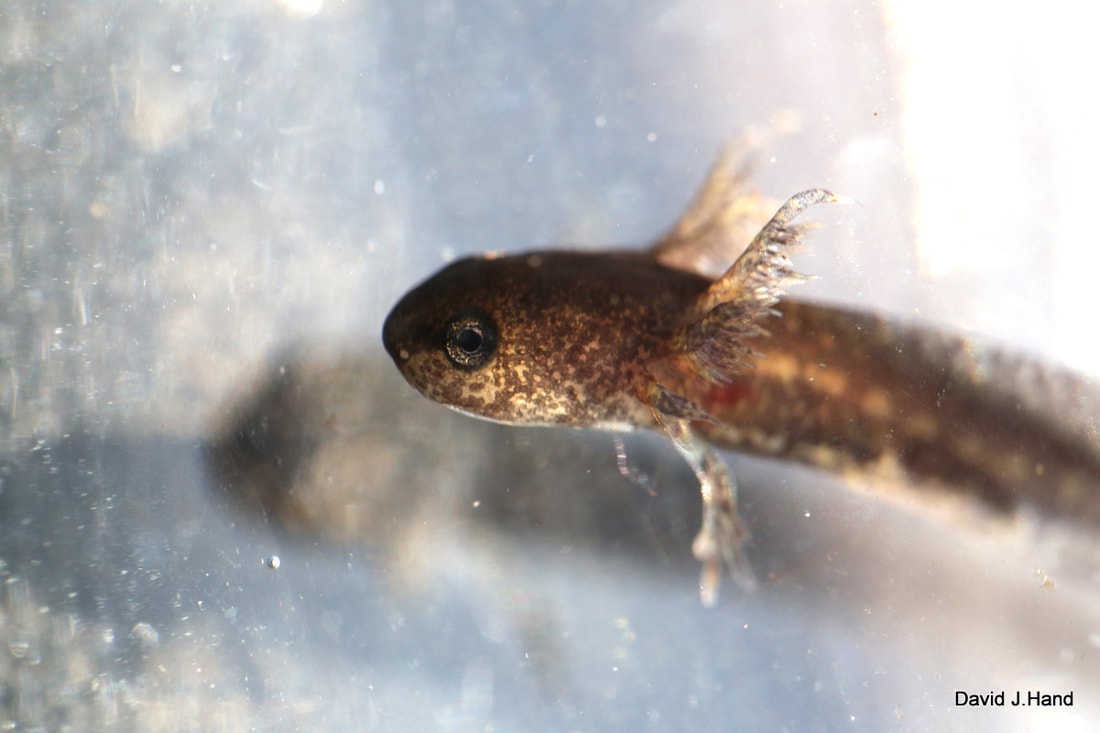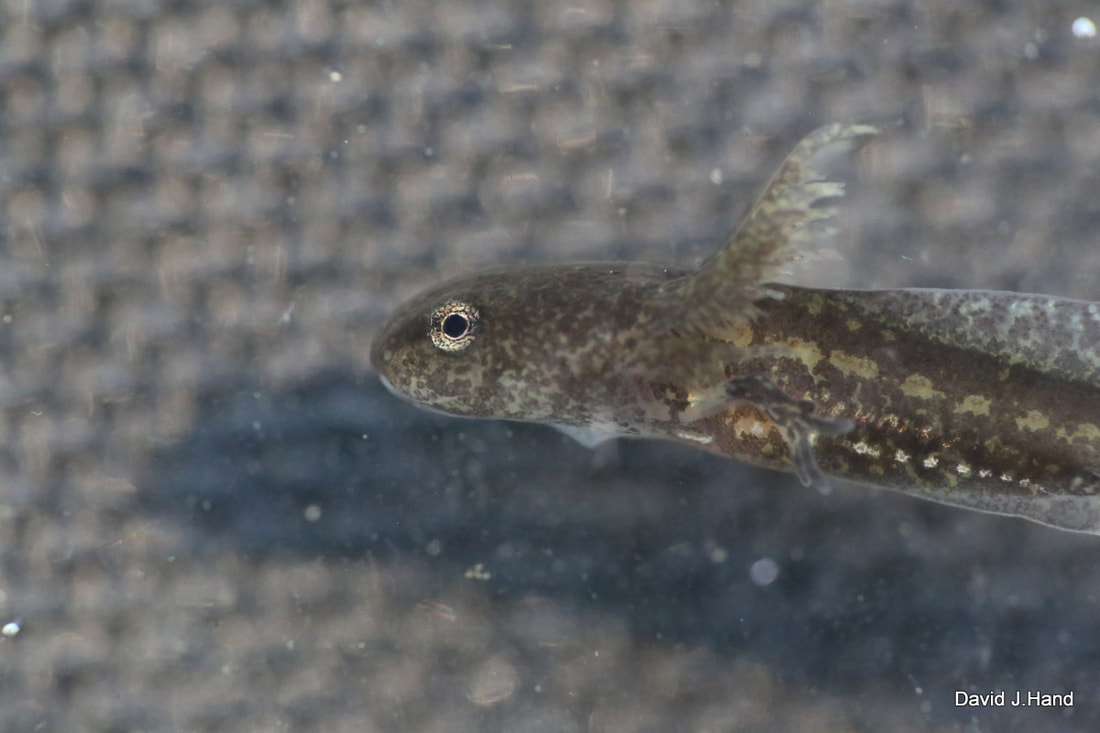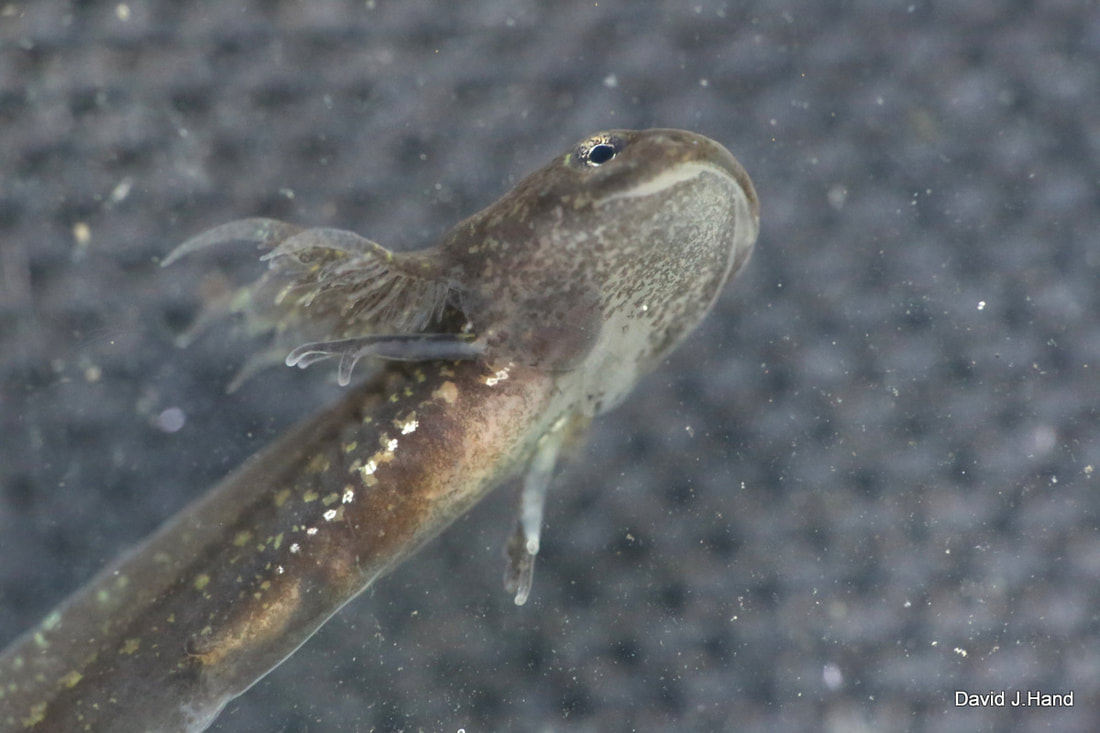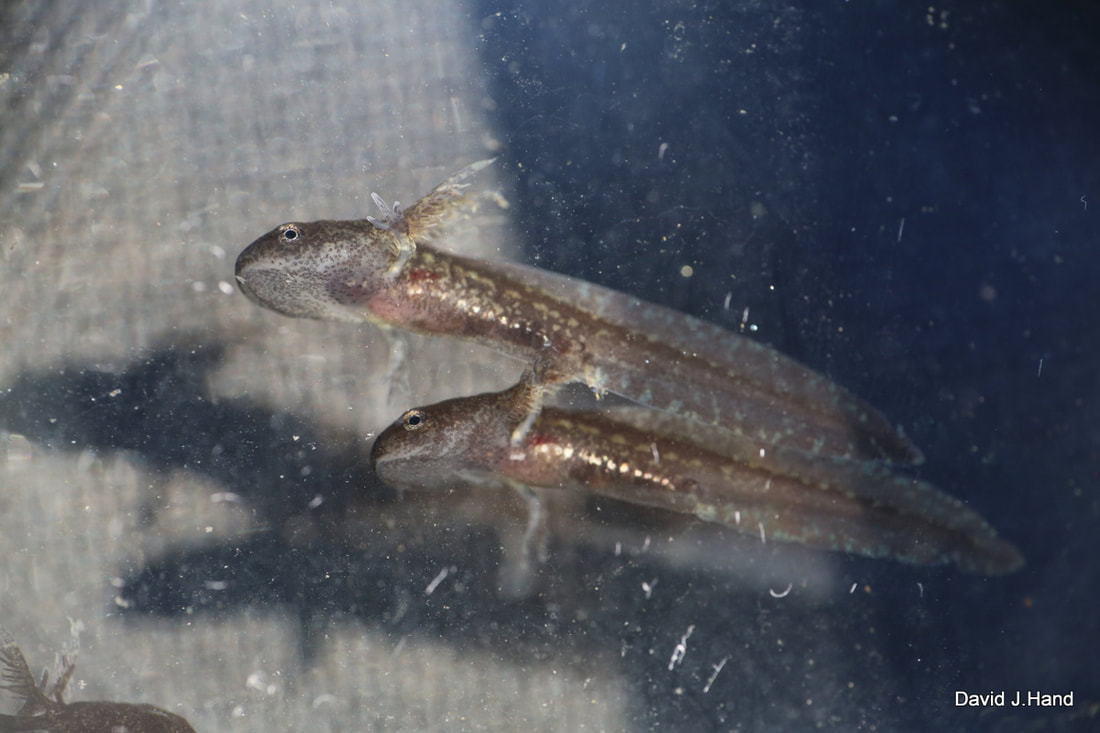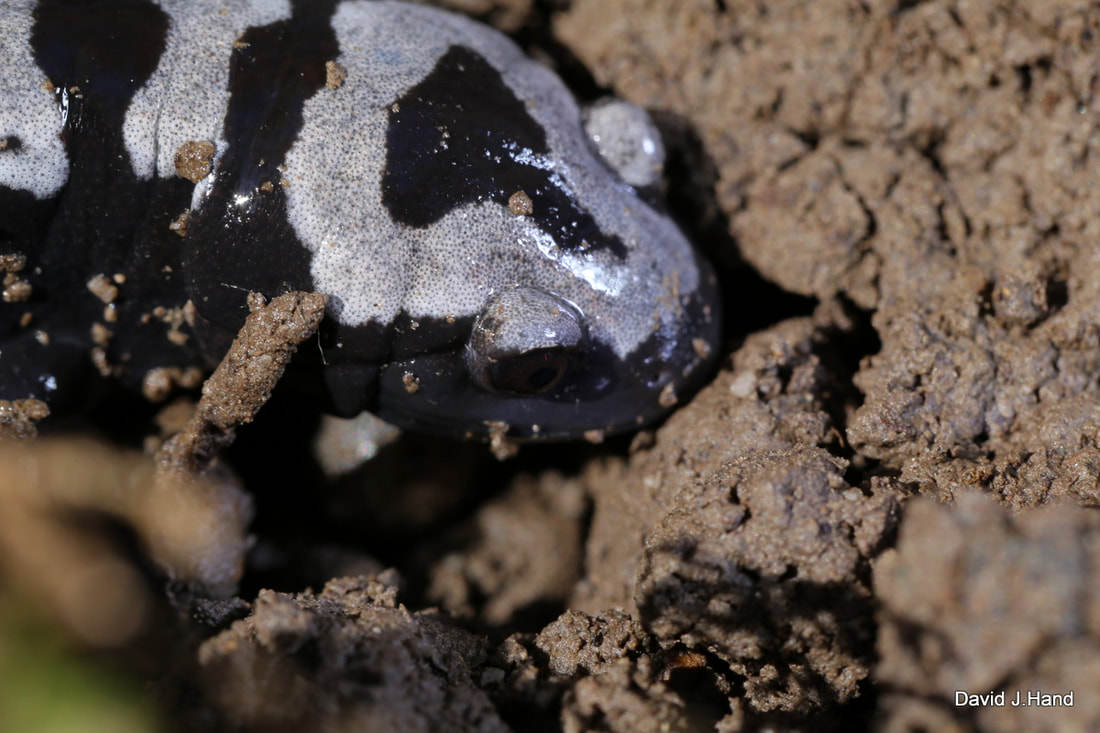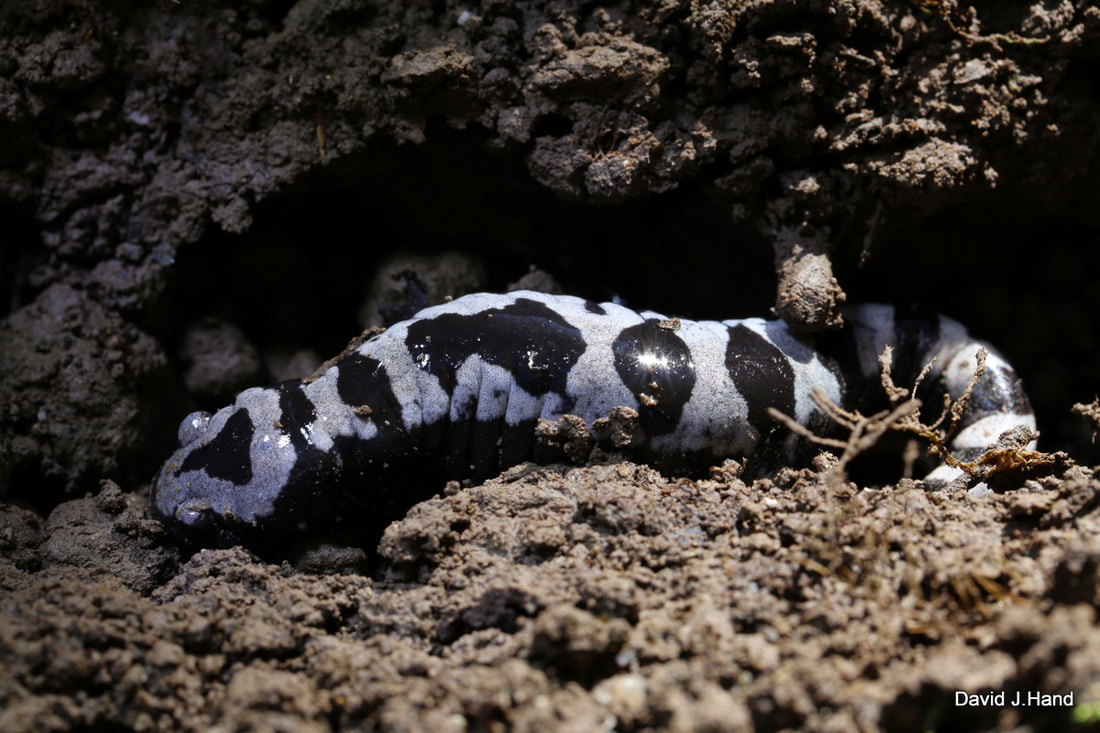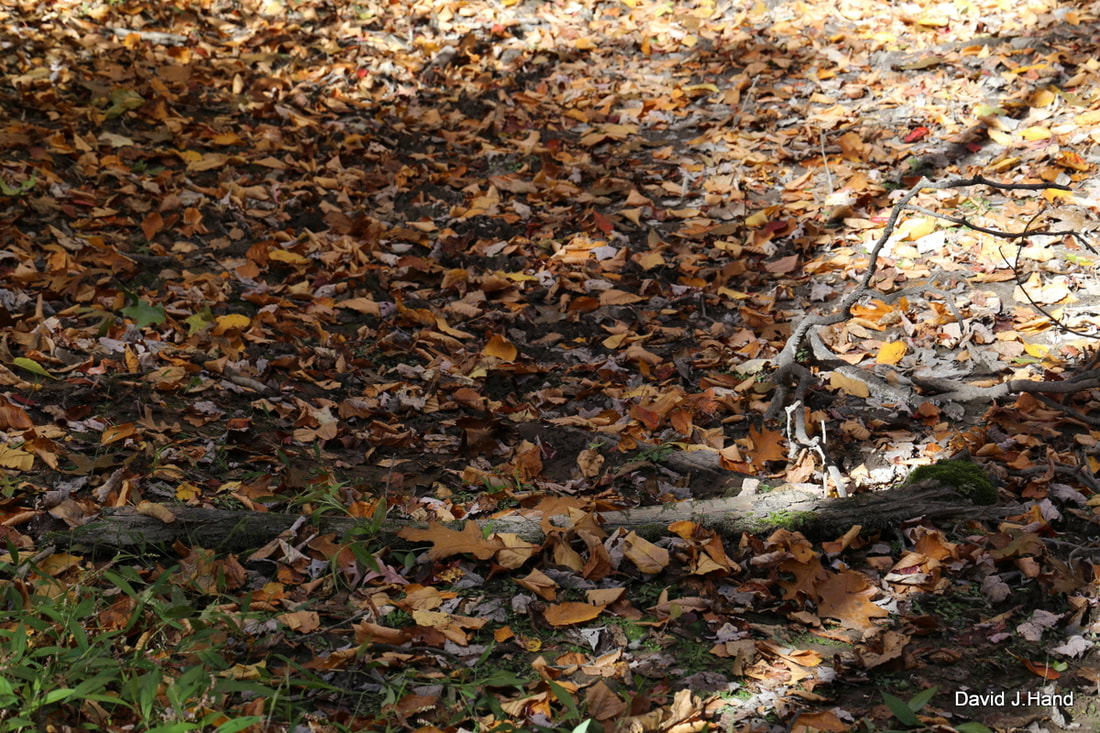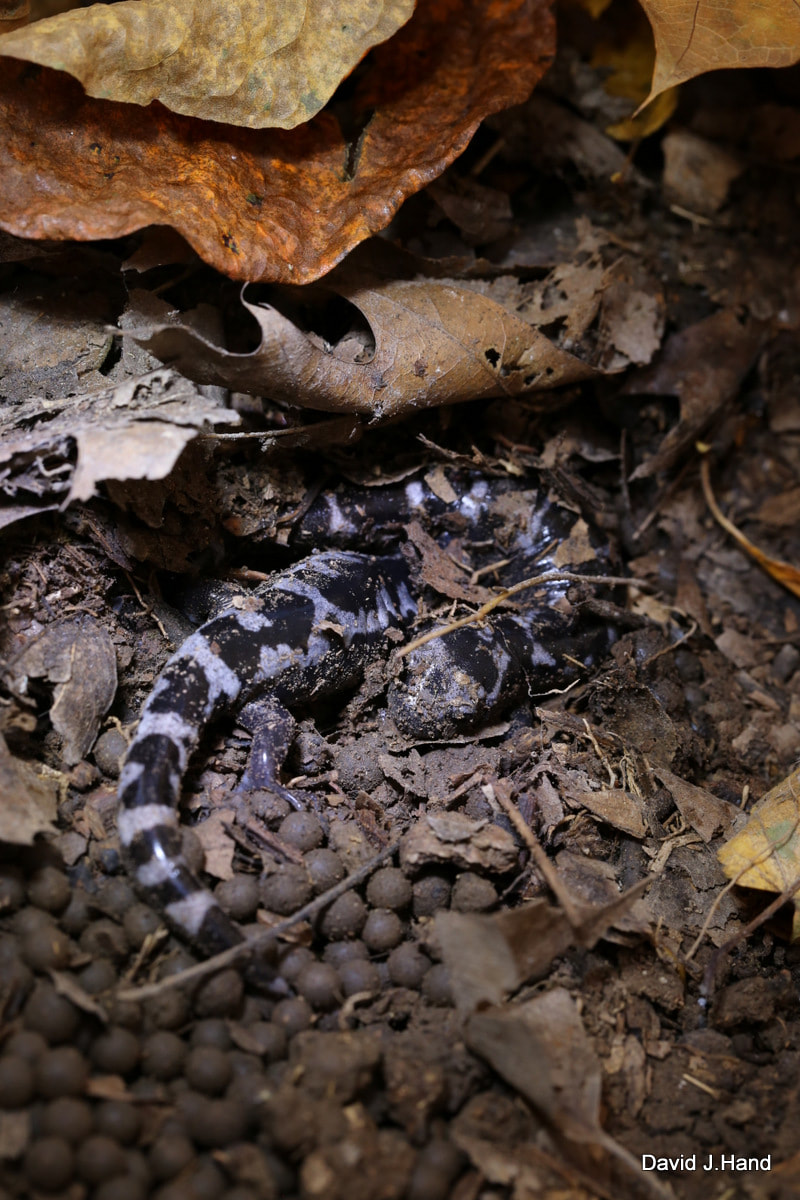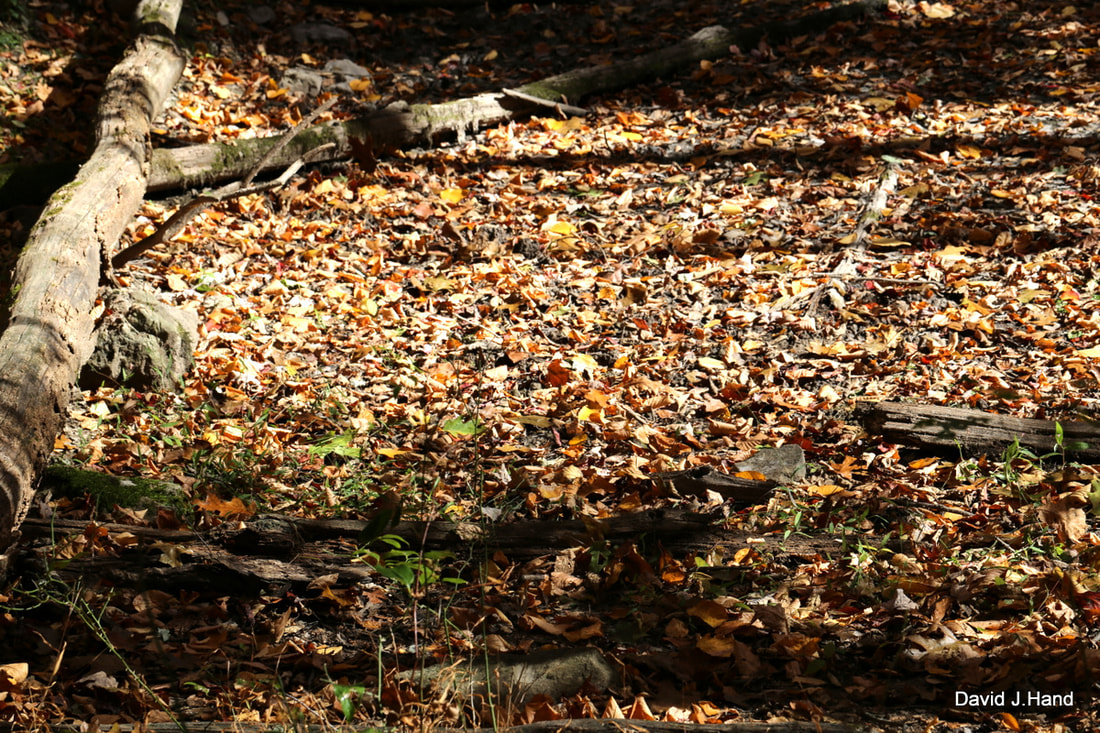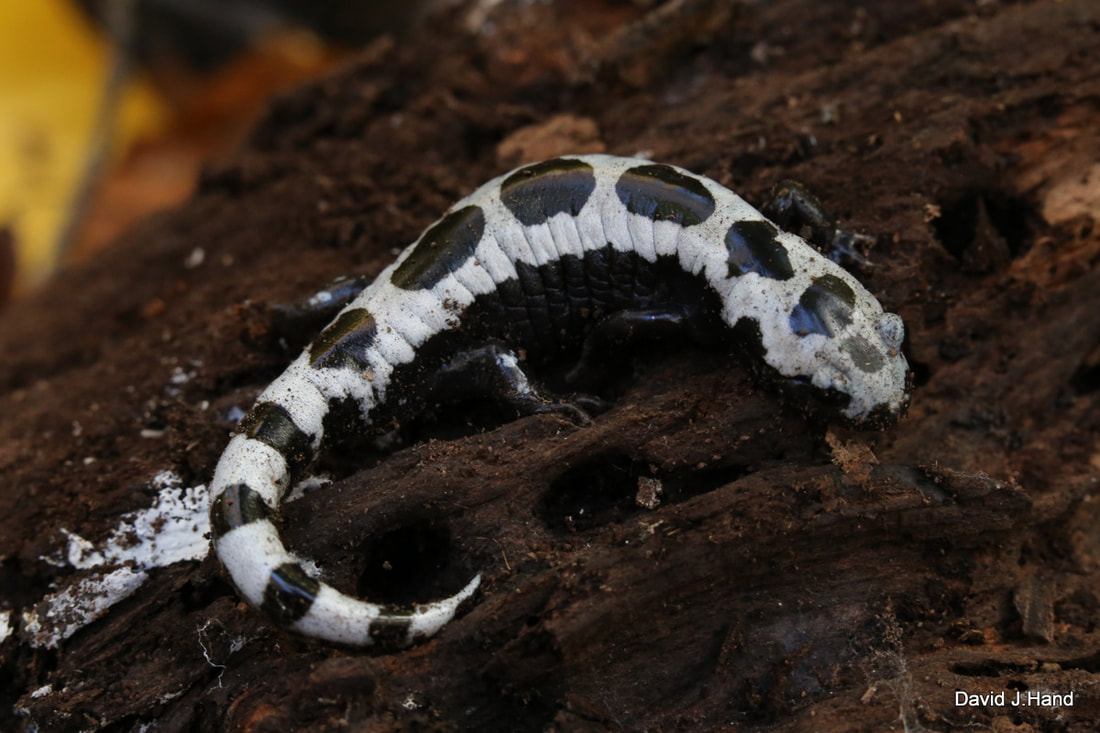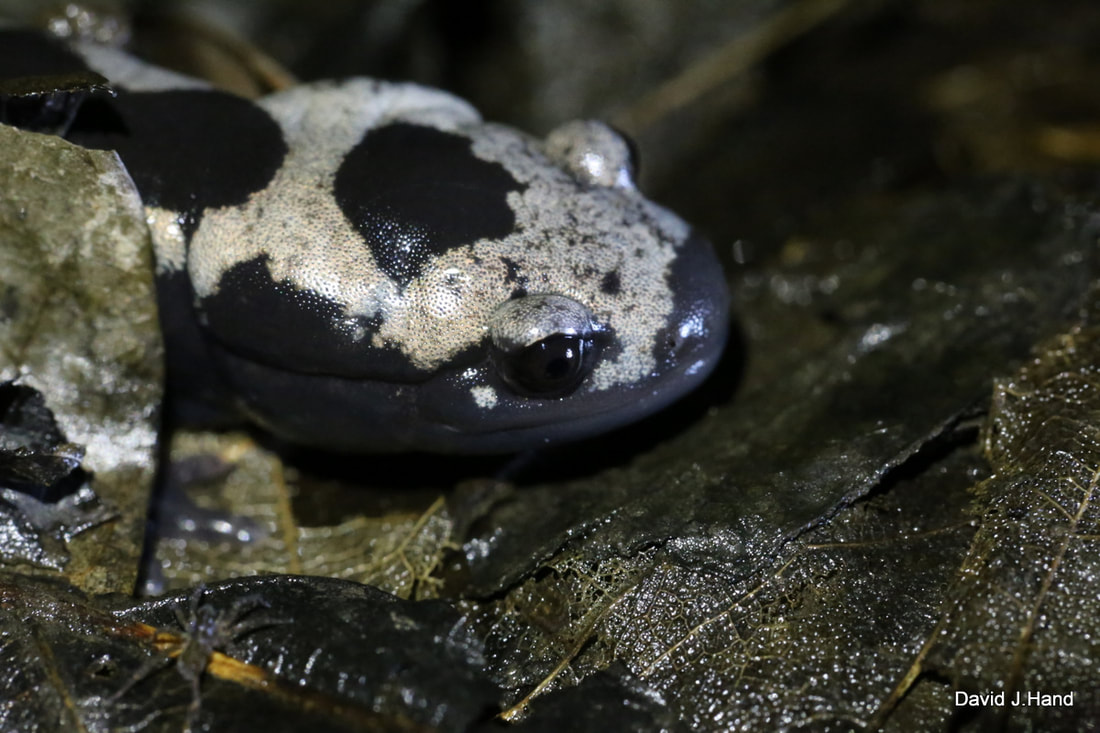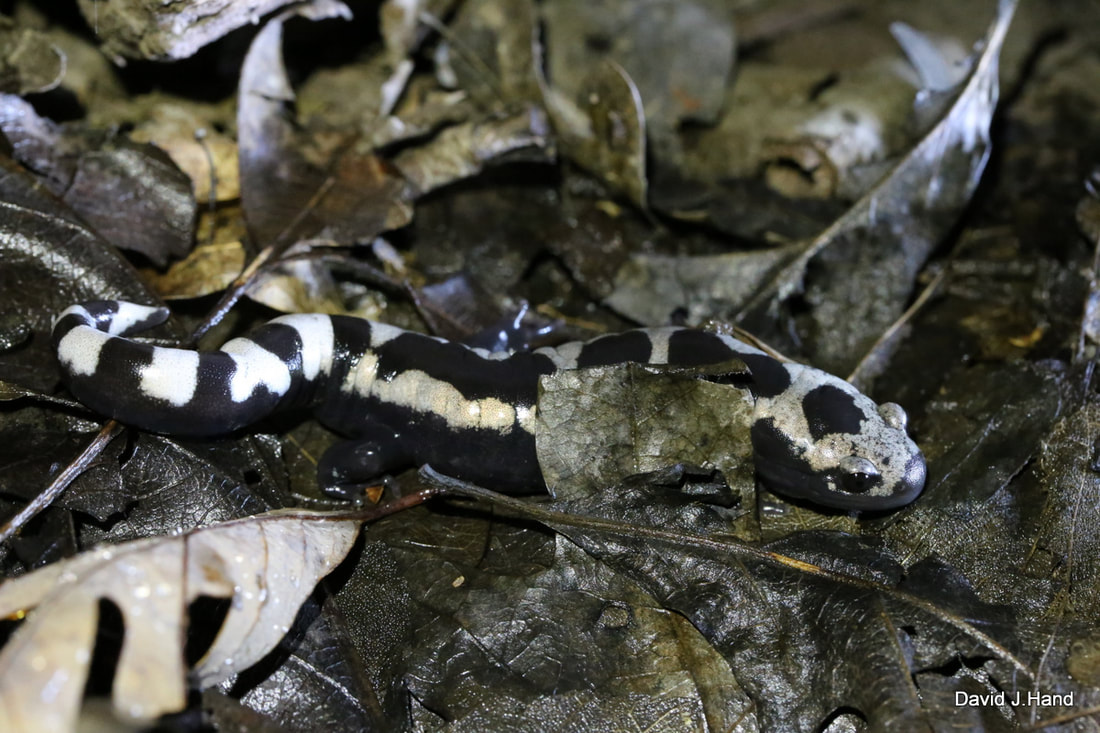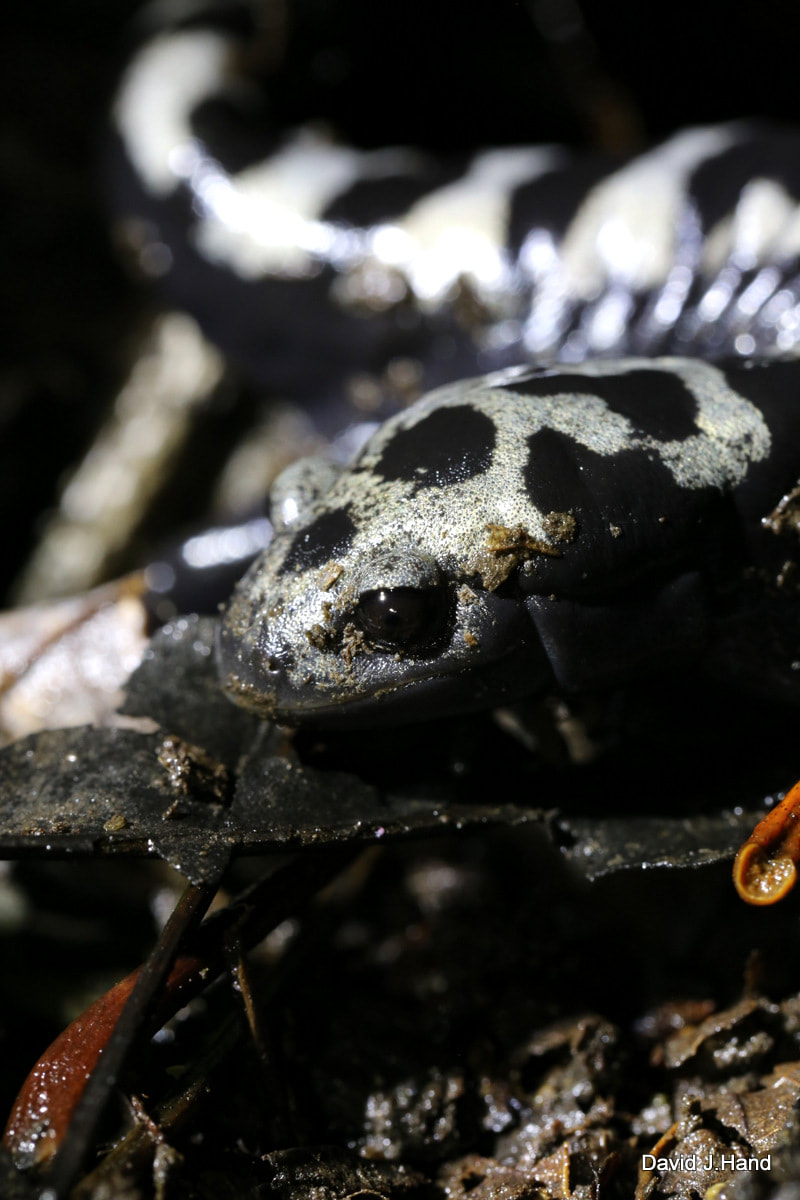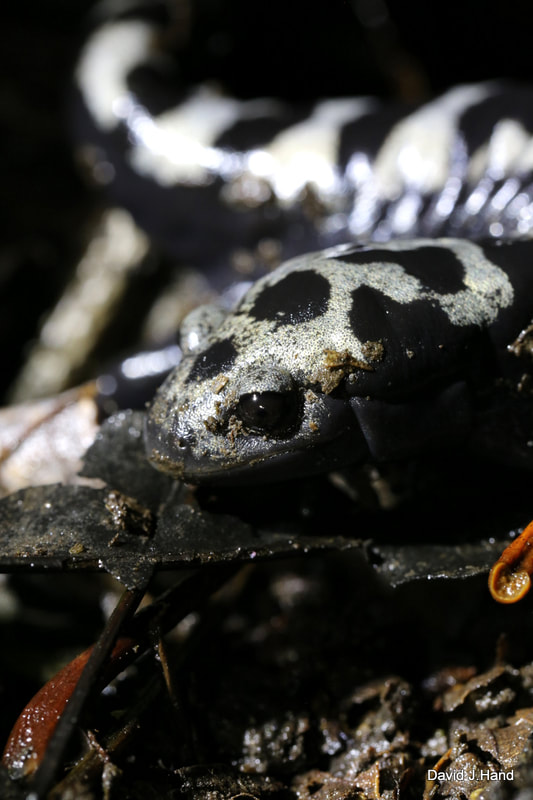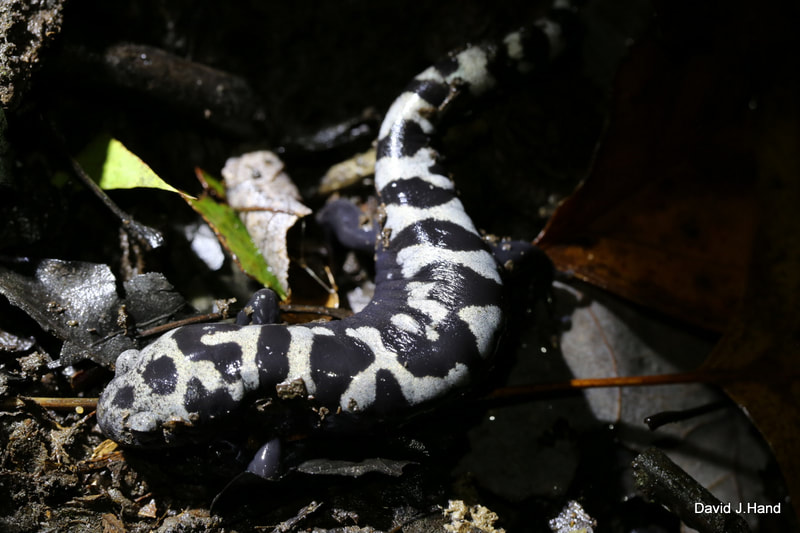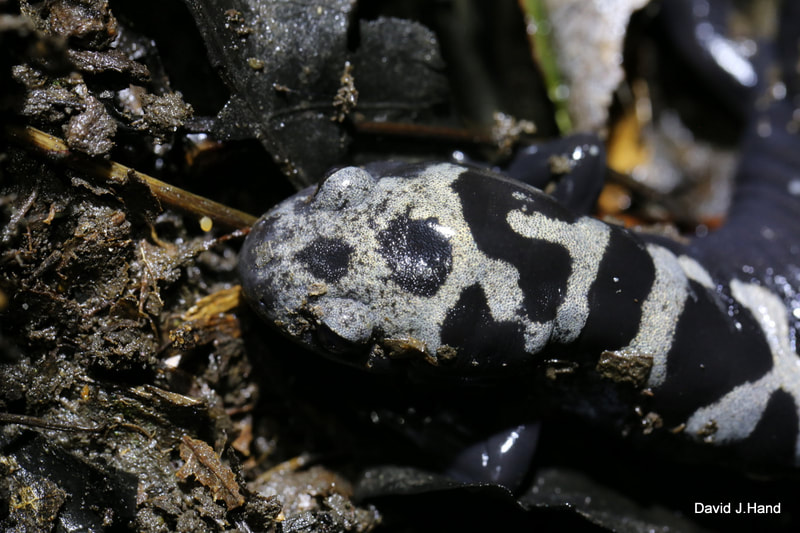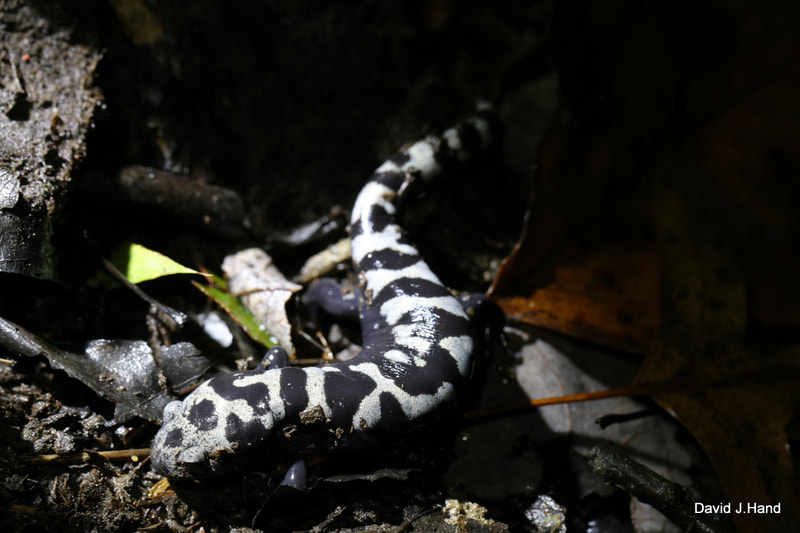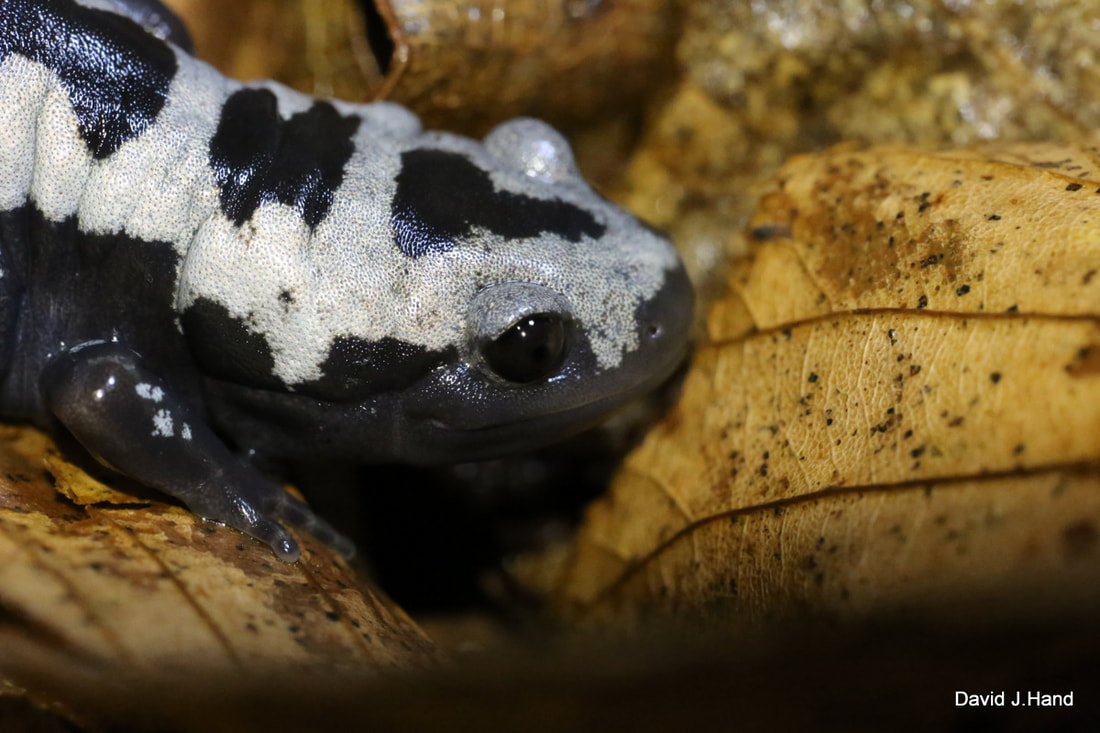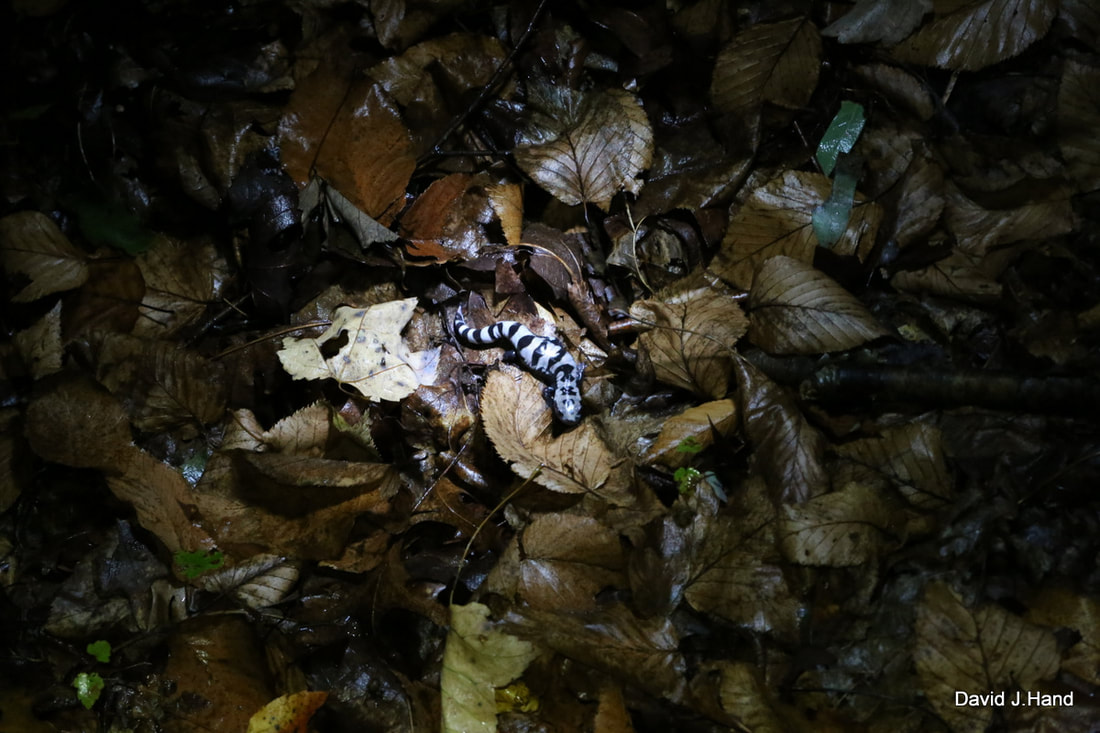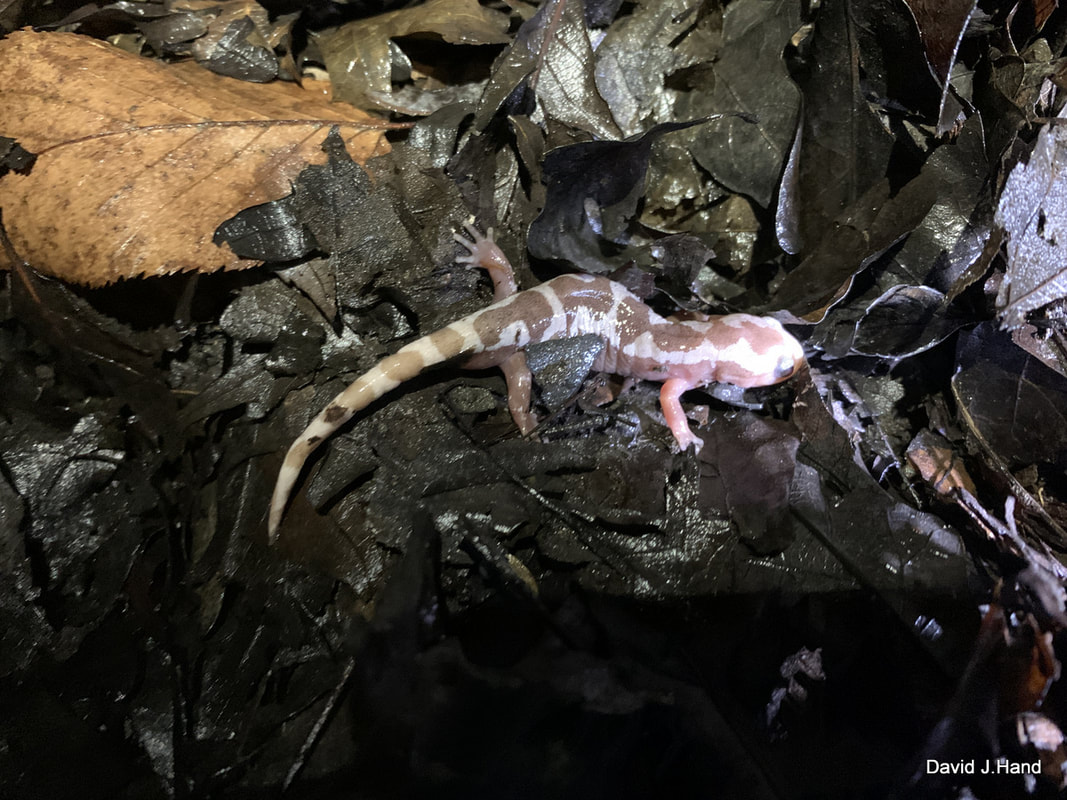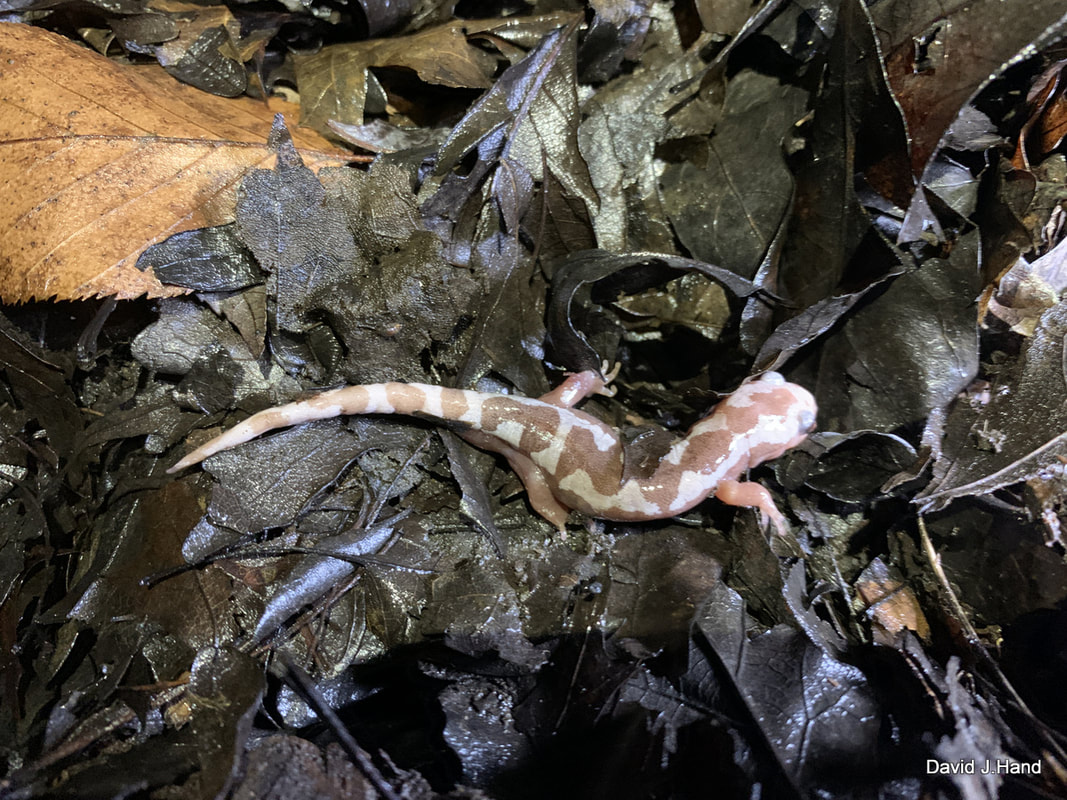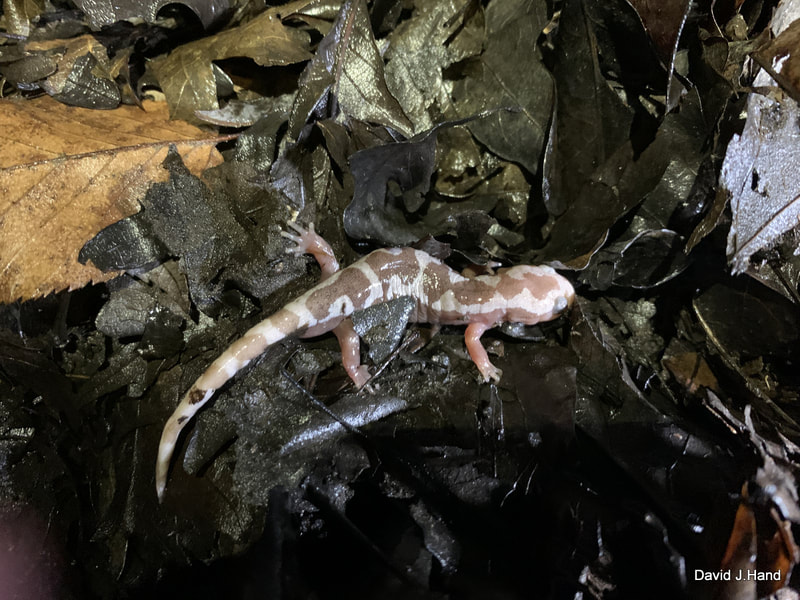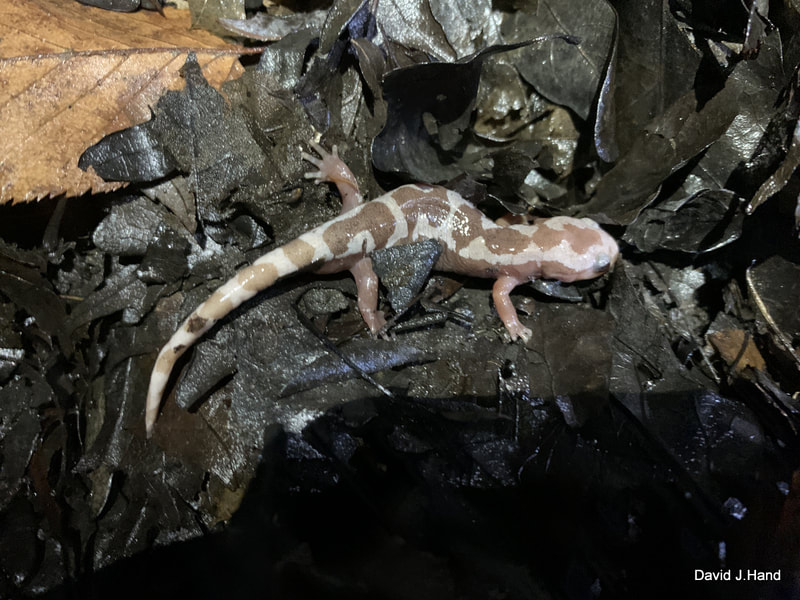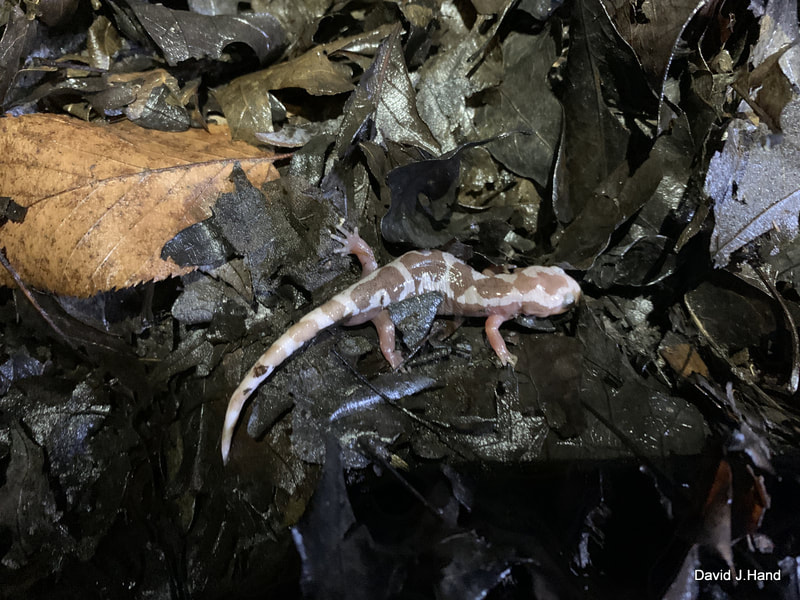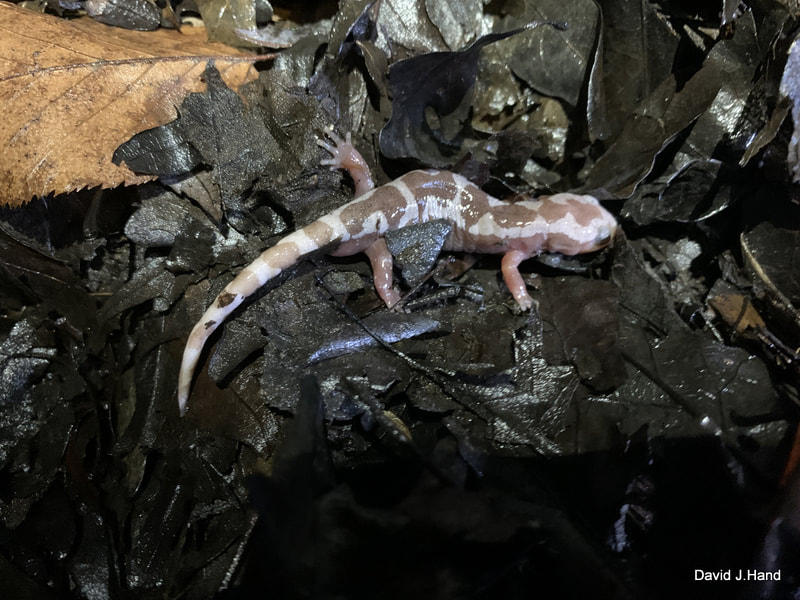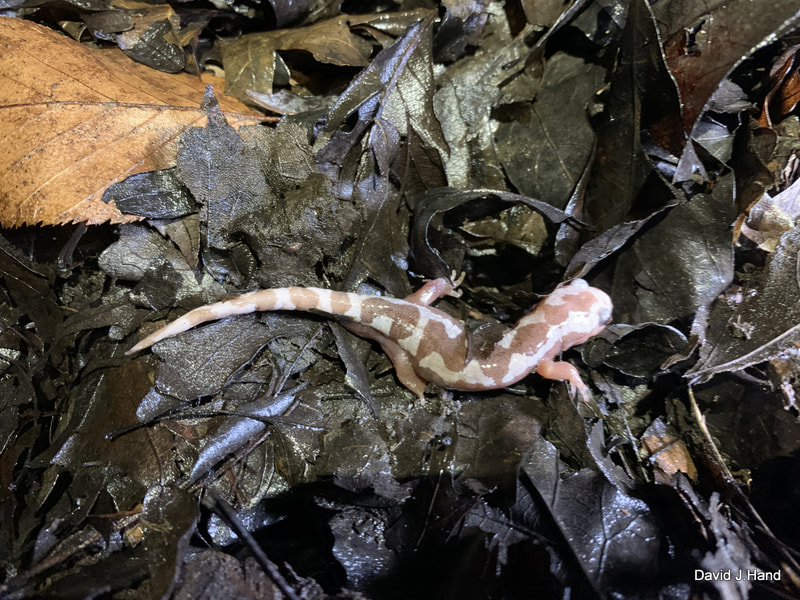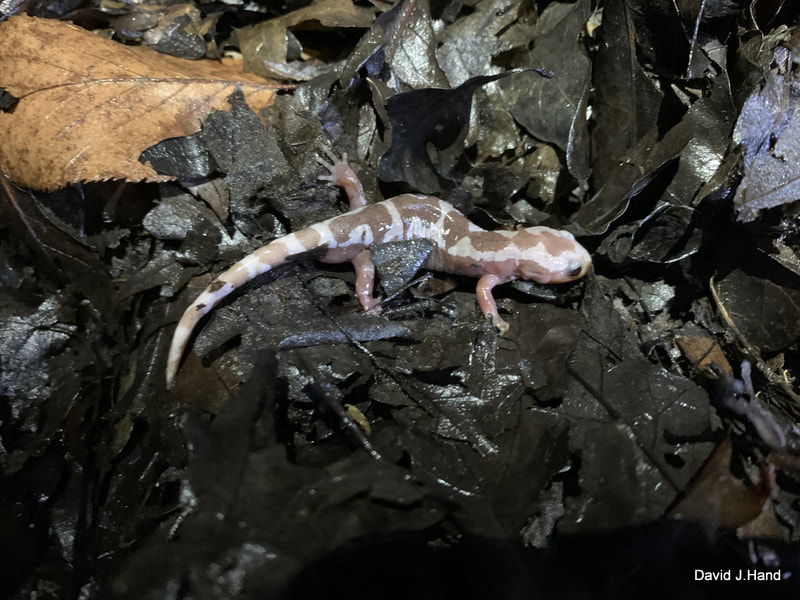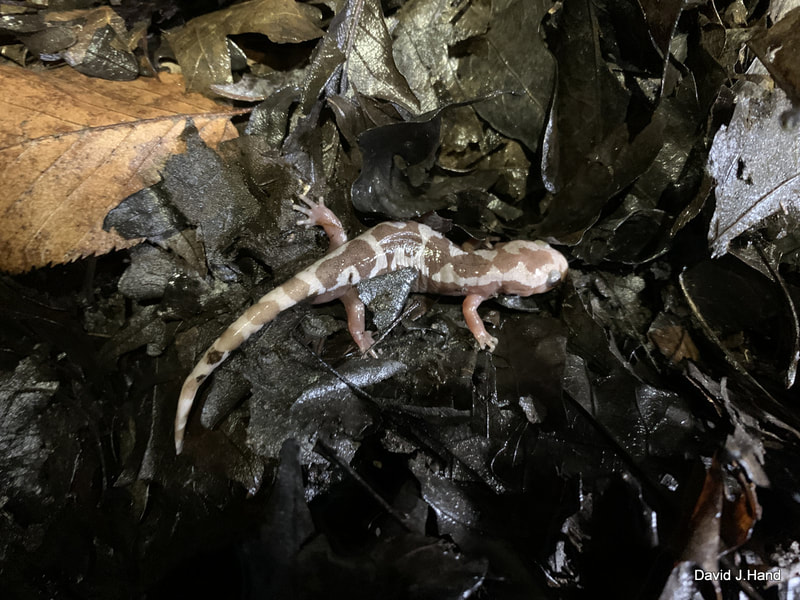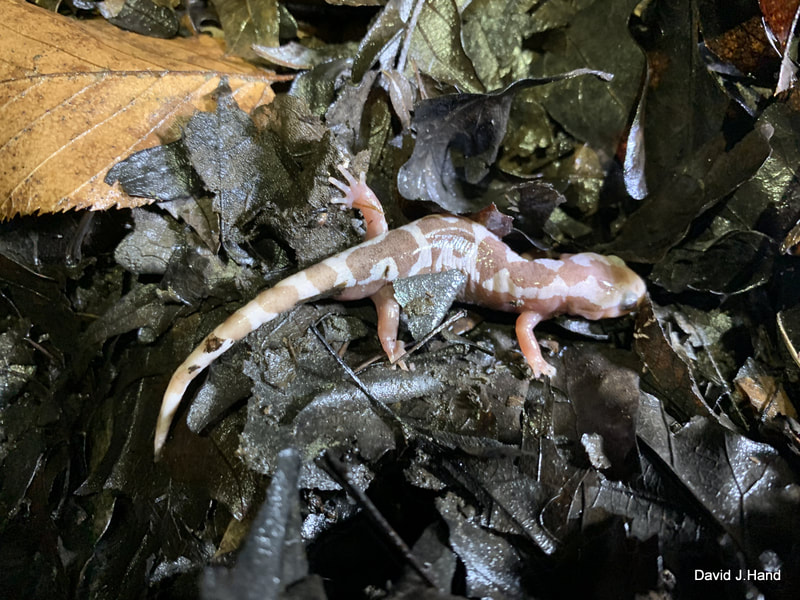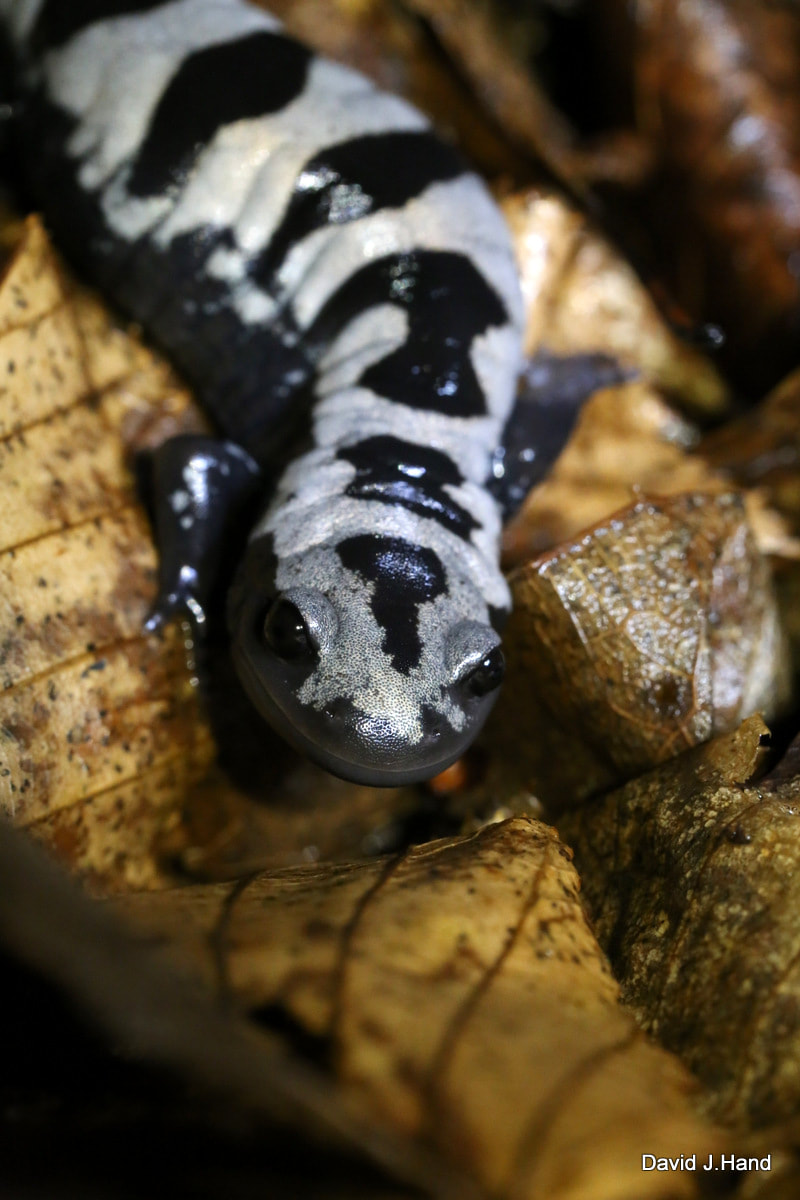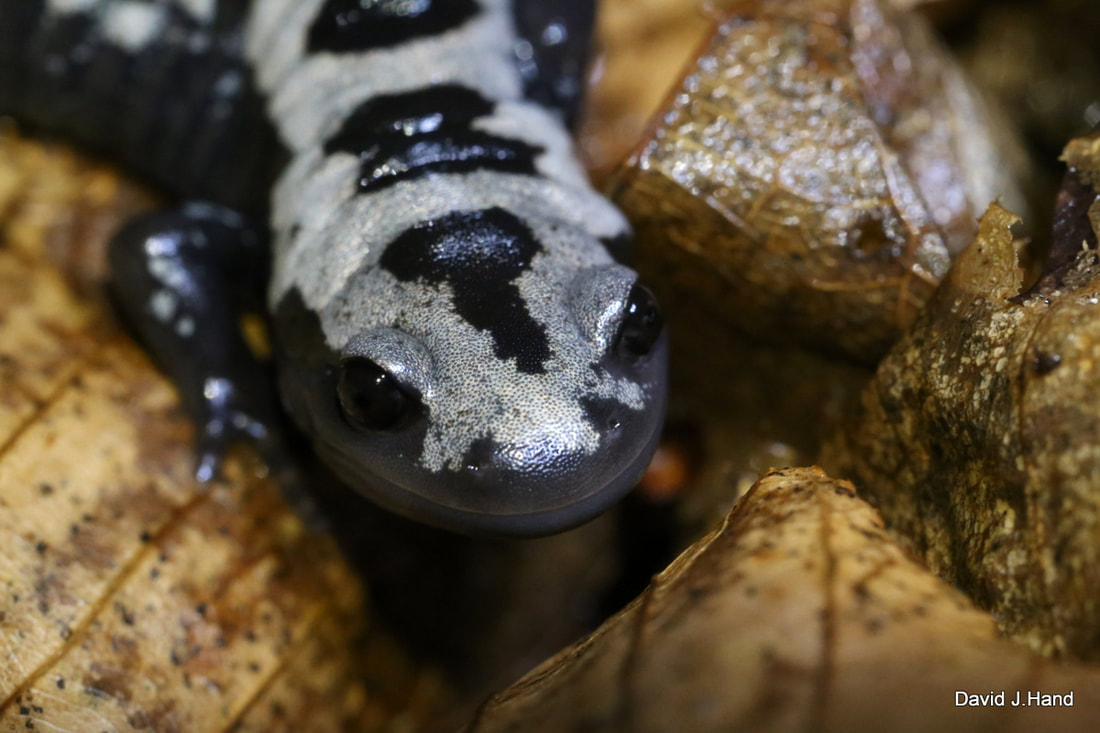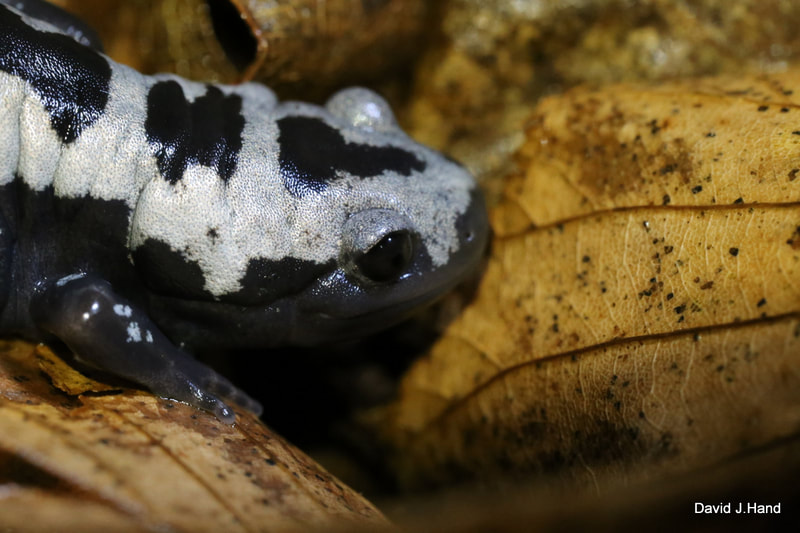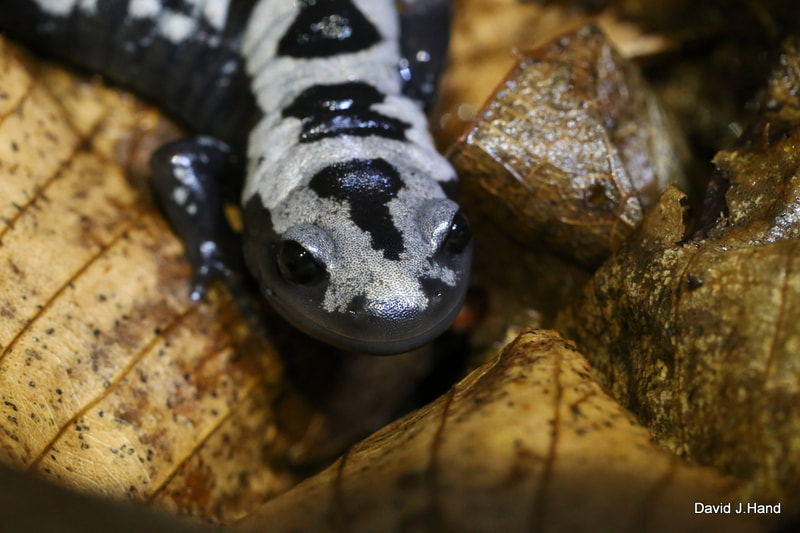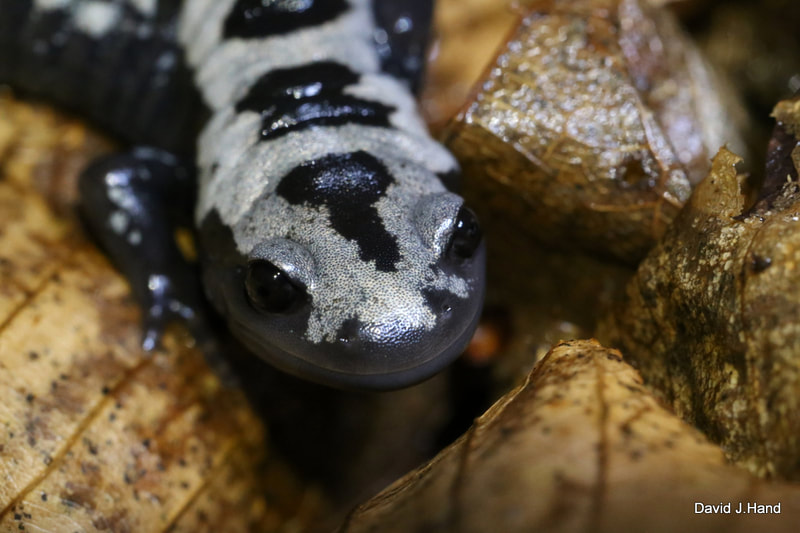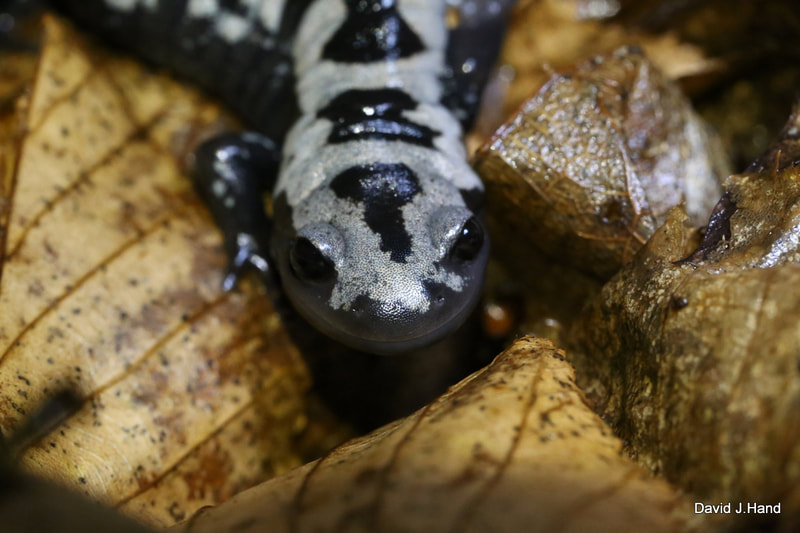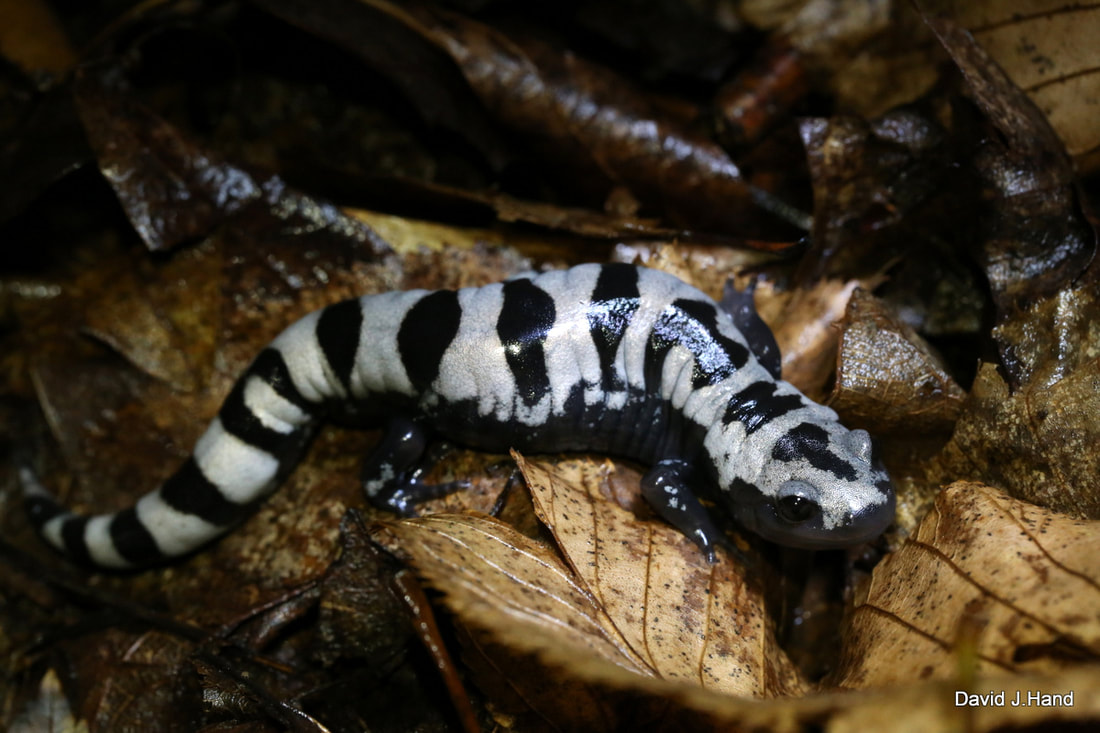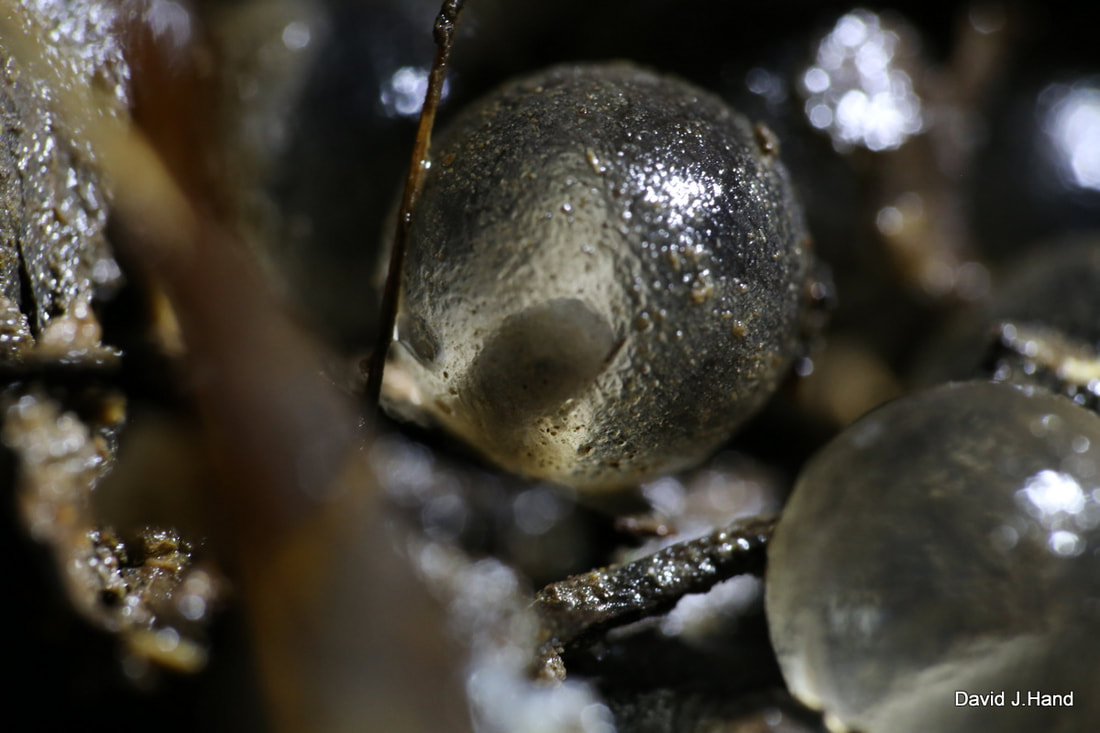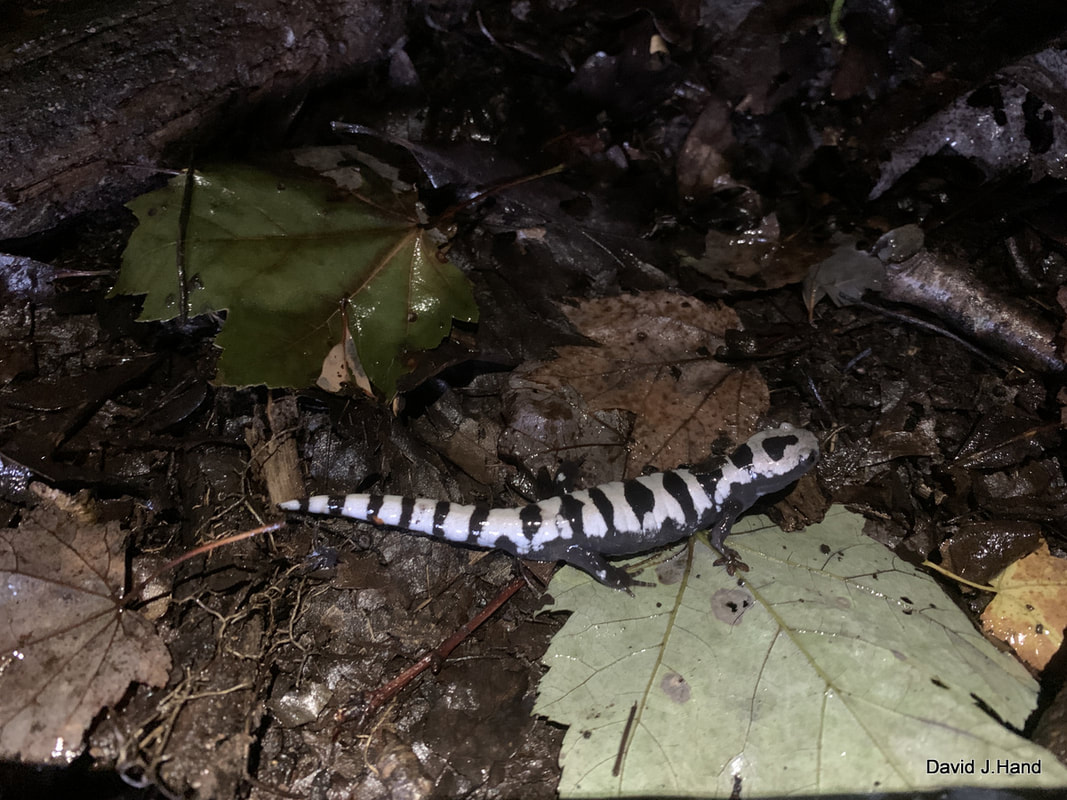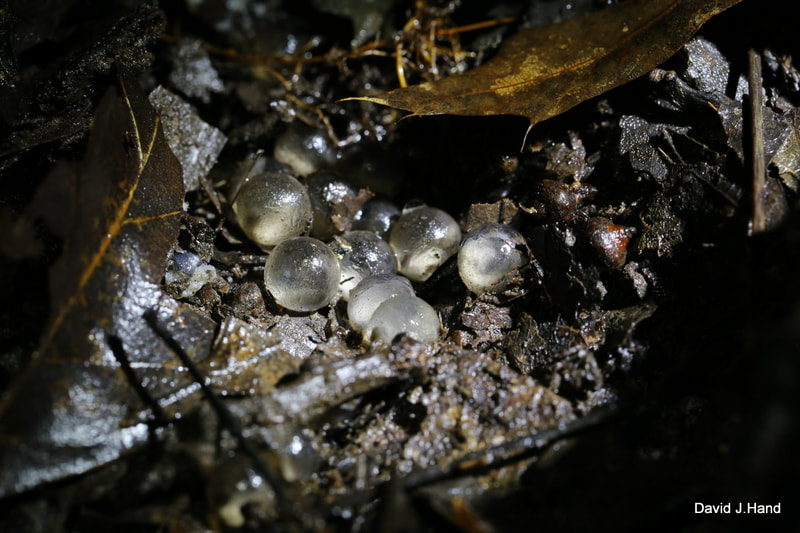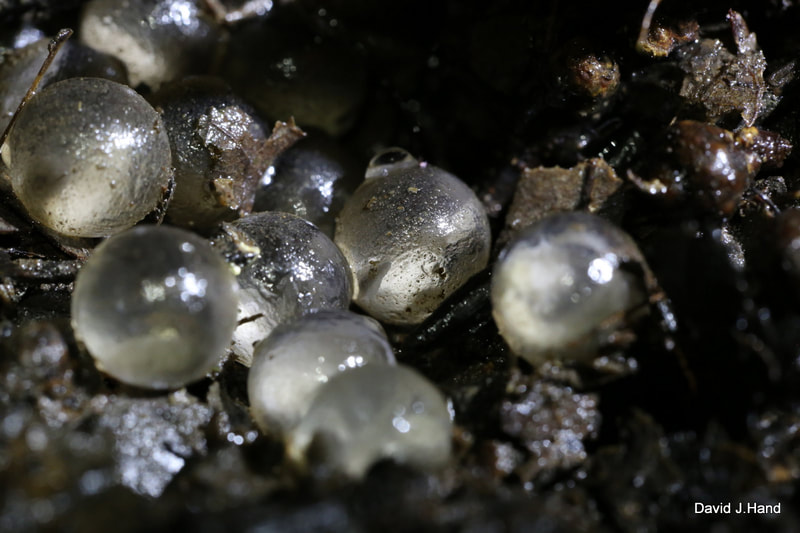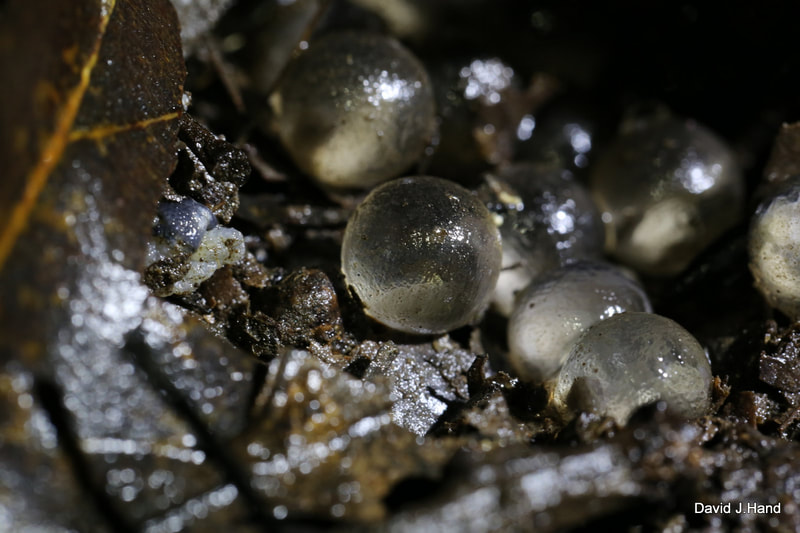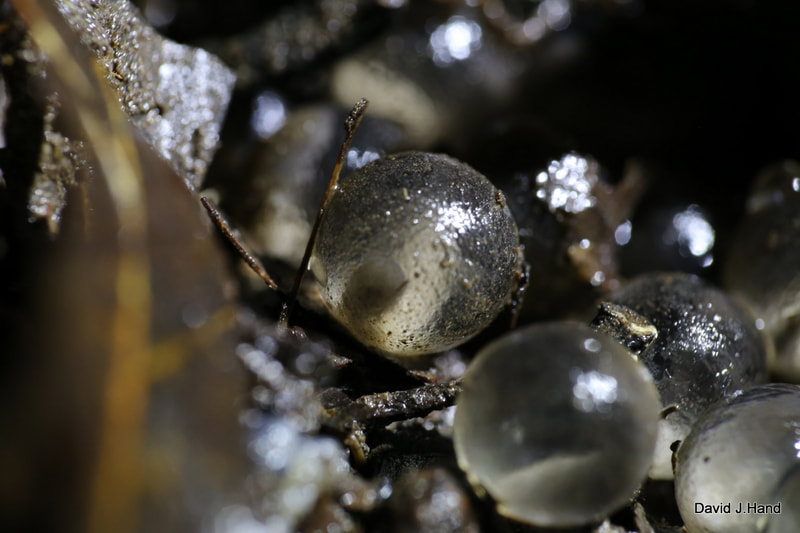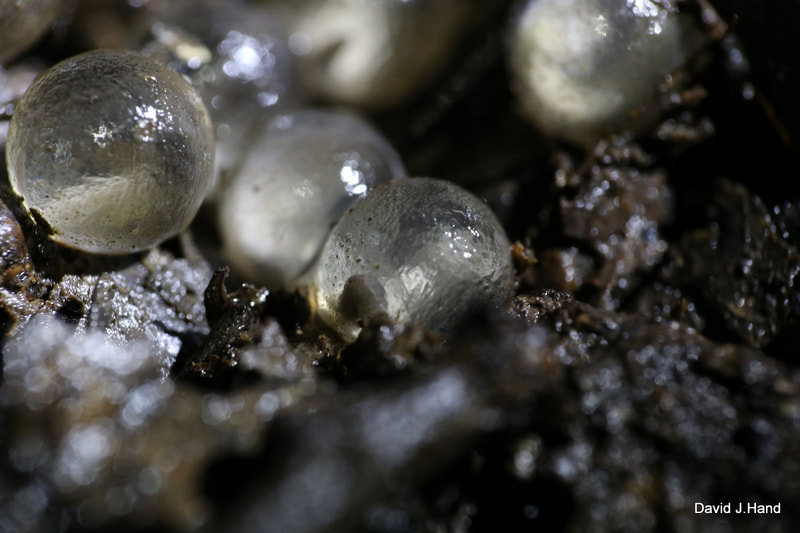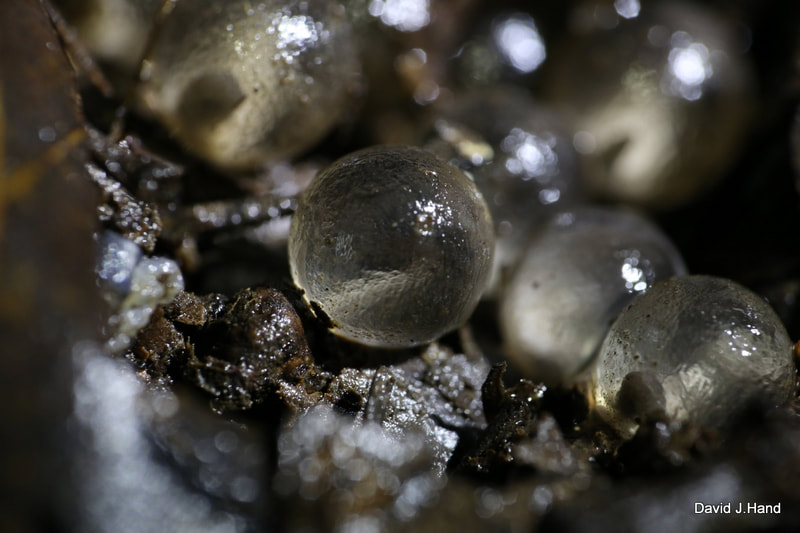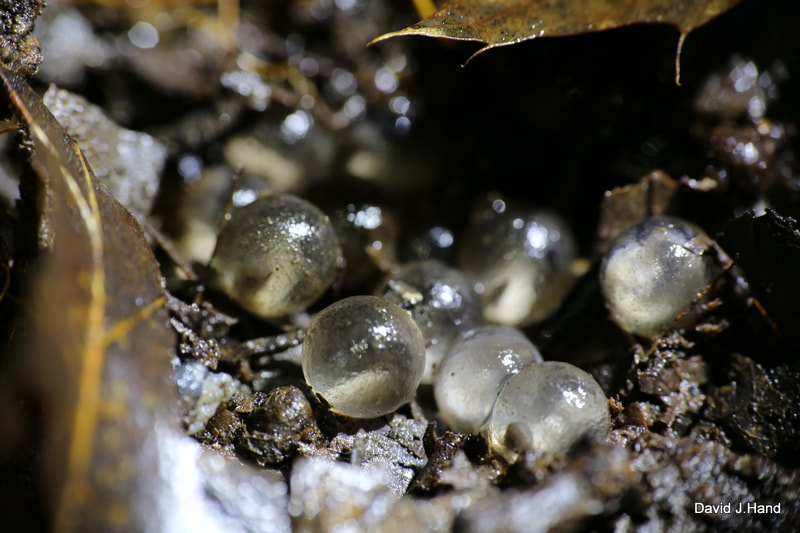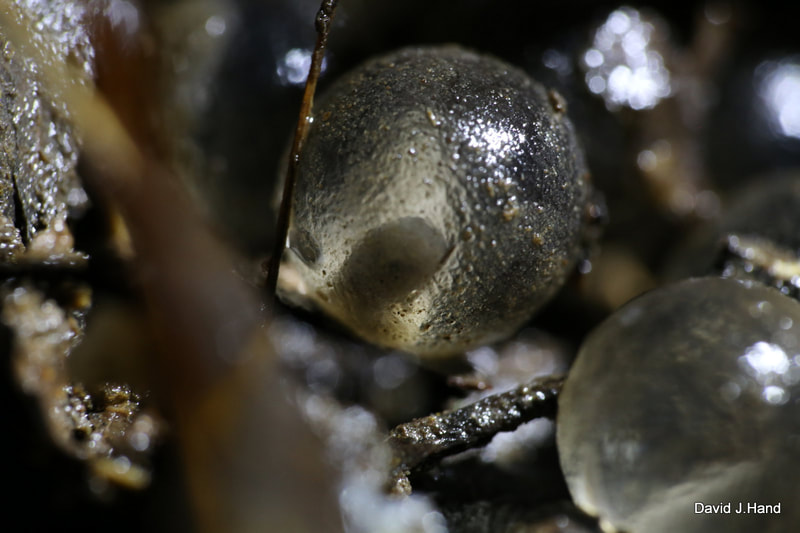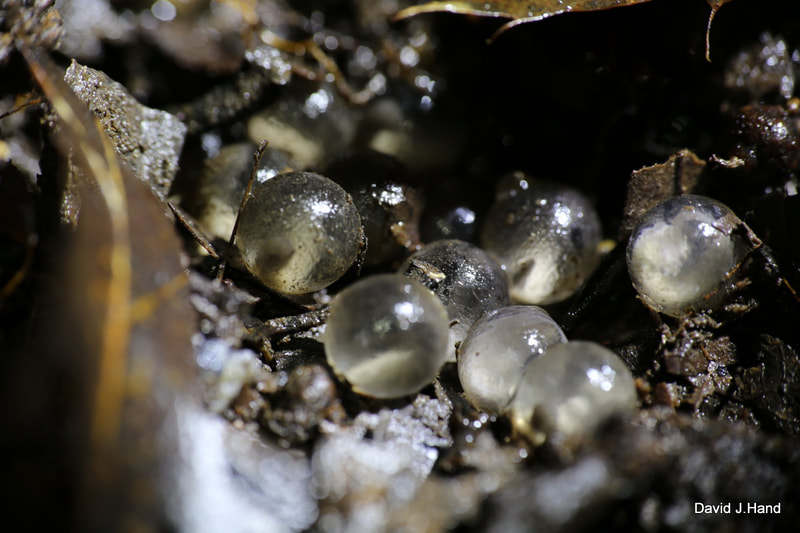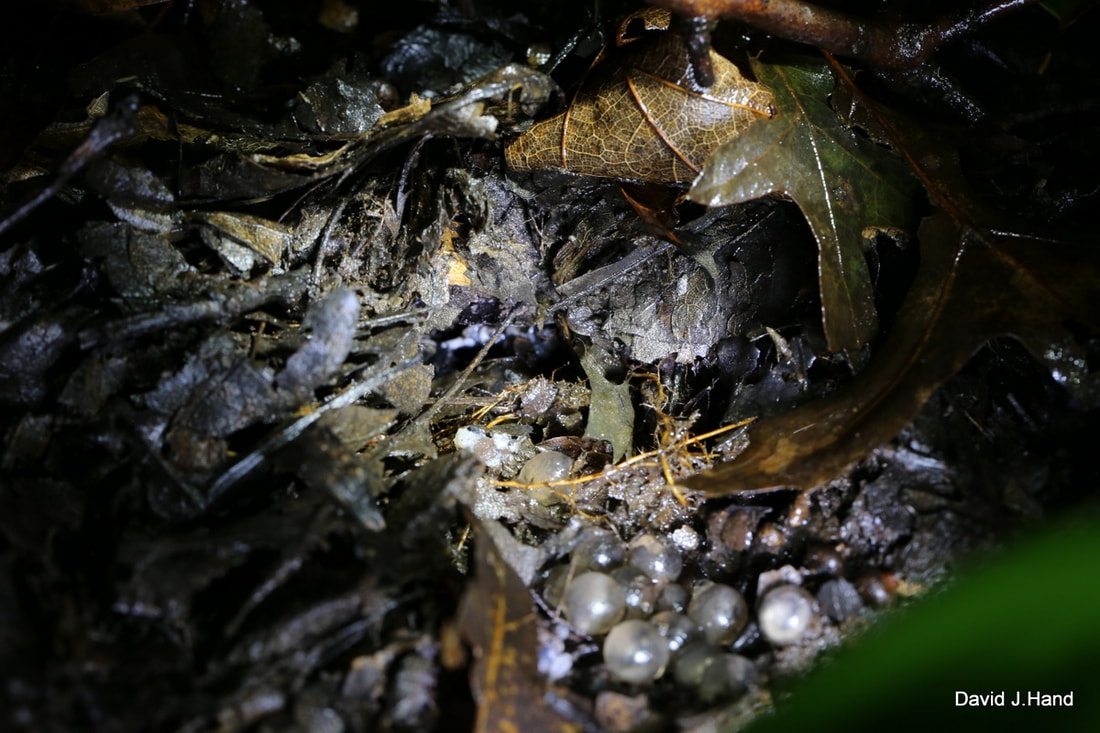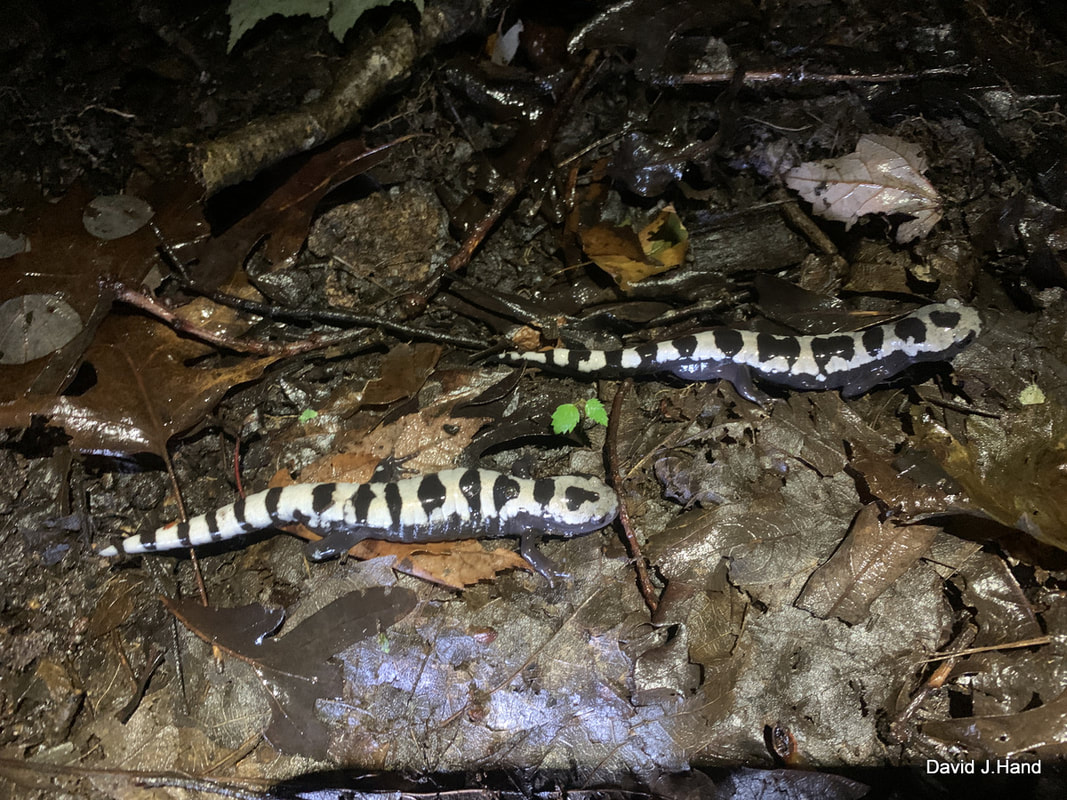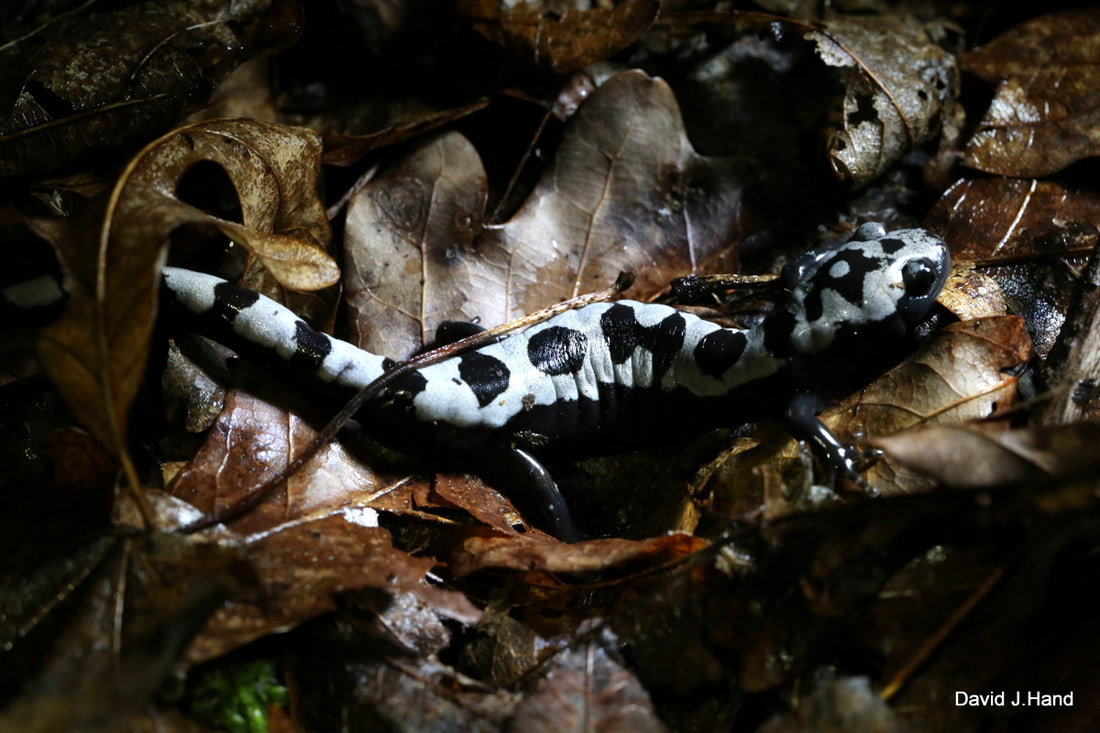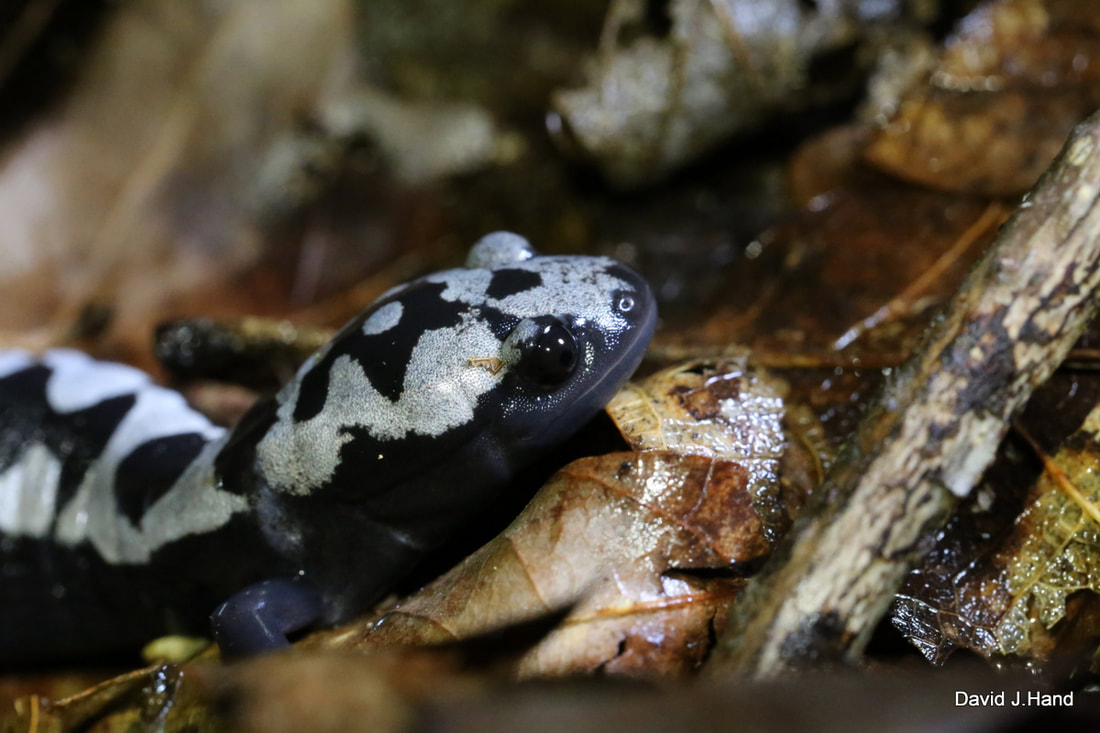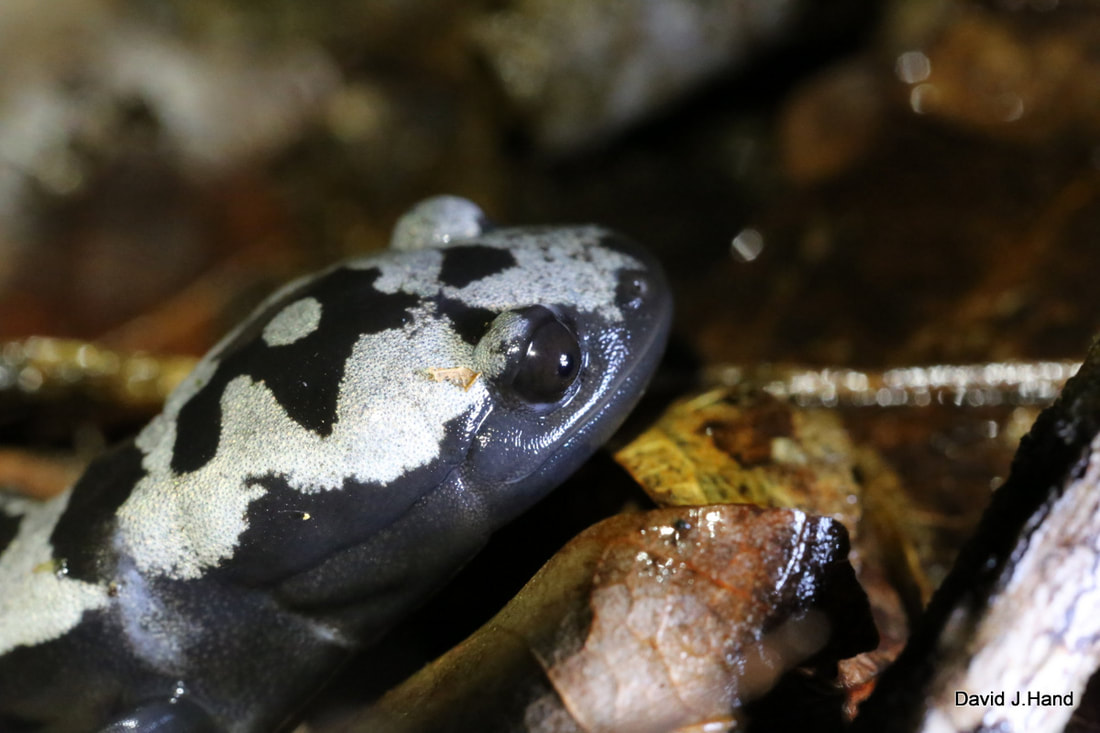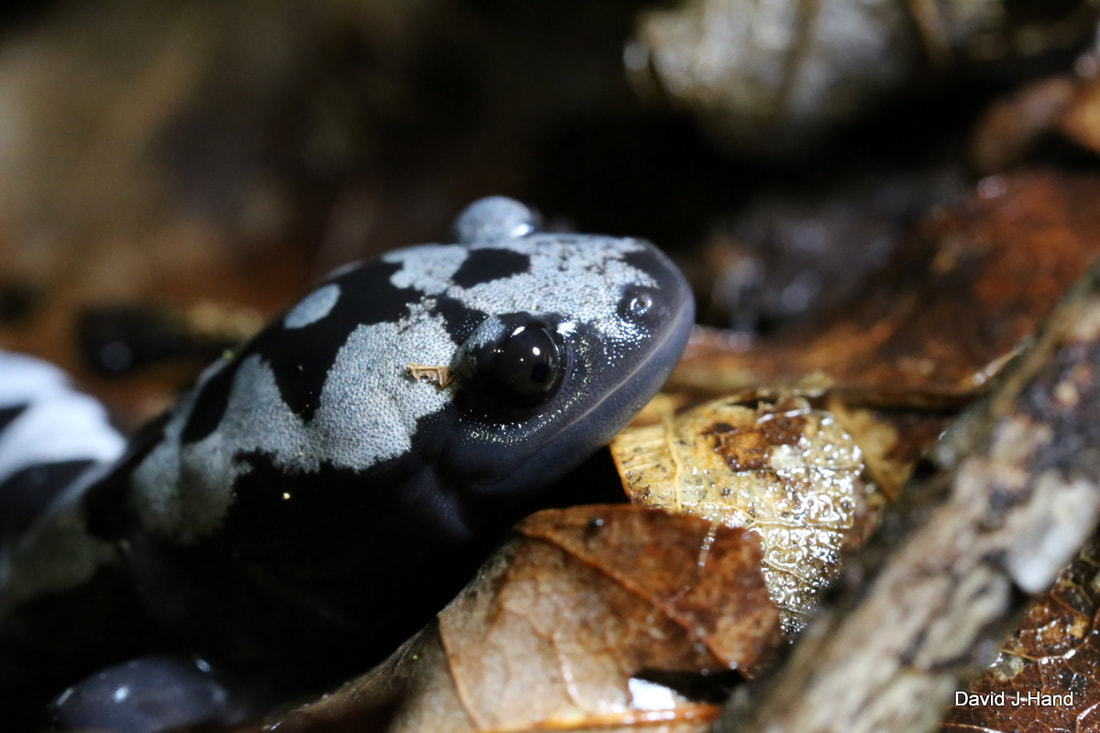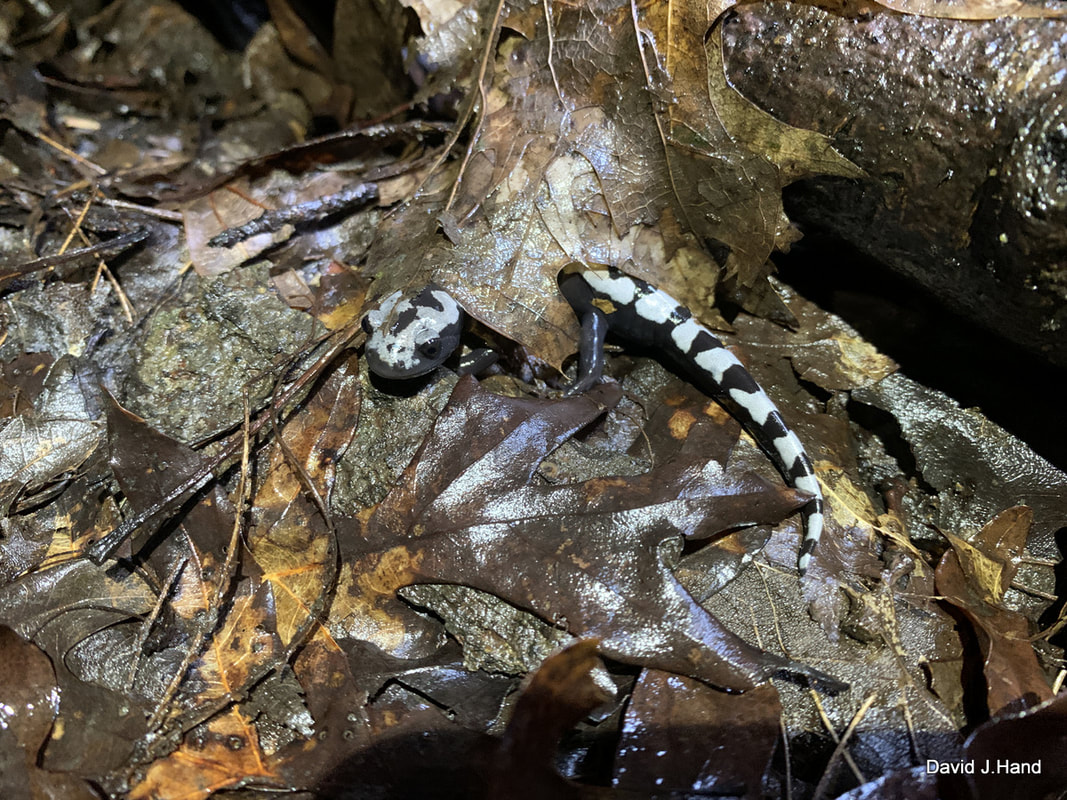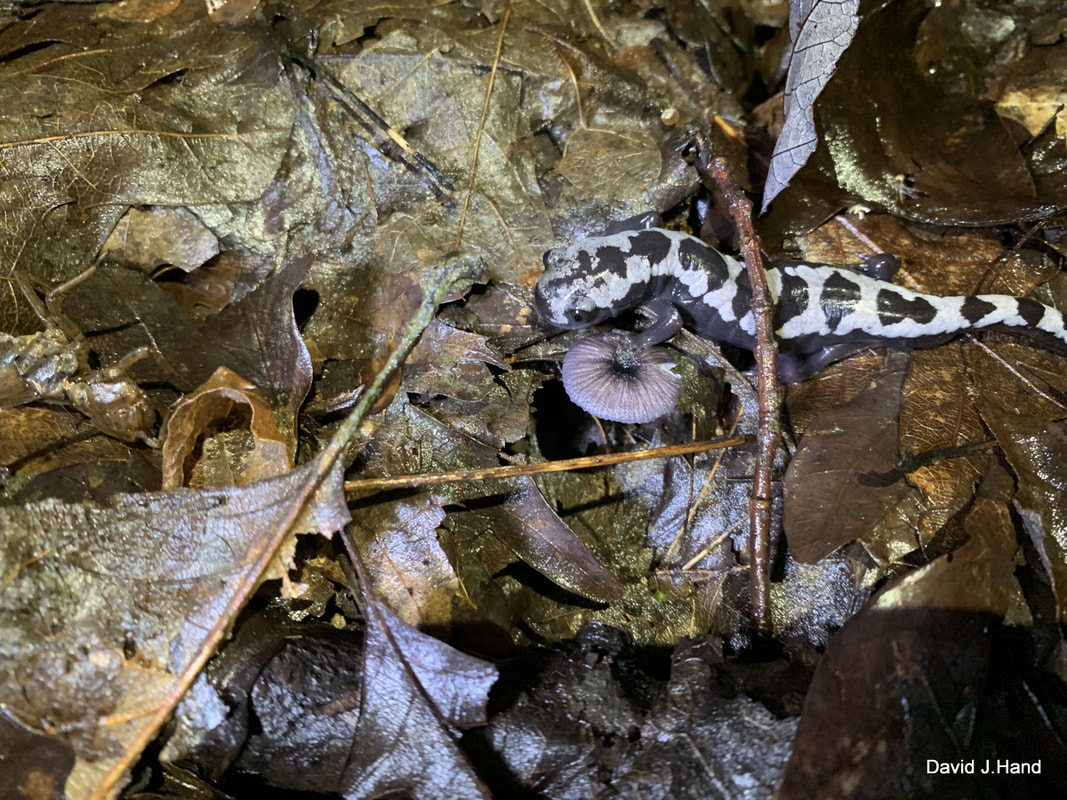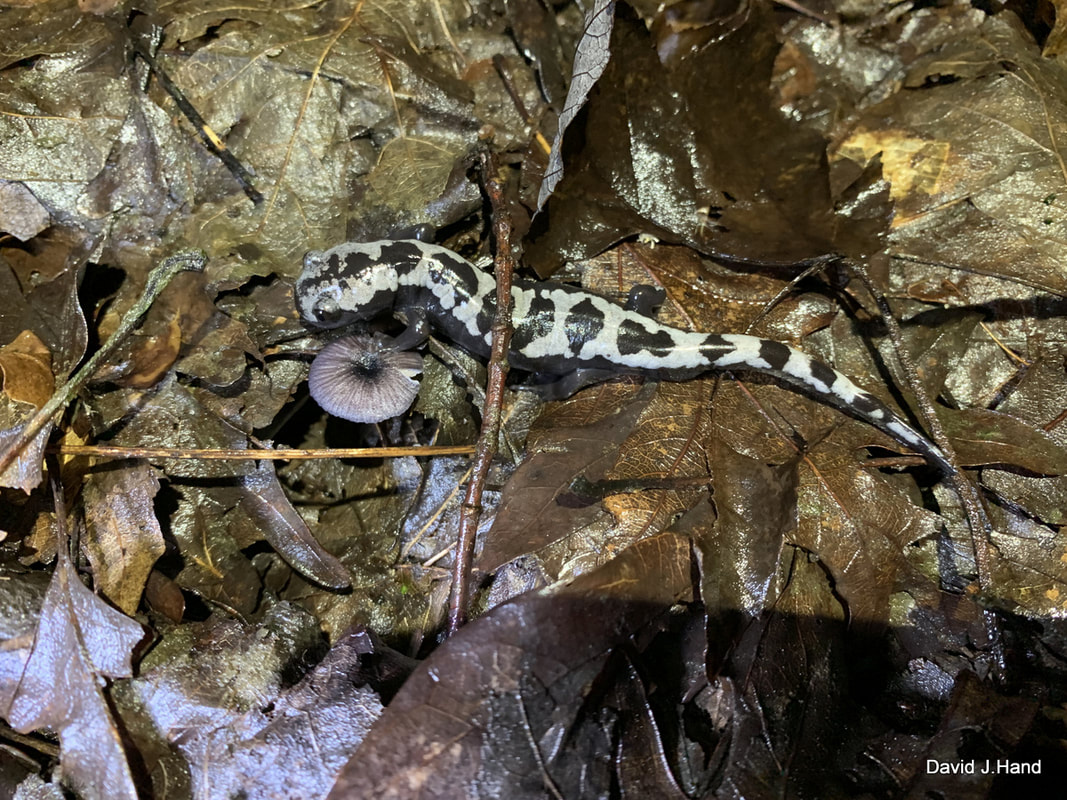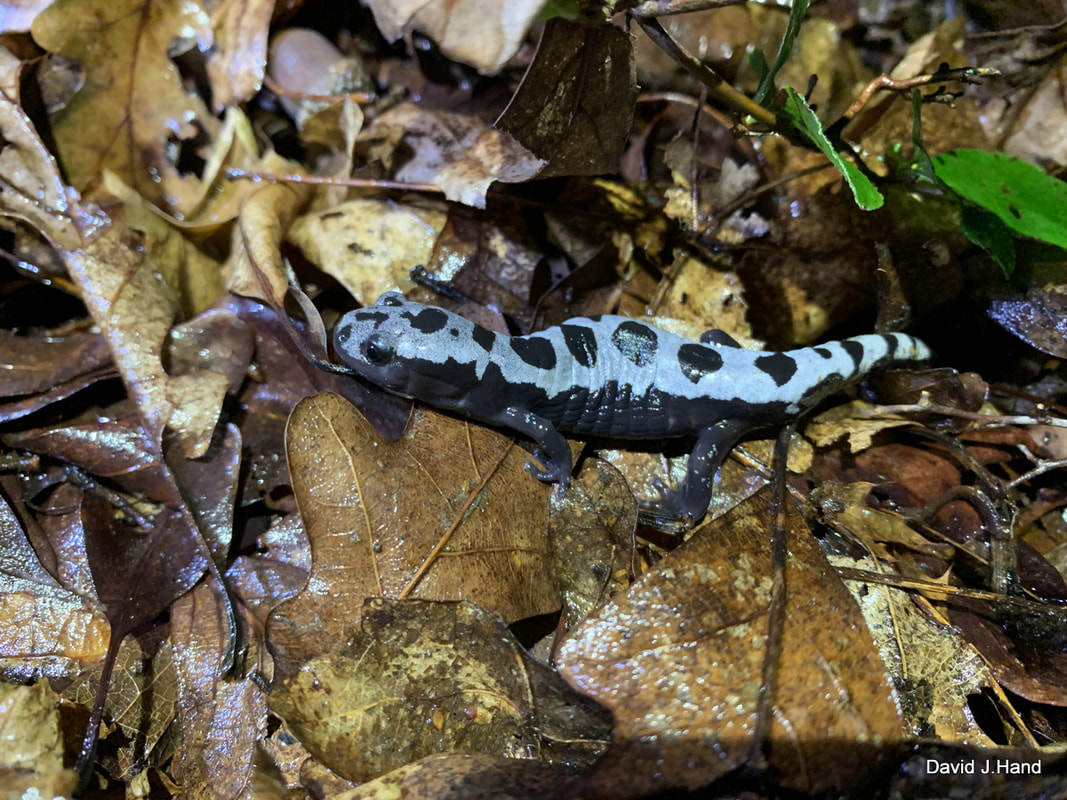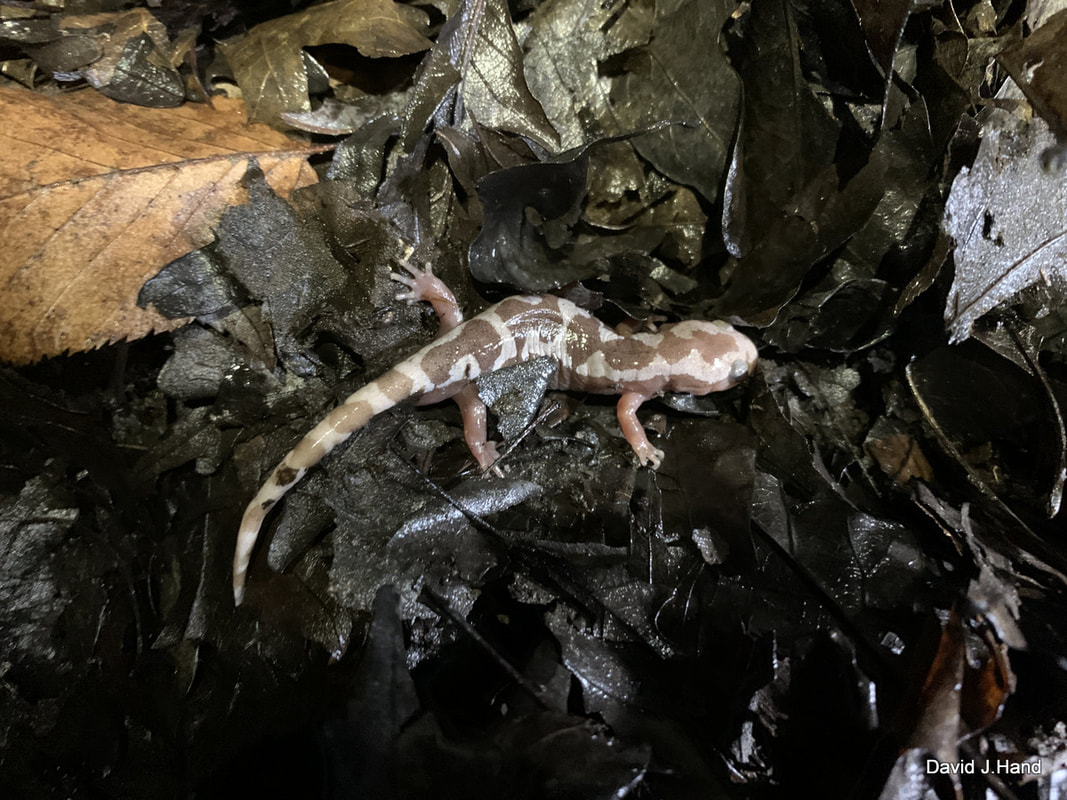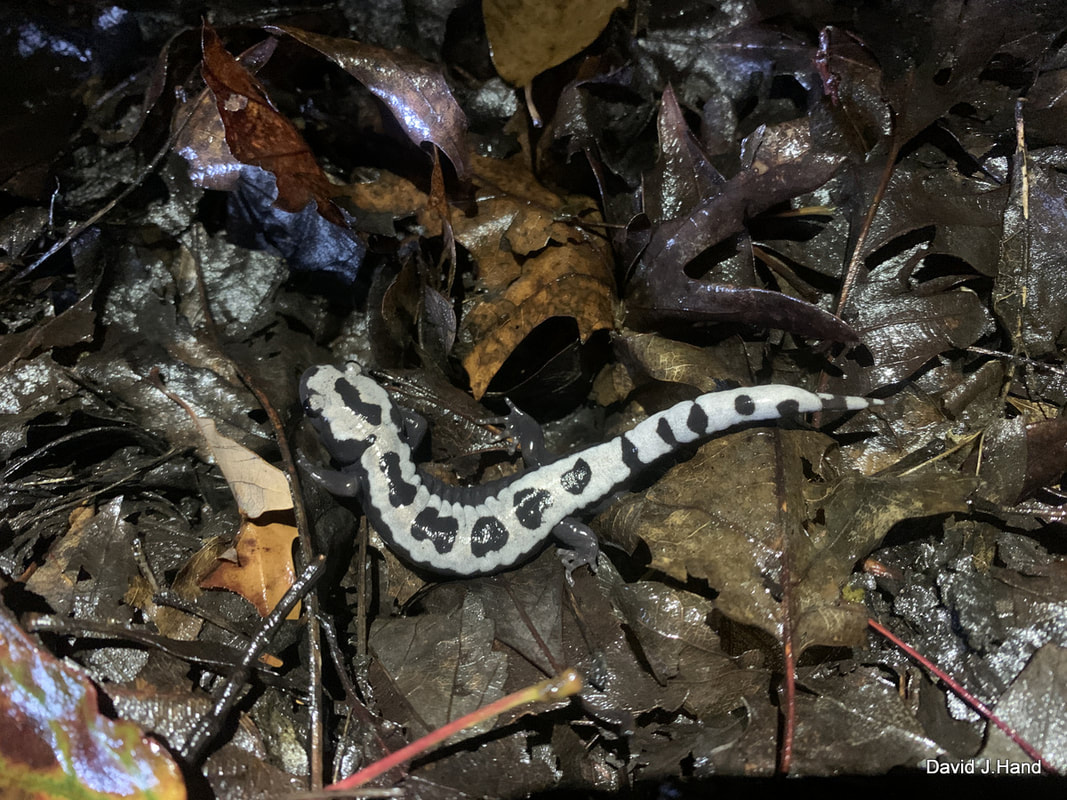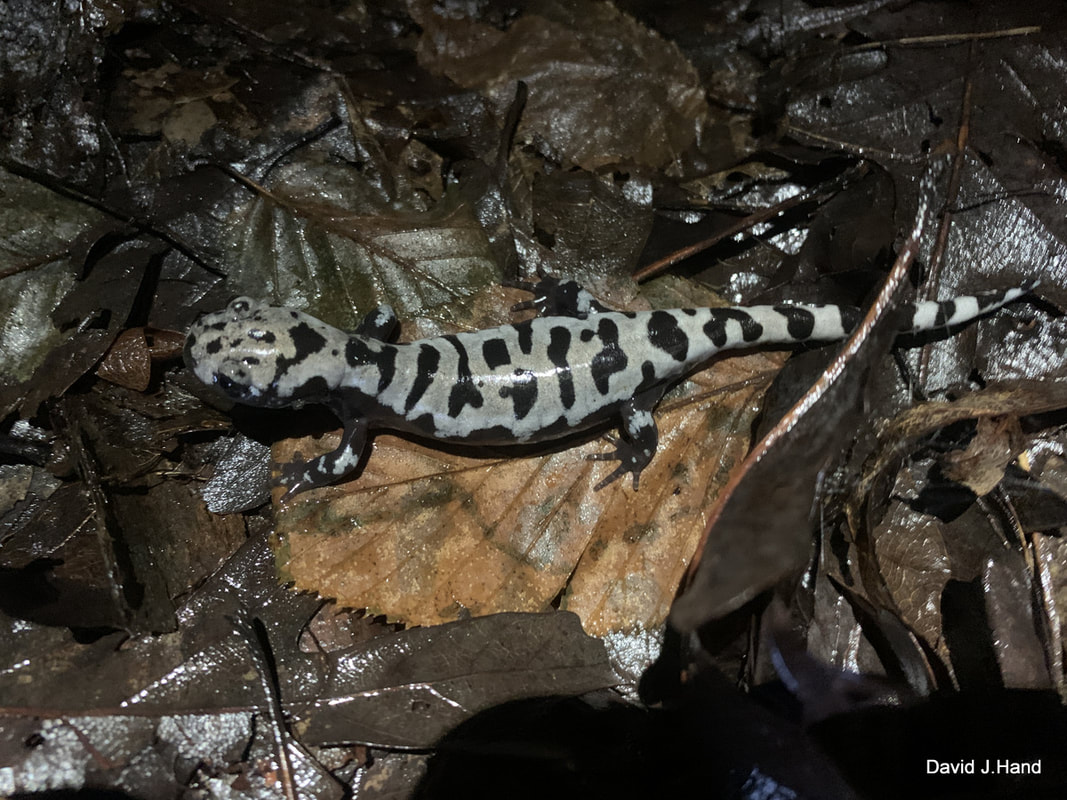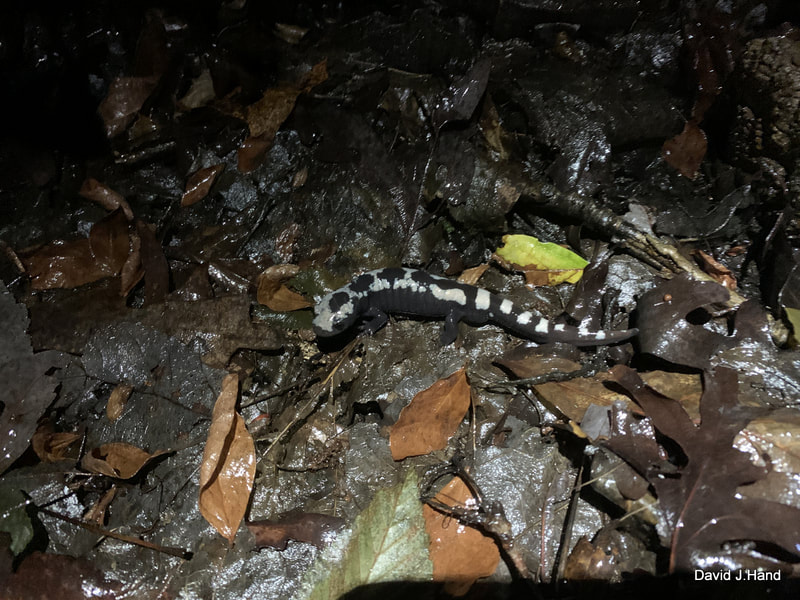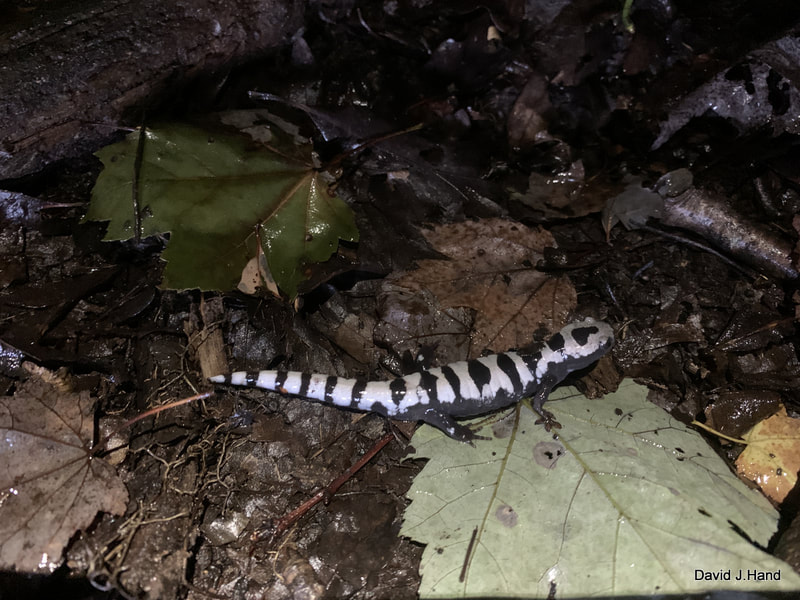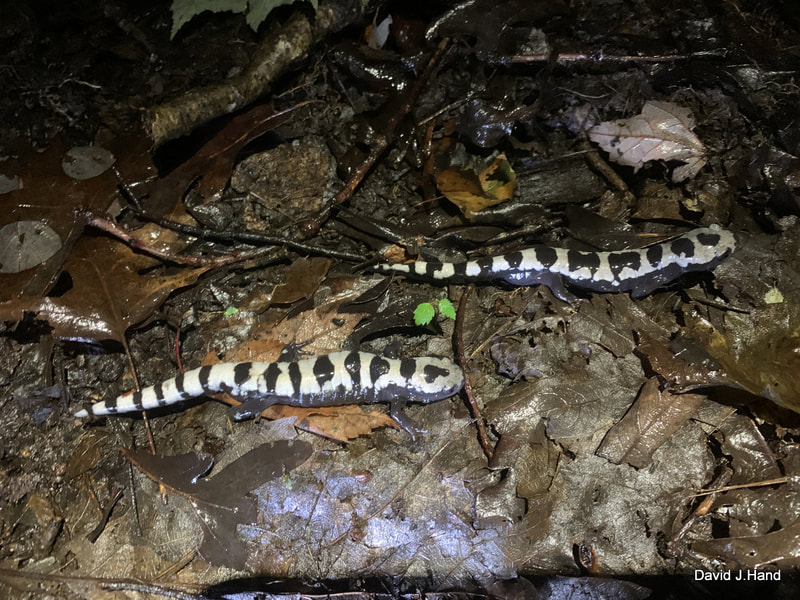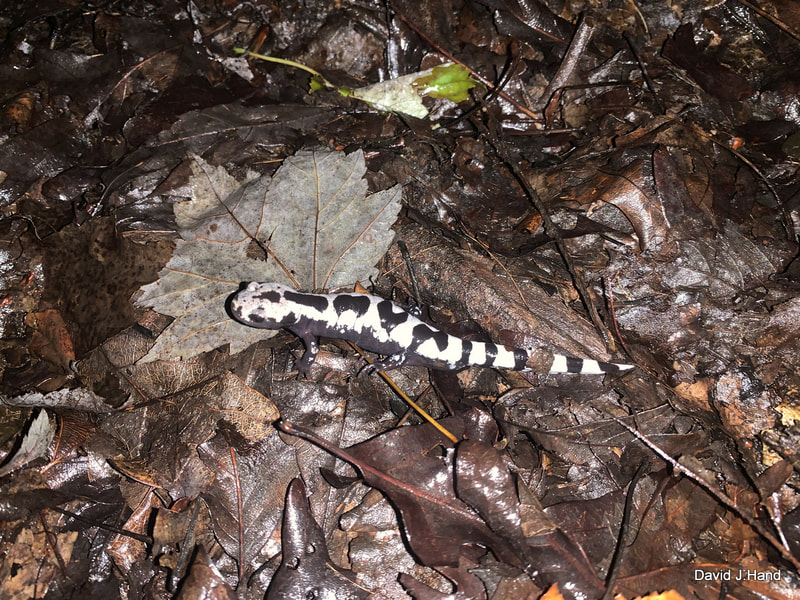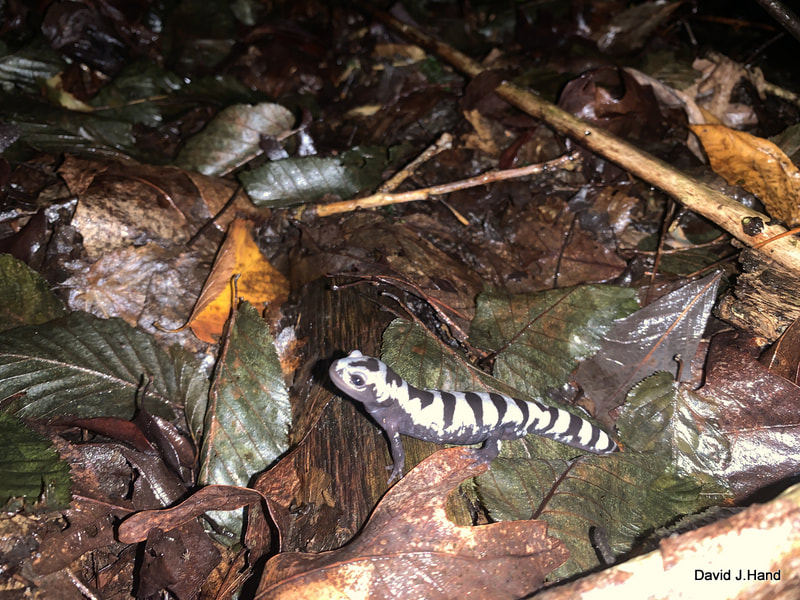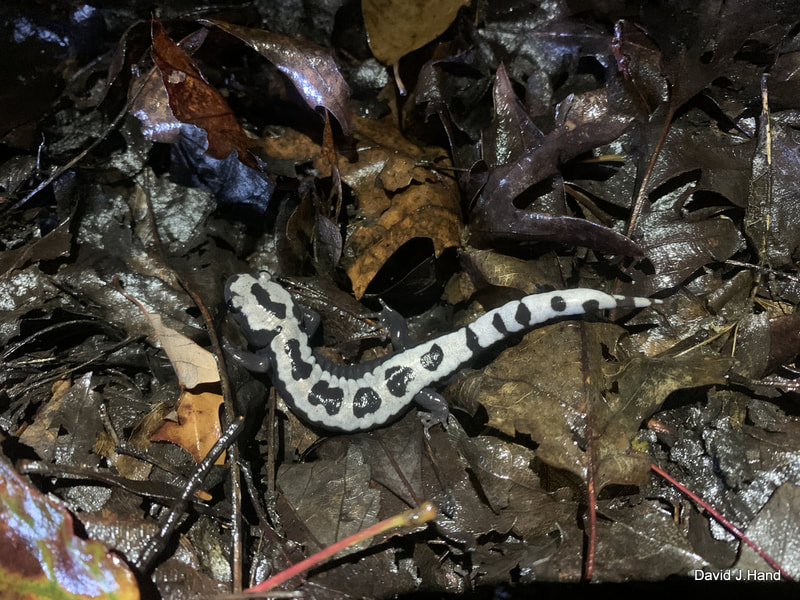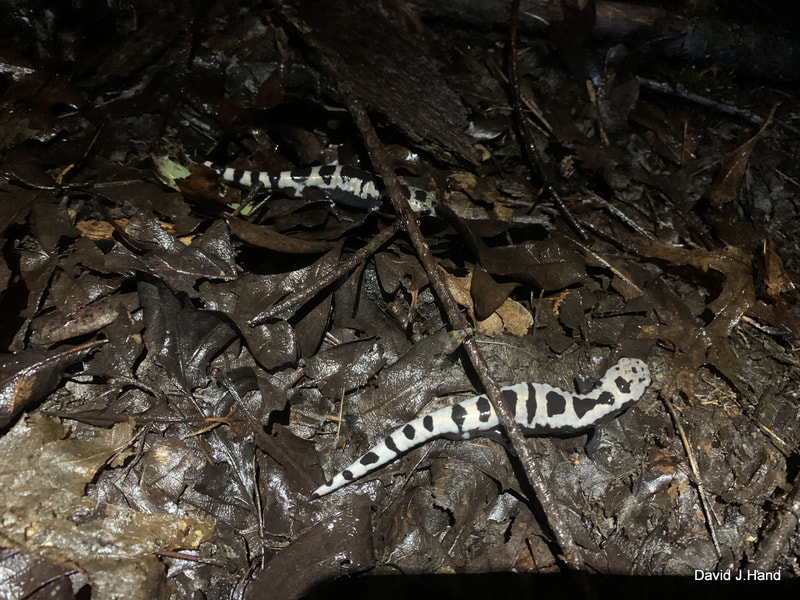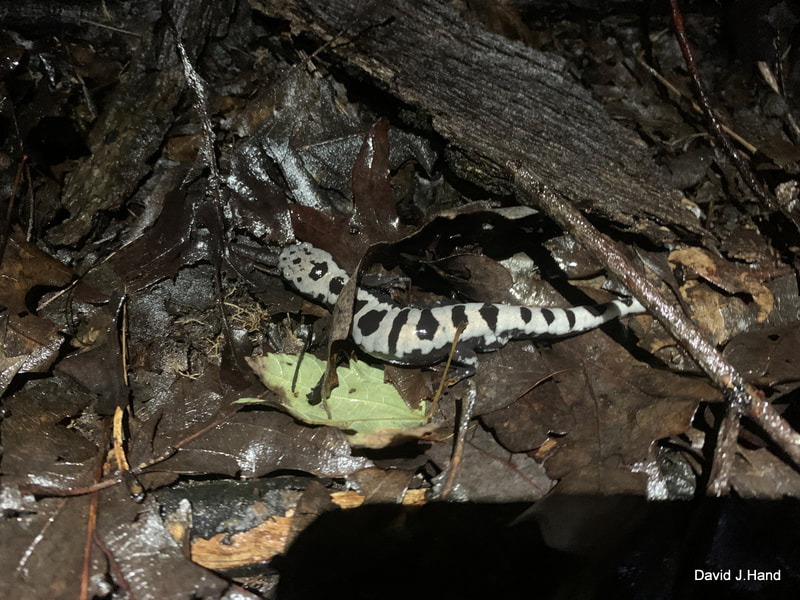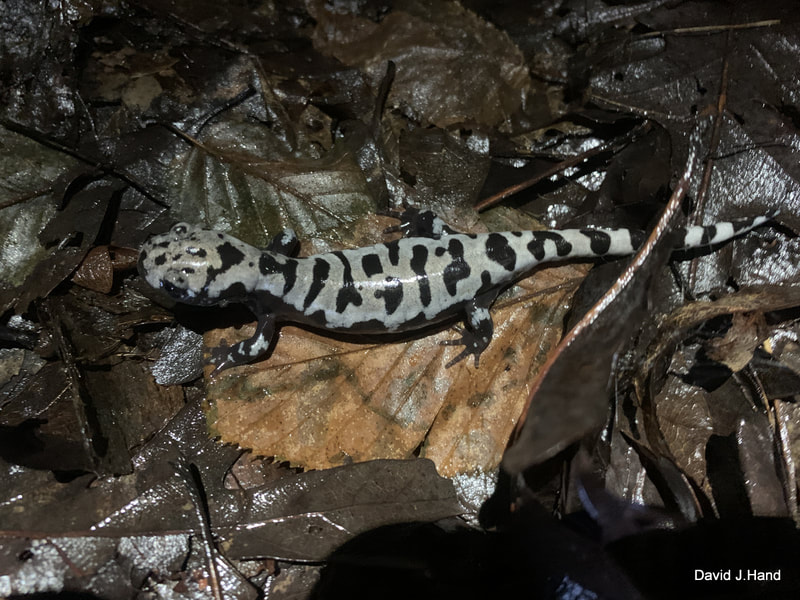Marbled Salamander [Ambystoma opacum] 3
Please remember while out herping in Pennsylvania you need to have a current fishing license and please please remember to follow decontamination procedures as not to spread germs,diseases and unwanted fungus to these important areas!If you not willing do follow these procedures,you should not be out!I personally always wear protective gloves[Nitrile] ,even if I don't handle salamanders and I do try to never touch them.I also spray myself [boots,waders,gloves,net,photographic tank...] with a chlorhexidine solution.
[Chlorhexidine, is a disinfectant and antiseptic that is used for skin disinfection]
[Chlorhexidine, is a disinfectant and antiseptic that is used for skin disinfection]
One week old Spotted Salamander larva compared to a five month old Marbled Salamander larva. Perry County, Pa. 4-29-24. [Ambystoma maculatum & opacum]
One week old Spotted Salamander larva compared to a five month old Marbled Salamander larva. Perry County, Pa. 4-29-24. [Ambystoma maculatum & opacum]
A comparrision of larvae at different stages of development. Top is a five month old Marbled Salamander larva, middle [3] are 1 month old Jefferson Salamander larva, and bottom is a week old Spotted Salamander larvae. [Ambystoma opacum & jeffersonianum & maculatum]. Perry County, Pa. 4-30-24
A five month old Marbled Salamander larva as compared to a 1 month old Jefferson larva. [Ambystoma opacum & jeffersonianum]. Perry County, Pa. 4-30-24
A beautifully light colored Marbled Salamander larva, possibly leucistic [lacking in pigment but not an albino]. notice it is lacking in thje normal grey pigmented chin. Also this larva is missing its left forelimb toes [most likely from another larva] but this is not unusual and they will regenerate. [Ambystoma opacum]. Pa. 3-29-24. Notice its tiny hind toes are seemingly translucent.
This beautifully light colored Marbled Salamander larva seems to be emitting a golden glow from inside, possibly leucistic [lacking in pigment but not an albino]. This larva is missing its left forelimb toes [most likely from another larva] but this is not unusual and they will regenerate. [Ambystoma opacum]. Pa. 3-29-24.
This beautifully light colored Marbled Salamander larva seems to be emitting a golden glow from inside, possibly leucistic [lacking in pigment but not an albino]. This larva is missing its left forelimb toes [most likely from another larva] but this is not unusual and they will regenerate. [Ambystoma opacum]. Pa. 3-29-24.
This beautifully light colored Marbled Salamander larva seems to be emitting a golden glow from inside, possibly leucistic [lacking in pigment but not an albino]. This larva is missing its left forelimb toes [most likely from another larva] but this is not unusual and they will regenerate. [Ambystoma opacum]. Pa. 3-29-24.
A beautifully light colored Marbled Salamander larva, possibly leucistic [lacking in pigment but not an albino]. notice it is lacking in thje normal grey pigmented chin. Also this larva is missing its left forelimb toes [most likely from another larva] but this is not unusual and they will regenerate. [Ambystoma opacum]. Pa. 3-29-24.
This picture certainly shows the advantages that Marbled Larvae [top two] has over hatching in the fall -winter over Jefferson Larvae [bottom] having hatched only recently. What are the disadvantages of eggs being laid in the fall, a great deal of the correct weather for one thing. Everything has to fall into place for the Marbled to be successful, eggs need to be laid in a dry vernal pool, but for eggs to successfully hatch they have to be inundated only after the embryos have fully developed, too soon and the embryos will perish. Sometimes the vernal pools are already filled and this creates a problem for the Marbled as they have no choice but to lay their eggs at the margins of the pool and their eggs never do get inundated as the pools are already at their highest point. Sometimes their pools never do fill with water and snow and the eggs never do get inundated till long after the eggs are no longer viable. Perry County, Pa. 3-29-24 [Ambystoma opacum & jeffersonianum].
Two well fed Marbled Salamander larvae, stuffed full of Fairy Shrimp. Notice the larva on top is missing the end of its tail, most likely from another larva. Larvae can and do prey upon each other. Notice to the tail is in the process of regenerating. Perry County, Pa. 3-12-24 [Ambystoma opacum]
Pool full of healthy Marbled Salamander Larvae. Perry County, Pa. 3-12-24 [Ambystoma opacum]
One the most beautiful and largest Marbled Salamanders that I have ever found, a male from two falls ago. Pa. [Ambystoma opacum]
The beauty of Eastern Fairy Shrimp [Eubranchipus vernalis] Seen with Marbled larva. Great food source for Marbled Salamander larvae
The beauty of Eastern Fairy Shrimp [Eubranchipus vernalis]. Great food source for Marbled Salamander larvae
Marbled larva [Ambystoma opacum] showing stomach full of Eastern Fairy Shrimp [Eubranchipus vernalis].
Look close to see a Marbled Larva [Ambystoma opacum] in a sea of newly hatched Fairy Shrimp. When Fairy Shrimp first hatch they tend to be this redish color, All the Marbled Larvae that I photographed this day in my photographic tank, their stomachs were swollen red with Fairy Shrimp [Eastern Fairy Shrimp Eubranchipus vernalis]. Video taken by Hunter Kauffman
This week I visited one of only a few vernal pools that I am aware of that has three different Ambystoma species using it for breeding purposes, Jefferson, Marbled and Spotted. The Jefferson were seen as their breeding season has begun, and the Spotted will no doubt be there also in the coming weeks. The Marbled having laid eggs last fall has the jump on the other two species, but I was struck how small these larvae were. Looking like they had only hatched less tha a month ago, you can clearly see they still have what is left of their balancers on either side of their heads. Larvae growth does slow down in winter, but I am guessing these didn't hatch until the heavy rains in January filled this pool enough for hatching to take place. Pa. 2-6-24
These Marbled Salamander Larvae, the first for me this year, are growing well and from their size are already a month old having hatched the beginning of November. Notice their balancers are now gone and you can see their large hearts in their throats. Pa. 11-30-23. [Ambystoma opacum]
Female Marbled Salamander. Perry County, Pa. 10-21-23 [Ambystoma opacum]. Shown in the act of moistening its left eye.
Female Marbled Salamander. Perry County, Pa. 10-21-23 [Ambystoma opacum]
Female Marbled Salamander. Perry County, Pa. 10-21-23 [Ambystoma opacum]
A close up of this Female Marbled Salamander's epidermis or skin reveals just how rough and full of tiny ridges the skin can be, looking very much like the dermal ridges of a humans finger print and having a porous appearance. Quite a difference from the usual smooth appearance that we associate with that of a wet salamander or other amphibian. [Ambystoma opacum]
Another picture of the female Marbled Salamander with unusual extra digit [toe] on its right forelimb, in this picture the normal digit [on the right] is curled under at the joint, making it appear as though it is the same length as the extra digit. Perry County, Pa. 10-21-23.
A female Marbled Salamander with unusual extra digit [toe] on its right forelimb, possible due to regeneration. Perry County, Pa. 10-21-23.
A georgeous female Marbled Salamander, with very little markings and a beauty all her own [Ambystoma opacum]. Perry County, Pa. 10-21-23
Two female Marbled Salamanders with nest and eggs under the same log [pictures above and below]. Perry County, Pa. 10-21-23. Notice the lack of markings on the female in the picture below.
A beautiful male Marbled Salamander [above and below] in a canopy of ferns, the first time I have ever observed a Marbled off the ground. Pa. 9-10-23
This handsome male Marbled was found well away from the vernal pool, at least a hundered yards or more. His territory for intercepting females was so far away in fact there was a road [dirt] between him and the vernal pool. He has leaned to stay away from all the "action", fighting and territorial squabbles, of vernal pools in breeding season. It has been estimated that up to 70 percent of all females upon reaching their home pools have already been bred, by males like our friend here, picking up a male spermatophore thus fertilizing her eggs. Time and experience have served this male well and has taught him to intercept females long before reaching their pools.
Handsome Male Marbled Salamander. Pa. 9-7-23 [Ambystoma opacum]
A Large female Marbled Salamander plump with eggs. Pa. 9-7-23. [Ambystoma opacum]
A beautiful female Marbled Salamanders full of eggs. Pa. 9-9-23 [Ambystoma opacum]
Three different female Marbled Salamanders full of eggs. Pa. 9-9-23
A beautiful Female Marbled Salamander full of eggs. Pa. 9-9-23
Another beautiful patterned male Marbled Salamander [Ambystoma opacum]. Pa. 9-7-23. Every Marbled Salamandef has a different and unique pattern, much like a finger print these patterns can be used to identify individuals over the years.
A female Marbled Salamander looking for a concealed, safe place to make a nest and and lay her eggs [oviposit] on a rainy night. She will stay wilh her eggs until they reach the hatching stage which can take 15 days but depending on conditions this can take up to 30 days for embryos to develop to the hatching stage. But some females do not always stay with their eggs, I have documented cases where the females leave right after ovipositing [most notably in cases of high water levels in and around their vernal pools], but eggs are fine to develop on their own. It should also be noted that eggs and embryos that get inundated with water before they are fully developed to the hatching stage will perish and die. So it takes a great deal timing and good luck for successful nesting, a good thing these and other salamanders are so long lived, 20 years or more. Pa. 9-10-23
This was the first time that I have ever encountered a Marbled Salamander off the ground, it was found in the canopy of ferns. A male, on a wet rainy night, just three nights ago [9-7-23] a great many Marbed were seen early on a rainy night after a short dry spell of weather. Most seen on that night were males staking out a one foot square territory to hopefully intercept a female Just three nights later again many Marbled were found but unlike the the first night [9-7-23] very few were males most seen were females looking for suitable nesting areas. And the later it got the more females appeared in places where moments before none were seen. I have often wondered how long it takes a female to make a nest and deposit [oviposit] her eggs after coming into contact with a Male and picking up his spermatophore. It would seem, after last nights experience, it takes just three days after having her eggs fertilized to [oviposit]. Pa. 9-10-23 [Ambystoma opacum]
A male Marbled Salamander with striking and unusual markings. Pa. 9-7-23 [Ambystoma opacum]
A handsome male Marbled Salamander testing the air for females [above and below] . Pa. 9-7-23 [Ambystoma opacum]
Two male Marbled Salamanders battling over territory and hopefully the right to court a female [Ambystoma opacum]. Pa. 9-7-23. Watch for the tail slaps.
Thursdays rain was enough to stimulate Marbled Salamanders to make their way to their home pools for breeding. We saw a great many, at least a hundred and probably more, most were males. This video shows four salamanders seen, notice the second is rather plump as it is a female full of eggs. Ambystoma opacum, Pa. 9-7-23. It is incredible to think that each of these salamanders can live 20 years or more and after a long hot summer follow the same route to find their pools year after year.
This vernal pool has Marbled larvae at many different stages of development and all suffer from injuries of some sort or another. Missing gills, limbs, and tails. And all show various stages of regeneration, amazing Pa. 6-1-23 [Ambystoma opacum]
Eastern Red Spotted Newt and Marbled Salamander Larva.
30 week old Ambystoma opacum larva. Pa. 5-19-23
These 30 week old Marbled larvae show all the signs that metamorphosis to land is well under way. The gular fold across the neck and and the more pronounced eye sockets are all more suited to a life on land. Within the month the gills will all but disappear and the larvae will leave their water home to a life on land, never to return to the water again. Pa. 5-19-23 [Ambystoma opacum]
These 30 week old Marbled larvae show all the signs that metamorphosis to land is well under way. The gular fold across the neck and and the more pronounced eye sockets are all more suited to a life on land. Within the month the gills will all but disappear and the larvae will leave their watery home to a life on land, never to return to the water again. Pa. 5-19-23 [Ambystoma opacum]
These 30 week old Marbled larvae show all the signs that metamorphosis to land is well under way. The gular fold across the neck and and the more pronounced eye sockets are all more suited to a life on land. Within the month the gills will all but disappear and the larvae will leave their watery home to a life on land, never to return to the water again. Pa. 5-19-23 [Ambystoma opacum]
Three quarters on the Pennsylvania Ambystoma salamander larvae tree, all in one vernal pool! 30 week old Marbled Larvae [top] 8 week old Jefferson [middle] 4 week old Spotted [bottom]. Pa. 5-19-23. Ambystoma opacum, A. jeffersonianum, A. maculatum
8 week old Jefferson Salamander larva [Ambystoma jeffersonianum]. Of the three Ambystoma species, Jefferson, Marbled, and Spotted, there is no mistaking Jefferson at this age. They are wider and have a chunkier appearance and also have a distinct line separating the white of the underside and the grey green of the side. They can also have very little if any spotting along the side as Marbled or Spotted will have at this age, also notice those longer dainty toes [compared to Spotted and Marbled], a sure sign of Jefferson. Notice too the Hind limbs are just starting to make an appearance. Pa. 5-19-23
28 week old Marbled Salamander larva with a 8 week old Jefferson salamander larva, Pa. 5-19-23. This Marbled larva is well on its way to metamorphosing and leaving the vernal pool in the next month, the Jefferson will be leaving in July. The Marbled hatched last November while the Jefferson hatched in late March, this Jefferson will be the same size as the Marbled in less than half the time. The Marbled does have an advantage hatching in the fall and a head start, but if the Jefferson and Spotted survive the first few weeks [being able to avoid predators such as the Marbled] they grow at an alarming rate. I never tire of seeing this amazing transformation, and the speed in which it occurs, and also seeing the two different survival strategies employed by these three magnificent Ambystoma species, and pondering just what would have prompted this difference in breeding strategies eons ago.
Leucistic Marbled Salamander larva [above] from several years ago pictured with an adult male leucistic Marbled [below] seen at the same pool last fall. There is no way to tell but I like to think that this was the same larva that I had watched grow and metamorphose all those years ago. [Ambystoma opacum]. "Leucism is a condition in which there is a partial loss of pigmentation in an animal resulting in white , pale, or patchy coloration of the skin, hair, feathers, scales or cuticle, but not the eyes." A very special creature indeed!
One very handsome 24 week old Ambystoma opacum larva. Pa. 5-9-23-Notice the unusual blotchy markings on the side of its face, under the eye and continuing under the chin, and the silvery sheen to its side. Marbled larvae almost always display a darker coloration. Their surroundings, like many creatures, can and do play a role in determining their over all coloration, as the try to blend in and become less noticeable [camouflage]
Pictures showing the gills of a 24 week old Ambystoma opacum larva, you can see tiny blood vessels. I have noticed over the many years of observing these larvae, that the gills get a more vivid reddish color the the closer the larvae get to metamorphosing. Pa. 5-9-24
24 week old Ambystoma opacum larva with a two week old A. maculatum larva. Pa. 5-9-23
Of the four 24 week old Marbled larvae photographed this day, all had some damage to contend with including this this larva missing his left rear foot. All the others were missing gills on one side or another, but all looked very healthy and remembering their ability to regenerate limbs, they are all well on their way to metamorphosis to land. Pa. 5-9-23 [Ambystoma opacum]
One of the most handsome Marbled larva I have ever photographed. From the mottling on the side of the face to the gold dust flaking on the gills, and an over all beautiful lighter coloration than most Marbled larvae. In another month this 24 week old larva and others like it will be ready to metamorphosis and leave their watery home to a life on land. Pa. 5-9-23
An impressive bowel movement by a Marbled Salamander larva. Pa. 5-9-23. From start to finish it took a full 10 minutes.
Just a few weeks ago this pool was all but dried up and I feared the worst for the Salamander larvae in it, there are Jefferson, Spotted and Marbled here. After some recent rains the pool is now just about full and larvae were seen everywhere, rain just in the nick of time, what a wonderful sight! Pa. 5-9-23
20 week old Marbled Salamander larvae [Ambystoma opacum]. Pa. 4-24-23
20 week old Marbled Salamander larva seen with a newly hatched Jefferson Salamander larva. Pa. 4-24-23. It is hard to believe that this Marbled larva was the same size as the Jefferson a mere 20 weeks ago. It will not take the Jefferson larva nearly as long to reach the same size as it will be growing in the spring and summer vs. fall and winter as the Marbled does, if he makes it that is, as Marbled will be feasting on these tiny larvae every time one dares to get too close! [Ambystoma opacum & jeffersonianum]
Another spring and another bad situation developing here in Pennsylvania. Very little spring rain and a winter with next to no snow leads to devastation like this. This is one of the few vernal pools that I know that contain Marbled, Jefferson, and Spotted larvae. In the small pools there are many large Marbled larvae, large for this time of year having hatched only some 12 weeks ago in early December. But remembering larvae metamorphosis speeds up when pools start to dry up and oxygen levels drop. They are developing fast and their lungs are functioning as they are coming to surface for frequent gulps of air, you can see their tiny ripples on the surface of the drying pools. They, the Marbled, stand a chance of completing their metamorphosis to land but the newly hatch Jefferson and Spotted [egg masses with embryos exposed to the air, you could see the ready to hatch embryos moving inside their eggs] have no chance of surviving this year once again, unfortunately. Pa. 4-24-23
I have always found balancers on the heads of the Ambystoma salamander larvae that I am familiar with, Jefferson, Spotted, Marbled, fascinating. They provide stability for larvae until their forelimbs can provide balance and locomotion, and in the meantime balancers, located on either side of the head, act as stabilizers keeping the larvae upright and from sinking. When the forelimbs become developed enough and the balancers are no longer needed they are absorbed into the larvae. I have long noticed what I thought was a connection between how developed the forelimbs were at the time of hatching and the size of the balancers. These pictures show a correlation between forelimbs at hatching and the size of the balancers. The first two pictures [5&4] show Jefferson larvae at the time of hatching that have no developed forelimbs only what I refer to as "post" where the forelimbs will eventually be. Notice how large the balancers are, as these larvae need them to help navigate and stay "balanced" until forelimbs appear. The third picture [3] shows a Spotted larvae right after hatching, notice the forelimbs are underdeveloped but much more developed than that of the Jefferson. If you look close you can see tiny digits where the toes will be. Again you have large balancers on the head but not as large as that of the Jefferson larvae. The Spotted larvae will also depend on their balancers for balance and locomotion as they try to navigate in their new watery home. Then we come to the Marbled larvae pictures 1&2. Notice they hatch with completely developed forelimbs, you can clearly see their toes even on the embryo inside the egg [2]. Notice their balancers are tiny, even hard to see. When Marbled hatch they are already able to propel themselves through the water and balancers are not needed or at least very little. I can't help but wonder about the fact that that Marbled show very tiny balancers, when they aren't really needed, isn't a reflection of evolution and a time when Marbled larvae had much larger and more pronounced balancers for their needs at a time long ago. I think these pictures show a direct correlation in forelimb size at hatching and balancer size. Balancers are an amazing adaptation that is provided by nature and evolution to help newly hatched larvae as they try to negotiate and maneuver in their new watery home until their forelimbs are developed and are strong enough and the balancers are no longer needed.
This 13 week old Marbled Salamander larva appears to be eating well, dinning on all sort of rich vernal pool fair, including Daphnia, Copepods, Fairy Shrimp, and all sorts of insect larvae. This and other salamander larvae will eat just about anything that dares to get too close to that powerful mouth, including other larvae and even larvae of its own kind. Anything that gets too close, the larvae simply opens its mouth, creating a powerful suction, and in less than blink of an eye, the morsel is gone. Its no wonder that I see a great many larvae with tail bites and missing limbs! Notice too the grey pigmented chin, a sure indicator of a Marbled larvae. You can also see the multi chambered heart. And also notice the hind limbs are really becoming noticeable as you can just make out the tiny digits of what will become the toes. Isn't nature wonderful as it is hard to imagine this beautiful larva will one day become the magnificent Marbled Salamander [Ambystoma opacum]. Pa. 3-21-23
Marbled Salamander larvae feeding on Wood Frog eggs. Pa. 3-22-23.
15 week old Marbled salamander larva showing that telltale grey pigmented chin. Pa. 3-6-23. Also shown in the act of defecating
I found this lone Marbled larva in the deepest part of the pool well away from the others in the shallows. I guess he is a loner and doesn't care for the crowd!, he does seem to have this part of the pool to himself. Pa. 3-6-23 [Ambystoma opacum]
15 week old Marbled Salamander larva [Ambystoma opacum]. Having hatched in late November early December this larva and many others like it were filled to the busting point, with what I do not know but whatever it is it seems to be very plentiful at time time of year, almost looking like tiny eggs. A great percentage of the larvae were seen in the shallows and last years leaf litter feeding. Pa. 3-6-23
Hundreds Marbled Salamander larvae found in this particular vernal pool. Pa. 3-6-23. A wonderful sight to see!
Marbled Salamander larvae [Ambystoma opacum] and Wood Frog eggs [Rana sylvaticus]. Many hundreds of larvae were seen at this pool yesterday, a great sight! No sign of Spotted activity in this particular pool as of yet, but with the help of recent rains, this pool is full of water to the point of overflowing. Pa. 3-6-23. The reflection of leaves from above gives the impression of a bright fall day.
Female Spotted Salamander [Ambystoma maculatum]. Spotted Salamanders and other amphibians are on the move to their breeding pools, so please be careful and aware on rainy damp nights while out driving. This female was full of eggs and was happy to make it to her pool and gave me a good wink! Pa.. Imagine for 20 years or more these salamanders not only return to their same specific pools but use the same route to and from these pools year after year. Scientist are still trying to unlock the secrets of how they find and use the same trails year after year. I suspect it is their powerful sense of smell, and their keen ability to distinguish different scents around them. When observing Spotted, Jefferson and Marbled salamanders looking for a mate and they come into contact with one another it only takes a quick, almost unnoticeable to the human eye, vent sniff and they have already determined if they have found the right partner. A small example of their truly remarkably keen sense of the world around them that you and I can never fully appreciate or understand. And isn't that just fine!
Fairy Shrimp [Anostraca] with Marbled Salamander larvae.[Ambystoma opacum]. 2-10-23
Close up picture of a Fairy shrimp [Anostraca] with 10 week old Marbled salamander larva [Ambystoma opacum]. Pa. 2-10-23. You can see her brood pouch which appears empty, but if you look close you can just see her tiny eggs developing inside and it won't be too much longer that they will be more visible, as they grow in size.
10 week old Marbled Salamander larva [Ambystoma opacum] with Fairy Shrimp [Anostraca]. Pa. 2-10-23
The amazing Fairy Shrimp [Anostraca]. Pa. 2-10-23. An excellent food source for many vernal pool creatures, including salamander larvae.
A well fed Ambystoma opacum larva, most likely on fairy shrimp which were very abundant in this particular pool. At 10 weeks old notice the two tabs where the hind limbs will be. Pa. 2-10-22
Four week old Marbled Salamander [Ambystoma opacum] Larva. Pa. 1-4-23
At just 1/2 inch [12.7 mm] these Marbled Salamander larvae in this particular pool have just hatched in the last two weeks as evident by not only their size but still having balancers on the sides of their heads. Looking back these larvae hatched sometime in late December as the eggs and embryos finally were inundated by water allowing the embryos to escape their eggs and hatch. I believe this to be the best picture that I have ever taken showing exactly where the balancers exit the side of the head. [Ambystoma opacum] Pa. 1-4-23. Balancers are paired rod like projections on the sides of newly hatched larvae heads that assist in helping the larvae in maintaining their balance and also assist in keeping them from sinking until their forelimbs become strong enough for locomotion through their new watery home. After a couple of weeks they are no longer needed and are absorbed back into their bodies. I have seen balancers on newly hatched Jefferson and Spotted larvae and they are much more pronounced then those found on Marbled, perhaps due to the fact that Marbled hatch with much more developed forelimbs then either Spotted or Jefferson larvae.
Four week old Marbled Salamander [Ambystoma opacum] larvae. Pa. 12-22-22. Having hatched sometime in late November.
Four week old Marbled Salamander [Ambystoma opacum] larvae. Pa. 12-22-22. Having hatched sometime in late November.
Four week old Marbled Salamander [Ambystoma opacum] larvae. Pa. 12-22-22. Having hatched sometime in late November.
Four week old Marbled Salamander [Ambystoma opacum] larvae. Pa. 12-22-22. Having hatched sometime in late November. The large circular object in the throat area is the heart and notice the grey pigmented chin, the only ambystoma larvae to have this and a good way to identify opacum larvae.
Four week old Ambystoma opacum larvae. Pa. 12-22-22. Having hatched sometime in late November.
The last female Ambystoma opacum that I saw with eggs this fall [also the log she was found under], all they need now is more rain to inundate the eggs so hatching can take place. Pa. 10-22-22. This pool and soil are completely different from all other areas that I am familiar with as the soil is made up of limestone and when mixed water it turns into a thick chalky, and I believe the technical term is, mess! You do not want to be caught trying to walk around in it, as it like being stuck in clay! This pool is also used by Jefferson and Spotted salamanders, one only two places I know of that are used by all three for breeding. For some unknow reason even in years with sufficient water the Marbled larva seem to disappear before metamorphosis occurs and the Spotted and Jefferson complete metamorphosis just fine. Last year though I was very excited to see many Marbled larvae survive to reach metamorphosis.
|
These two beautiful female Ambystoma opacum have their nest under the rock in the foreground at the very limits of this vernal pools, what would be the water high point when full. This the first nest that I have ever seen under a rock [it had a hollowed area perfect for a nest]. Found by a friend, it was her first adult Marbled Salamanders, what a thrill it was to be with her at her first find, just to see the excitement on her face! What a great day for "Team Salamander", as we like to call ourselves ! Pa. 10-22-22
|
A beautifully colored male Marbled salamander from a few years ago [above and below]. Pa. 10-19-20
Female Ambystoma opacum. Pa. 9-22-22
Female Ambystoma opacum. Pa. 9-22-22
Female Ambystoma opacum. Pa. 10-2-22
This female A. opacum certainly left an impression on me, she was the only visible salamander left at the vernal pool and it was late in the breeding season, at least in my area. Was she late to the breeding area and was in search of a male, or had she already been bred and was searching for a place to lay her eggs? We will never know her story, but she seemed out of place and lonesome to me and was definitely in search of something. I don't think that I will ever forget her. Pa. 10-2-22
Male Marbled Salamander [Ambystoma opacum]. Pa. 9-22-22
A male Ambystoma opacum on his territory waiting to intercept females, his territory was 50 to 75 yards from the vernal pool. Pa. 9-22-22
Leucistic male Marbled Salamander [Ambystoma opacum]. Pa. 9-11-22.
Leucistic male Marbled Salamander [Ambystoma opacum]. Pa. 9-11-22.
Leucistic male Marbled Salamander [Ambystoma opacum]. Pa. 9-11-22.
Leucistic male Marbled Salamander [Ambystoma opacum]. Pa. 9-11-22.
Leucistic male Marbled Salamander [Ambystoma opacum]. Pa. 9-11-22.
Leucistic male Marbled Salamander [Ambystoma opacum]. Pa. 9-11-22.
Leucistic male Marbled Salamander [Ambystoma opacum]. Pa. 9-11-22. "Leucism is a condition in which there is partial loss of pigmentation in an animal resulting in white , pale , or patchy coloration of the skin , hair, feathers , scales or cuticle, but not the eyes as in a albinism."-from Wikipedia
Male Marbled Salamander [Ambystoma opacum]. Pa. 9-22-22
Male Marbled Salamander [Ambystoma opacum]. Pa. 9-22-22
Male Marbled Salamander [Ambystoma opacum]. Pa. 9-22-22
Male Marbled Salamander [Ambystoma opacum]. Pa. 9-22-22
A large, old beautiful male Ambystoma opacum. Pa. 9-22-22
This large, old beautifully colored male Marbled Salamander has a different strategy in the breeding season from all the other males. His territory for intercepting females isn't in a the dry vernal pool, or even around the perimeter of the pool. His territory was 50 to 75 yards away from the pool, across a dirt road, in the forest. Studies have shown that up to 40 percent of females reaching the pool have already mated with a male such as this smart old fellow. Pa. 9-22-22 [Ambystoma opacum]
Two week old Ambystoma opacum embryo, showing eye development. Pa. 10-2-22
Female Ambystoma opacum. Pa. 9-5-22
These eggs and embryos having been found on the ground at the entrance to a nest show embryos in mid development, having been ovipoist [eggs laid] at least two weeks ago and they have at least another two weeks of development to go. Notice yo can see tails, head, and eyes. I am always amazed when I see unprotected eggs like these just laying about and in full development, that they don't seem to be taken or preyed upon. There must be some sort of protection going on here such as scent enzymes to protect the eggs. Pa. 10-2-22. Ambystoma opascum are one of only two species of Ambystoma salamanders to lay their eggs on land and not in the water.
After seeing eggs on the open ground and leaf litter inside a dry vernal pool I thought it strange, but after closer examination found a small opening and the female down inside her nest with many more eggs. Not under a log as usual but having simply dug a nest in the leaf litter. Certainly one of the more unusual nest that I have found. You can just see her down inside the opening in the middle of the picture. Pa. 10-2-22 [Ambystoma opacum]
Male [top] female [below] Ambystoma opacum together. Notice the swollen cloacal region [behind the hind limbs] of the male compared to that of the female cloacal. Also notice how much heaver the female looks, as she is full of eggs. Pa. 9-5-22. Ambystoma opacum are one of only two Ambystoma species that mates and oviposits [deposits eggs] on land, and I can't help wondering if courtship has already taken place, " When paired male and female often move in a circular fashion as they mutually nudge their cloacal regions. The male eventually moves forward along the body of the female and, while undulating his tail and raising his body, deposits a spermatophore on the substrate. The female position her chin and body over the spermatophore while being led forward by the male. The female then position her cloaca over the sperm cap and picks up the seminal fluid from the top of the spermatophore. In some cases the female does not follow the male, but simply noses about until a spermatophore is found." from James W. Petranka and the wonderful book "Salamanders of the United States and Canada"
Oh the joy, the first female with nest and eggs of the fall breeding season. It was very dry under the log she chose, notice how soiled the eggs are. And I also noticed that some of the eggs were smaller than the eggs I normally have seen in the past . Pa. 10-2-22 [Ambystoma opacum]. I always find it fascinating how they carve a nest in the leaf litter and soil, they are powerful diggers even in hard packed soil.
A beautiful Female Ambystoma opacum, Pa. 9-22-22. Notice the single white, perfectly round spot on her head, I guess we will call her spot!
Female Ambystoma opacum, Pa. 9-22-22
Female Ambystoma opacum, Pa. 9-22-22
Female Ambystoma opacum, Pa. 9-22-22
Male Ambystoma opacum patiently waiting to intercept a female. Pa. 9-11-22. Maybe she will be impressed with his camouflage!
An incredible male leucistic Ambystoma opacum. Pa. 9-11-22
Male Marbled Salamander with its foot on a Viscid violet Cort Mushroom [Cortinarius iodes]. Pa. 9-5-22 [above & below]
After seeing around 70 males at this vernal pool on two different nights [9-5 & 9-11, both rainy nights] this is the is the first female seen at this particular pool, I ending up seeing three females and one male, again a rainy night. Pa. 9-22-22. On the two non rain nights at this pool not one salamander was observed. It would seem rain plays a key part in Ambystoma opacum breeding season, and is necessary for Marbled to become active, and there for breeding to take place.
I don't see anything! A male Ambystoma opacum has a good hiding spot. Pa. 9-11-22
Two male Ambystoma opacum crossing paths, looking for a territory to stake out and call their own in hope of intercepting a female. Pa. 9-5-22
A large male after the rain, just listen to those Katydids! In two nights I saw 70+ males at one vernal pool, I am sure some were the same. Ambystoma opacum. Pa. 9-5&11-22. Still not one female or nest seen.
Don't ever let anyone tell you that salamanders are slow! Ambystoma opacum. Pa. 9-5-22
What amazing find, a male leucistic Marbled Salamander [Ambystoma opacum]. I was struck by so many things upon seeing this beautiful creature, not only the unique coloration but the pink limbs instead of the usual black. You can see veining in the left hind limb, as the limbs almost appear translucent. I had gotten to watch a leucistic larva grow and reach metamorphosis to land in this very pool a few years ago. And I have always wondered since if he made it facing all the perils that go along with not only being a young salamander, but a salamander with such unusual markings. So I would like think this is the very same salamander, but of course there is no way to tell that, so I will just imagine it! Pa. 9-11-22
Two male Ambystoma opacum on their territories waiting to intercept females on their way to the vernal pool. Pa. 9-5-22. I never saw anything like this, 40+ males in one night!
Four male Ambystoma opacum in a steady rain. After a very long dry spell this rain really seem to stimulate them make them active, at least the males anyway. Of the 40+ Marbled Salamanders seen of this night all were males, as they are the first to arrive and stake out a one foot square territory in and near the vernal pool and wait for the females to arrive. Pa. 9-5-22
Two male Ambystoma opacum in the rain. Pa. 9-5-22. Notice the male on left has lost the tip of its tail. Notice too the vent check the two males make for just a fraction of a second, the other can be seen testing the air for scent before moving on. Very interesting interaction and behavior.
Two [above and below] uniquely patterned and beautiful male Ambystoma opacum. Pa. 9-5-22
These two male Marbled Salamanders checked each others vents for only a fraction of a second and immediately a intense battle ensued, tail slaps and pushing each other around and trying to get under one another to gain an advantage. A Very heated struggle to claim a one foot square territory outside the vernal pool in hopes of intercepting females on their way to the pool. This behavior is something that I have never witnessed before. Upon listening to the video later I could audibly hear "squeaks and barks and chirps" associated with the battle. I am not aware of salamanders making sounds and I cannot say for sure if the sounds are emanating from the salamanders or an unknown source, such as me or my cell phone. More study is definitely needed. But nevertheless to be able to capture this behavior after so many years of studying this salamander was to say the least, very overwhelming for me.. All of this was in the dark and in a driving rain. Pa. 9-5-22, 9:00 pm [Ambystoma opacum]. Note I have since learned that when salamanders become agitated they can and do make sounds such as described above, "squeaks and barks and chirps". So it is entirely possible the sounds heard in the video are in fact emanating from the salamanders.
First Marbled Salamander of the breeding season, a male in a steady rain. Pa. 9-5-22 [Ambystoma opacum]
Only a few of the 40+ males seen in the rain waiting to intercept females on their way to the vernal pool. Pa. 9-5-22 Ambystoma opacum. And this was only at one corner of the vernal pool, I did not venture further for fear of stepping on a salamander as they were everywhere underfoot. I have never witness anything remotely like Monday night! 8:00-9:30 pm




